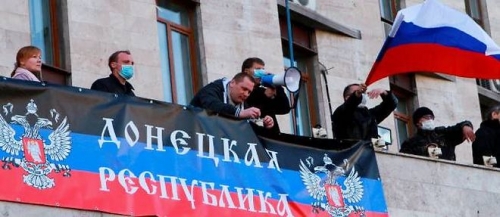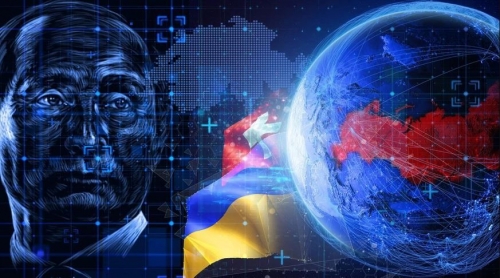dimanche, 10 avril 2022
De la crise sanitaire au conflit en Ukraine et à la frénésie pour l'OTAN

De la crise sanitaire au conflit en Ukraine et à la frénésie pour l'OTAN
Markku Siira
Source: https://markkusiira.com/2022/04/08/koronakriisista-ukrainan-konfliktiin-ja-nato-kiihkoon/
Pour de nombreux observateurs, les événements en Ukraine offrent un soulagement après les années stressantes de la crise sanitaire. Désormais, l'ennemi invisible, potentiellement tapi derrière chaque toux et chaque éternuement, a été remplacé par un conflit militaire qui peut être regardé comme un divertissement violent et palpitant.
Comme le dit Johan Eddebo, "nous disposons désormais d'un jeu moral plus accessible et plus varié, dans lequel nous pouvons canaliser nos émotions dans une rage contre l'image de l'ennemi ou nous identifier de manière moralisatrice à la victime actuelle".
La quasi-totalité des ONG humanitaires font actuellement leur marketing principalement sur la base du sort des Ukrainiens, qui est sans doute réel, mais qui reste en deçà des crises du Yémen ou de l'Afghanistan, par exemple, dont les commanditaires ne sont pas punis ou soumis à des sanctions.
De nombreux Finlandais participent également à cette nouvelle opération psychologique, au moins en ajoutant un petit drapeau ukrainien bleu et jaune sur leurs profils de médias sociaux. Ils expriment ainsi leur identité, leur appartenance à un groupe et leur dévotion à certains récits, symboles et autorités.
Cela apporte un changement par rapport à l'anxiété et aux contraintes de l'ère covidienne. Les détracteurs "pervers", et même certains des critiques de la politique sanitaire, qui avaient auparavant présenté leur série de vaccinations, se déchaînent maintenant par réflexe contre Poutine sur les médias sociaux. Il n'y a pas besoin de débat rationnel et la fervente "semaine de la haine" orwellienne dure depuis plus d'un mois maintenant.
Que se passe-t-il ensuite ? Je pense qu'à un moment donné, la "fatigue de la compassion" prendra le dessus et que les gens recommenceront à se concentrer sur leurs propres problèmes. Nous l'observons déjà en France, par exemple, où, à l'approche des élections présidentielles, les préoccupations se concentrent sur leurs propres moyens de subsistance, la hausse des prix et d'autres défis plus domestiques.
En Finlande, les gens applaudissent toujours les performances de Zelensky. Le gouvernement, sous la direction du président et avec le soutien de l'opposition bidon, fait un bond en avant en matière de politique de sécurité à bord du navire de guerre de l'OTAN. Cela n'est pas non plus particulièrement surprenant, puisque des mouvements pervers ont déjà été effectués dans la politique finlandaise auparavant, par exemple lorsque le pays passait à l'euro.
Que faut-il attendre de la menace de l'OTAN, alors que même un fonctionnaire devenu membre du Parlement appelle publiquement à "écraser militairement" la Russie ? L'élite finlandaise délirante aura le temps de rendre tout le pays malheureux, même si le monde va dans l'autre sens. À l'avenir, les relations avec l'Est seront à nouveau plus importantes que le transatlantisme.
Même la Chine sait que la Finlande envisage de rejoindre l'OTAN. Le porte-parole du ministère chinois des Affaires étrangères, Zhao Lijian, a déclaré lors d'une conférence de presse que la position de la Chine sur l'expansion vers l'est de l'OTAN est très claire. L'OTAN est un produit de la guerre froide qui aurait dû appartenir au passé depuis longtemps. "Nous conseillons aux pays concernés d'être prudents dans le développement de leurs relations avec l'OTAN", a déclaré M. Zhao.
11:55 Publié dans Actualité, Affaires européennes | Lien permanent | Commentaires (0) | Tags : ukraine, otan, finlande, europe, affaires européennes |  |
|  del.icio.us |
del.icio.us |  |
|  Digg |
Digg | ![]() Facebook
Facebook
samedi, 09 avril 2022
La guerre américaine en Ukraine est en réalité une guerre contre l'Allemagne
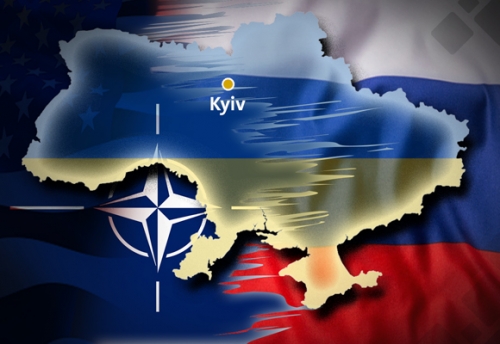
La guerre américaine en Ukraine est en réalité une guerre contre l'Allemagne
Valentin Katasonov
Source: http://geoestrategia.es/index.php/noticias/politica/37335-la-guerra-estadounidense-en-ucrania-es-en-realidad-una-guerra-contra-alemania
Il est connu que toute sanction économique s'accompagne d'un effet boomerang (conséquences négatives pour l'État à l'origine des sanctions). La force de l'impact d'un boomerang varie fortement d'un pays à l'autre. L'effet boomerang est beaucoup plus fort pour l'Europe que pour les États-Unis. Et au sein de l'UE, la propagation des effets négatifs est également très importante.
Les sanctions de 2014 ("pour la Crimée") ont varié considérablement quant à la force de l'effet boomerang. Une étude de Matthieu Crozet et Julian Hinz a tenté de calculer les pertes subies par l'Occident du fait de la réduction des exportations de marchandises vers la Russie jusqu'à la mi-2015. Les pertes se sont élevées à 60,2 milliards de dollars et seulement 17,8 % de ces pertes étaient dues à l'introduction de contre-sanctions par Moscou. Les 82,2 pour cent restants sont des pertes que l'on peut qualifier de "tir dans le pied". 76,7 % de ces pertes (plus de 46 milliards de dollars) ont été subies par les pays de l'UE. Et seulement 23,3% correspondaient au reste des pays occidentaux (USA, Canada, Australie, Nouvelle-Zélande, Suède, Suisse, etc.).
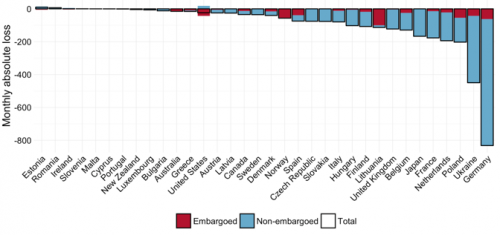

Au sein de l'UE, le résultat négatif de la première vague de sanctions est également très différent. L'étude "Les leçons des sanctions de l'UE contre la Russie en 2014-2015" fournit des estimations des dommages subis par les différents États membres de l'UE jusqu'à la mi-2015. Voici la liste des pays ayant subi les plus grosses pertes (en millions d'euros) : Allemagne - 2 566 ; Italie - 668 ; France - 612 ; Pays-Bas - 591 ; Pologne - 521. Si l'on prend des indicateurs relatifs, il s'avère que pour l'Allemagne (première économie de l'UE), ils sont trois fois plus sensibles que pour la France et l'Italie.
Aujourd'hui, dans le contexte d'une nouvelle guerre de sanctions contre la Russie, nous voyons une image similaire. Début mars, le Kiel Institute for World Economics (Allemagne) et l'Institut autrichien de recherche économique (WIFO) ont préparé un rapport opportun sur les conséquences économiques des sanctions prévues par l'Occident. Selon ce document, les pertes pour les économies de tous les pays initiant des sanctions sont estimées à 0,17 % du PIB total. L'Allemagne et l'Autriche subiront des pertes de 0,4 et 0,3 pour cent du PIB annuel respectivement, tandis que les États-Unis ne subiront que des pertes de 0,04 pour cent. Parmi les alliés, la Lituanie (2,5 pour cent dans le scénario simulé), la Lettonie (2,0 pour cent) et l'Estonie (2,0 pour cent) subiront la plupart des pertes.
Les médias occidentaux affirment que les coûts de la guerre de sanctions contre la Russie sont inévitables, mais pour obtenir la victoire dans cette guerre, il faut résister, ce qui démontrerait l'unité de l'Occident. Cependant, il n'y a pas d'unité. On le voit clairement dans l'exemple des achats de gaz naturel à la Russie. On sait que les fournitures russes à l'UE en 2021 représentaient 45 % des importations de gaz naturel et 40 % de la consommation. Il s'agit d'une moyenne. Pour des pays comme la Bulgarie, la République tchèque, la Lettonie, l'Autriche, la Roumanie et la Slovénie, la dépendance vis-à-vis de la Russie pour les importations de gaz se situe entre 75 et 100 %. Dépendance supérieure à la moyenne de l'UE vis-à-vis de la Russie pour les importations de gaz naturel et de l'Allemagne à hauteur de 49 %. L'Italie en est à 46%.

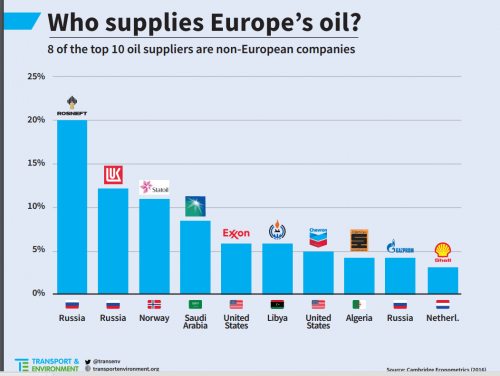
Le tableau est également mitigé en ce qui concerne la dépendance à l'égard des importations de pétrole en provenance de Russie. À la fin de 2020, la Russie représentait 24,9 % des importations d'or noir de l'UE. Les pays suivants ont la plus forte dépendance vis-à-vis des importations de pétrole russe (%) : Slovaquie - 78,4 ; Lituanie - 68,8 ; Pologne - 67,5 ; Finlande - 66,8 ; Hongrie - 44,6. Significativement plus élevé que la moyenne de l'UE, l'indicateur de dépendance dans ces autres pays (%) : Roumanie - 32. 8 ; Estonie - 32,0 ; Allemagne - 29,7 ; République tchèque - 29,1 ; Grèce - 26,3. Et la dépendance à l'égard des importations de pétrole russe est nettement inférieure à la moyenne de la deuxième plus grande économie de l'UE : la France (13,3 %), de la troisième économie : l'Italie (12,5 %), des Pays-Bas (21,0 %). Au Royaume-Uni, la Russie ne représentait que 12,2 % des importations de pétrole. Vous pouvez imaginer que les positions de la Hongrie ou de la Finlande sur les restrictions ou les interdictions d'importation d'or noir en provenance de Russie peuvent être très différentes des positions des Pays-Bas ou de la France. Et ils ne coïncident pas vraiment.
Il existe de grandes différences entre les 27 pays de l'UE en termes de dépendance aux importations d'engrais, de céréales, de métaux et d'autres biens. D'où les grandes différences politiques dans l'évaluation par les dirigeants de ces pays de l'opportunité des sanctions de l'UE contre la Russie.
Les États-Unis ne sont pas un participant, mais un initiateur et un organisateur de la guerre des sanctions. Le commerce extérieur entre les États-Unis et la Russie n'a jamais été excellent. L'année dernière, les États-Unis ne représentaient que 4,4 % du chiffre d'affaires du commerce extérieur de la Russie. L'Union européenne a représenté 35,9 %. Même si Washington mettait à zéro ses échanges avec Moscou, cette dernière ne ressentirait pas grand-chose. Mais réduire à zéro le commerce de l'UE avec la Russie pourrait porter un coup tangible et même écrasant. Ainsi, la guerre des sanctions contre la Russie ressemble à ceci : Washington planifie une guerre, introduit de nouvelles sanctions "infernales" contre Moscou, et l'exécution est confiée à Bruxelles, qui transmet les ordres de Washington aux 27 États membres de l'UE.
Toutefois, plus Washington fait pression sur Bruxelles, plus la structure de l'UE se fissure.
Trois camps ont été clairement identifiés en Europe. La première comprend la Hongrie, la Serbie (un pays non membre de l'UE) et plusieurs autres États. Ils indiquent clairement que pour eux, les intérêts nationaux sont au-dessus des intérêts de l'Occident collectif. L'autre camp est représenté par les États baltes et la Pologne. Ils se caractérisent par un fanatisme russophobe. Le troisième camp est représenté par l'Allemagne et la France. Ils essaient de manœuvrer et de se mettre progressivement d'accord sur quelques points avec Moscou. Berlin et Paris comprennent tous deux que si l'UE ne s'effondre pas à la suite de la guerre des sanctions, ce sont eux qui devront payer les dégâts de l'effet boomerang.
Cependant, certains experts prédisent qu'il n'y a aucune chance de sauver l'UE. L'opportunisme de Bruxelles, Berlin et Paris, succombant à la pression de Washington, pourrait aboutir à l'effondrement de l'UE.
Il existe également des lignes de fracture au sein des États membres. Ceci est particulièrement évident dans l'exemple de l'Allemagne. L'équipe du chancelier Olaf Scholz fait tout son possible pour mettre en œuvre les idées de sanctions de Washington. Et des millions d'Allemands protestent contre les sanctions. Les entreprises allemandes protestent également. Le 10 mars, l'Association allemande des petites et moyennes entreprises a exprimé ses craintes que l'apparition de la hausse des prix de l'énergie n'entraîne des faillites massives d'entreprises. Le directeur général de l'association, Markus Jerger, a déclaré : "L'association fédérale des petites et moyennes entreprises craint les faillites d'entreprises et les pertes d'emplois dues aux prix élevés de l'énergie. Les prix de l'énergie sont devenus un problème existentiel pour de nombreux entrepreneurs".
Le fardeau disproportionné de la guerre des sanctions, qui pèse sur l'Europe, est largement évoqué dans les médias. Cependant, la plupart des auteurs décrivent cela comme un coût inévitable dans toute guerre. "Dites, la guerre est la guerre, ce n'est pas le moment de se déguiser, Sue".
Mais certains experts soupçonnent que la Russie n'est pas la seule cible de la guerre de sanctions américaine. A en juger par les pertes que subit l'Europe, il s'avère qu'elle n'est pas considérée comme un allié par Washington, mais bien plutôt comme une cible. C'est l'avis de Yakov Kedmi, qui a déclaré le 30 mars : "Je suis intéressé de voir ce qui se passe en Europe en ce moment. Rappelez-vous comment s'appelait l'Union européenne à l'origine ? C'est ça, la Communauté européenne du charbon et de l'acier. Où sont le charbon et l'acier maintenant ? Les Européens eux-mêmes oublient ce sur quoi cette union était fondée. Maintenant, l'Europe risque de manquer de charbon et d'acier. Qui applaudit à cela ? Les États-Unis. Il n'y a pas de moyen plus efficace pour affaiblir et mettre à genoux l'industrie européenne que des sanctions contre la Russie. Et les Européens ont obéi. Seule l'industrie américaine en profitera... Les Américains gagnent deux fois : ils vendront leurs ressources énergétiques à l'Europe à des prix exorbitants, rendant son industrie non rentable, et en parallèle, ils développeront leur propre industrie. C'est très simple".
Ce regard, certes nouveau, sur la guerre des sanctions peut être exprimé comme suit : Les États-Unis, après avoir déclenché une guerre, veulent faire d'une pierre deux coups. Non seulement la Russie, mais aussi l'Europe. De plus, Washington a de bien meilleures chances de tuer le deuxième lièvre.
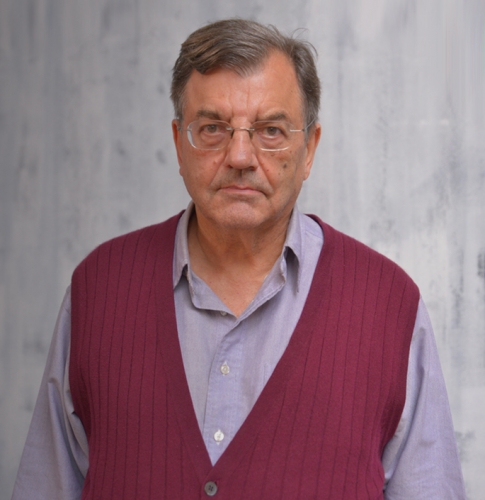
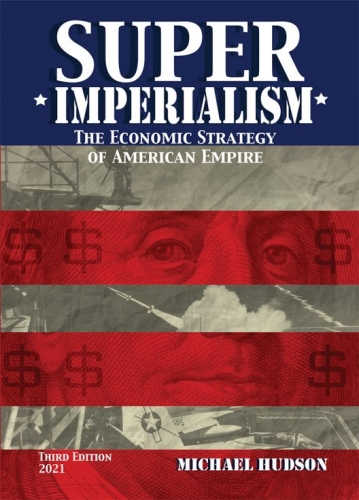
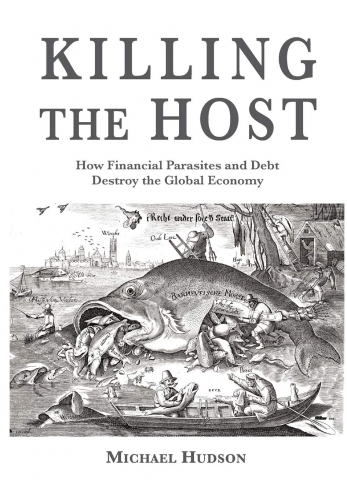
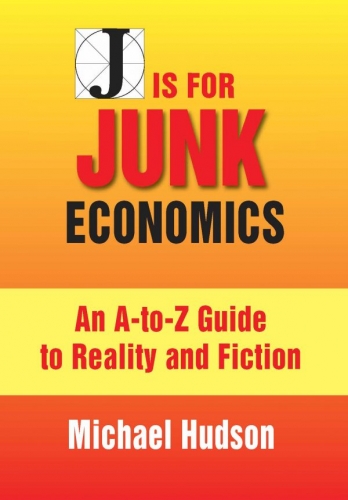
Et voici un regard sur ce qui se passe par le célèbre économiste américain Michael Hudson. À son avis, ceux qui ont planifié la guerre des sanctions à Washington ne sont pas du tout des imbéciles. Ils ont sérieusement compris que les sanctions ne feraient pas tomber Moscou. Mais l'Europe, elle, est facile à "soumettre". "Abaisser", se débarrasser d'un concurrent dans l'Ancien Monde et prendre sa place. Michael Hudson sur les opérations militaires en Ukraine: "C'est une guerre pour enfermer nos alliés afin qu'ils ne puissent pas commercer avec la Russie. Ils ne peuvent pas acheter de pétrole russe. Ils doivent compter sur le pétrole américain, pour lequel ils devront payer trois à quatre fois plus cher. Ils devront dépendre du gaz naturel liquéfié américain pour les engrais. S'ils n'achètent pas de gaz américain pour les engrais, et si nous ne leur permettons pas d'en acheter en Russie, ils ne pourront pas fertiliser la terre, et sans engrais, les rendements seront réduits de 50 %...".
Et le principal concurrent de l'Amérique, selon Hudson, est l'Allemagne. Si l'Allemagne est "déclassée", le reste de l'Europe s'effondrera tout seul. Hudson conclut: "La guerre américaine en Ukraine est en réalité une guerre contre l'Allemagne... L'Allemagne et l'Europe sont les ennemis. La guerre américaine en Ukraine est en réalité une guerre contre l'Allemagne, et les États-Unis l'ont fait savoir clairement".
15:37 Publié dans Actualité, Affaires européennes, Géopolitique | Lien permanent | Commentaires (2) | Tags : michael hudson, états-unis, russie, ukraine, europe, affaires européennes, géopolitique, géoéconomie, politique internationale, actualité |  |
|  del.icio.us |
del.icio.us |  |
|  Digg |
Digg | ![]() Facebook
Facebook
vendredi, 08 avril 2022
Le retour de la guerre en Europe et l'art de gouverner
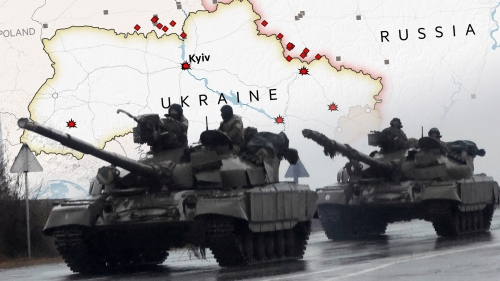
Le retour de la guerre en Europe et l'art de gouverner
Irnerio Seminatore
Source: https://www.ieri.be/
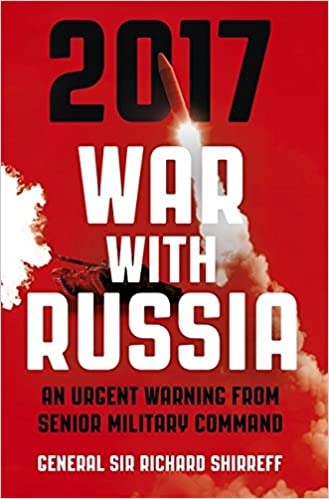 Dans un pamphlet-fiction au titre anticipateur 2017. Guerre avec la Russie. Un cri d'alarme de la haute hiérarchie militaire, le Général Richard Shirreff, ancien Commandant Suprême des forces alliées en Europe (DSACEUR) à l'Otan (2011-2014), a soutenu la thèse que la Russie est devenue l'adversaire stratégique de l'Occident et qu'elle prépare un affrontement frontal avec l'Otan et un plan d'invasion des pays baltes. Le but de cette invasion serait de rétablir une zone d'influence entre la "défense collective" de l'Alliance et les frontières de la fédération russe.Les raisons de tensions ne manquent pas avec ces Etats-charnières entre l'Est et l'Ouest, (jusqu'à 40% de la population russophone a un statut discriminatoire de "non citoyens"). C'était en 2017.
Dans un pamphlet-fiction au titre anticipateur 2017. Guerre avec la Russie. Un cri d'alarme de la haute hiérarchie militaire, le Général Richard Shirreff, ancien Commandant Suprême des forces alliées en Europe (DSACEUR) à l'Otan (2011-2014), a soutenu la thèse que la Russie est devenue l'adversaire stratégique de l'Occident et qu'elle prépare un affrontement frontal avec l'Otan et un plan d'invasion des pays baltes. Le but de cette invasion serait de rétablir une zone d'influence entre la "défense collective" de l'Alliance et les frontières de la fédération russe.Les raisons de tensions ne manquent pas avec ces Etats-charnières entre l'Est et l'Ouest, (jusqu'à 40% de la population russophone a un statut discriminatoire de "non citoyens"). C'était en 2017.
Depuis 2014, une rupture est intervenue entre la Russie et l'Ukraine, ainsi qu'entre la Russie et l'Union européenne, à propos de la révolution de couleur dite de "Maïdan", tenue par Moscou comme un coup d'Etat, et du retour de la Crimée à la Russie, considérée par les Occidentaux comme une annexion. Cette rupture est également à l'origine de la naissance des deux républiques auto-proclamées du Donbass (Donetz et Lougansk), aujourd'hui, reconnues unilatéralement par la Russie comme républiques indépendantes. On peut affirmer que le retour de la guerre en Europe a pour origine la rupture de l'unité territoriale de l'Ukraine, rendant impossible l'exercice de la pleine souveraineté de Kiev, le revirement pro-occidental du gouvernement du pays, dont la demande d'adhésion à l'Otan menace les intérêts de sécurité de Moscou et le non respect des accords de Minsk, dont les garants sont, avec la Russie, Paris et Berlin, le fameux format Normandie. Le livre-fiction du Général Britannique R. Shirreff est il un pure vision de l'esprit? La "surprise stratégique" d'une invasion armée venant de l'Est n'a-t-elle pas été prévue par anticipation par l'Ouest? Les signaux contradictoires venant de Washington et de Bruxelles sur la non-intervention occidentale directe en Ukraine, n'ont pas arrêtée une planification longue, méticuleuse et calculée, au cours des négociations diplomatiques, nécessairement ambigües, de Biden, Scholz et Macron avec Poutine, à soumettre à Xi Jinping, lors des jeux olympiques. Le but de l'ambigüité et du double jeu entre Poutine et le Président Macron ou le Chancelier Scholz ont été conformes aux règles classiques du réalisme politique, oubliées par les Européens. Il s'agissait de décrédibiliser la détermination des Etas-Unis d'intervenir en Ukraine ou de défendre, de manière plus large l'Europe, en minant en même temps l'unité de façade de l'Otan. Ainsi, suite au refus des garanties de sécurité occidentales à Moscou, l'invasion militaire de l'Ukraine a été tranchée.
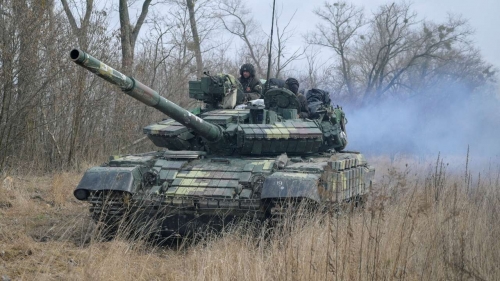
Le but de guerre
Le but de guerre ou, selon la terminologie russe de "l'opération spéciale de maintien de la paix", s'est précisée en plusieurs objectifs :
- le premier et principal est de décapiter politiquement l'Ukraine, lui ôtant son statut d'Etat souverain;
- parallèlement de provoquer le découplage de la sécurité européenne et atlantique;
- de s'assurer de l'effondrement de l'Otan, impuissante à garantir la sécurité collective;
- enfin de détruire les infrastructures militaires offensives, préjudiciables pour la sécurité et la défense russes.
L'arme nucléaire et l'escalade
En termes de possible recours tactique à l'arme nucléaire, dont l'emploi en premier fait partie intégrante de la pensée stratégique russe, son évocation par Poutine, rappelle un scénario du pire et préfigure l'hypothèse d'une escalade, allant du conventionnel au nucléaire et du tactique au stratégique. Dans une hypothèse concrète, les gains territoriaux obtenus au plan conventionnel seraient protégée par le chantage et l'escalade nucléaires, ceux d'un tir anti-cité, auquel ne pourraient répondre ni les Européens ni les Américains.
Par ailleurs, l'isolationnisme bi-partisan des Etats-Unis, à propos du déni d'envoi de soldats américains en défense de l'Ukraine, valide la conviction d'une "surprise stratégique" planifiée depuis longtemps et provoque le réveil tardif des Européens pour une indépendance politique et une autonomie stratégique propres.
En termes de diplomatie et de consensus prévisible, la non intervention directe occidentale en Ukraine a été le fondement, pour Moscou, d'une longue négociation entre Américains et Russes , puis Russes et Européens, afin d'établir assurances et réassurances réciproques et d'aboutir parallèlement à une conception de l'invasion de l'Ukraine sous la forme initiale d'un Blitzkrieg.
L'enjeu du conflit imminent était existentiel pour les deux parties, la Russie ne pouvant pas reculer devant sa sécurité et les Européens devant leurs conceptions de la démocratie. Le prix à payer pour le défi sécuritaire des Occidentaux, s'appelle finlandisation de l'Ukraine, autrement dit arrêt de l'élargissement de l'Otan. En effet "si l'Ukraine rejoignait l'Otan, cela signifierait avoir des missiles à 180 Km de Moscou" (Général Inzerilli, ancien chef des services secrets italiens). A ce propos l'Agence de presse Reuters a titré le 7 mars dernier, "La Russie s’arrêtera à l'instant, si l'Ukraine respecte ses conditions": « que l’Ukraine cesse toute action militaire, modifie sa constitution pour consacrer la neutralité, reconnaisse la Crimée comme territoire russe et reconnaisse les républiques séparatistes de Donetsk et Lougansk comme États indépendants».
"Pour le reste, l'Ukaine est un Etat indépendant et il vivra comme il veut, mais dans des conditions de neutralité (comme la Suisse, l'Autriche, la Suède..)
D'autre part la politique des sanctions, décidée par les États-Unis et par l'Union Européenne, comporte une pénalité évidente, non seulement pour l'économie et le peuple russes, mais pour l'économie et les peuples occidentaux. Politiquement, elle pousserait le président russe à chercher une alternative en Asie, accroissant sa dépendance vis-à-vis de la Chine. Ainsi, une guerre suscitée par l'unilatéralisme atlantiste des États-Unis aboutirait à un multipolarisme asymétrique Chine-Russie.
Un message spécial russe sur la "Sécurité égale et indivisible"
Dans le but de justifier ses arguments et, au courant d'une guerre de l'information qui bat son plein, la diplomatie russe a adressé un message spécial aux pays occidentaux sur le thème de la "sécurité indivisible", car ce qui est visé par ce principe est la modification sournoise des rapports de force et de la balance mondiale du pouvoir, susceptibles de devenir menaçants pour la Russie, de l'extérieur et de l'intérieur.
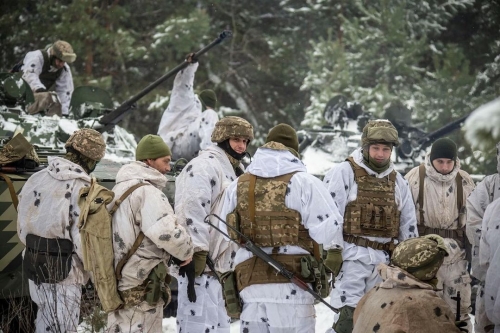
Sur le plan régional et dans un contexte mouvant et aléatoire l'aide en armements accordés par l'Union Européenne à l'Ukraine apparaît, à une analyse critique, comme une solidarité équivoque, car elle sert à jeter de l'huile sur le feu et à alimenter une résistance prolongée qui ne résout pas le problème de la sécurité égale sur l'ensemble du continent, mais reporte les causalités du conflit dans une perspective sans autre issue que le cumul et l'aggravation de la crise. La situation définissant la conception de la "sécurité égale", aux yeux de Moscou, a été le rappel de Lavrov, dans sa conférence de presse du 5 mars, selon laquelle "l'augmentation de la sécurité d'un pays, ne peut se faire au détriment d'un autre". Puis, à l'adresse des Occidentaux, par une personnalisation désenchantée du rappel: "Ils nous écoutent, mais ils ne nous entendent pas!".
Plus dur et moins diplomatique, Poutine, qui, au cours d'une conversation téléphonique avec Macron, du dimanche 6 mars, dispensa froidement: "Par la voie des négociations ou par celle de la guerre", les objectifs russes seront atteints.
La nature explicite de cette revendication est celle d'une politique de puissance, sûre d'elle-même. Le caractère implicite, un rappel des hiérarchies, des limites de la souveraineté et d' une complémentarité inclusive du "verbe" diplomatique et de l'action militaire (R. Aron). Ou encore, de la caractéristique capitale de tout système international, la mixité de coopération et de conflit.
Il faut en déduire le caractère limité de la souveraineté nationale de Kiev, asservie, pour pouvoir s'exercer, à la souveraineté dominante de Washington et en même temps niée, pour vouloir exister, par la souveraineté prépondérante de Moscou.
Personne, sur la scène internationale et surtout pas l'Union Européenne définit un projet d'ordre européen et mondial pour demain et donc les principes de la stabilité et de la sécurité du Heartland et de ses jonctions occidentales, car personne ne semble en mesure de définir les intentions et buts réels de la Russie de Poutine, qui se sent entourée de pays hostiles, arborant les drapeaux de l'Otan.
De manière générale, pour revenir à la paix, il faut établir un équilibre entre les deux composantes de l'ordre international, puissance et légitimité qui constitue l'essence même de l'art de gouverner. Les calculs de pouvoir, sans dimension morale, transformeraient tout désaccord en épreuve de force" (H. Kissinger). La recherche de cet équilibre par une médiation (Israël, Turquie et Chine), ressemble parfaitement à la situation actuelle, car les Occidentaux remettent en cause la légitimité du pouvoir autocratique de Poutine et ce dernier rejette toute intrusion ou atteinte, portée à la Russie par une forme d'unilatéralisme offensif (Irak, Libye, Syrie, Soudan... allocution du 8 mars 2022).
Or, arrêter un conflit ou reconstruire un système international, après une épreuve de force majeure, est le défi ultime de l'art de gouverner
Ainsi, évaluer la signification des tendances en cours, signifie, pour l'Europe réévaluer la notion d'équilibre des forces et réduire significativement la rhétorique des valeurs, que les Occidentaux ont cherché à promouvoir, avec ambiguïté, depuis la fin du colonialisme. Défaillants sur le premier point (logique de puissance), les Européens semblent l'être aussi sur le deuxième, car la rhétorique des valeurs se situe aux deux niveaux de l'ordre international, celui de la défense des principes universels, valables pour tous, et celui de la pluralité des histoires et des cultures régionales, ainsi que des diverses formes des régimes politiques. Une attitude différente ou opposée, marquerait une volonté d'assimilation forcée ou un diktat de légitimité, porteurs de conflits.
Bruxelles Le 9 mars 2022
20:10 Publié dans Actualité, Affaires européennes, Géopolitique | Lien permanent | Commentaires (0) | Tags : ukraine, russie, europe, affaires européennes, actualité, politique internationale |  |
|  del.icio.us |
del.icio.us |  |
|  Digg |
Digg | ![]() Facebook
Facebook
jeudi, 07 avril 2022
Général de division Gerd Schultze-Rhonhof: Poutine est-il vraiment un criminel de guerre?
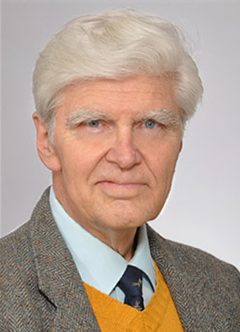
Général de division Gerd Schultze-Rhonhof: Poutine est-il vraiment un criminel de guerre?
Source: https://wir-selbst.com/2022/04/03/generalmajor-gerd-schultze-rhonhof-ist-putin-wirklich-ein-kriegsverbrecher/?fbclid=IwAR1sVM9DpHGrFsPODXb6ME_E-FII4w2J0QJmUpc98it6MPGRzrPw09z4A-Y
Préface
Lorsque j'ai écrit mon premier essai sur le désastre ukrainien, je ne pensais pas que le président russe Poutine pousserait ses efforts pour maintenir l'OTAN à l'écart du seuil de la Russie jusqu'à déclencher la guerre contre l'Ukraine. Mais je ne voulais pas non plus croire que les États-Unis, et avec eux l'OTAN et le président Zelensky, joueraient au poker si haut et si longtemps qu'ils se retrouveraient ensemble face à un désastre.
Depuis environ trois ans, les médias allemands m'ont presque exclusivement présenté le désastre ukrainien d'un point de vue ukrainien. Je n'ai donc pas d'informations de première main sur les sentiments de la population russophone de l'est de l'Ukraine. Je ne connais pas non plus de reportages sur la guerre de séparation qui dure depuis huit ans dans la région du Donbass. La guerre menée par l'armée ukrainienne contre les séparatistes/combattants de la liberté y était-elle juste ou brutale? À quoi ressemblaient les villes détruites? Y avait-il une misère des réfugiés? Les nombreuses "émissions spéciales" et "points chauds" des chaînes de télévision allemandes sur la guerre en Ukraine ont davantage ressemblé à de la propagande ukrainienne qu'à des informations allemandes pour l'ancien soldat que je suis. Leur valeur informative était presque nulle. En revanche, leur valeur de motivation antirusse était élevée. Il m'est donc désormais difficile de ne pas porter un jugement russophobe.
L'élargissement de l'OTAN à l'Est, première partie
Je m'attarde longuement et en détail sur l'importance de l'élargissement de l'OTAN à l'Est, car il est au cœur du désastre actuel de l'Ukraine. Au début du problème, il y a eu l'heureux événement de la réunification allemande et la promesse du secrétaire d'État américain Baker, qui y était initialement liée, selon laquelle l'OTAN ne serait pas élargie à l'Est par la suite. Voici d'abord mon point de vue sur la question, puis les avis contradictoires.
Après des mois de négociations entre les puissances victorieuses et les deux États fédérés allemands sur le futur statut de l'Allemagne, la Russie a accordé à l'Allemagne réunifiée le droit de rester dans l'OTAN, ce qui est aujourd'hui incontestable et effectif. Et il a été assuré en contrepartie aux Russes que l'OTAN renonçait de son côté à son extension vers l'Est, ce qui est aujourd'hui contesté. Le souhait de l'Ukraine et des États-Unis d'intégrer l'Ukraine dans l'OTAN et de pousser ainsi l'OTAN jusqu'aux frontières de la Russie est maintenant devenu un motif et une cause de guerre.
Voici comment les choses se sont déroulées:
Le 31 janvier 1990, le ministre des Affaires étrangères Genscher a déclaré lors d'une conférence à l'Académie protestante de Tutzing: "Quoi qu'il arrive dans le Pacte de Varsovie, il n'y aura pas d'extension du territoire de l'OTAN vers l'Est, c'est-à-dire plus près des frontières de l'Union soviétique. ... L'Occident doit également tenir compte du fait que les changements en Europe de l'Est et le processus de réunification de l'Allemagne ne doivent pas conduire à une atteinte aux intérêts de sécurité soviétiques".
Le 8 février 1990, le secrétaire d'État américain Baker s'est engagé auprès du secrétaire général Gorbatchev à ce que "l'OTAN n'avance pas d'un pouce vers l'Est". Interrogé par Gorbatchev, il l'a confirmé une nouvelle fois. Baker a ensuite confirmé sa déclaration initiale à un journaliste, mais il est revenu sur son contenu. Il a déclaré : "Je n'avais pas convenu de cela avec la Maison Blanche ni avec le Conseil de sécurité nationale. Deux jours après mes déclarations à Gorbatchev sur l'élargissement de l'OTAN, les États-Unis ont changé de position. Les Russes le savaient".
L'engagement de Baker a néanmoins été confirmé le 17 mai 1990 par le secrétaire général allemand de l'OTAN, Wörner, qui - bien que n'étant manifestement pas autorisé à le faire - a également déclaré que l'OTAN renonçait à tout élargissement à l'Est.
Le 11 avril 1990, le ministre britannique des Affaires étrangères Hurd a promis à Gorbatchev, lors de sa visite d'État à Moscou, que la Grande-Bretagne ne ferait rien qui puisse nuire aux intérêts et à la dignité soviétiques.
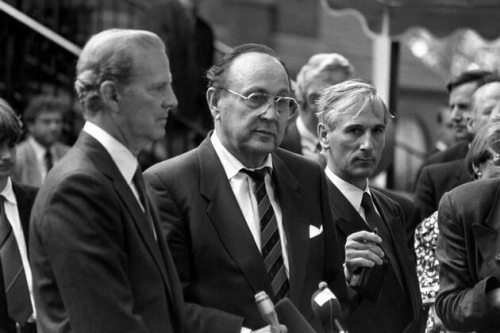
Lors d'une visite du ministre des Affaires étrangères Genscher à son homologue Baker, Genscher a accordé une interview à un journaliste de la première chaîne de télévision allemande. Debout à côté de Baker, il a déclaré au micro : "Nous sommes tombés d'accord sur le fait qu'il n'y a pas d'intention d'étendre la zone de défense de l'OTAN vers l'Est. ... Cela ne se réfère pas seulement à la RDA, mais cela s'applique de manière générale" (citation littérale). L'interview peut encore être visionnée aujourd'hui sur Youtube (Internet : "Genscher & Baker pas d'élargissement à l'Est de l'OTAN")
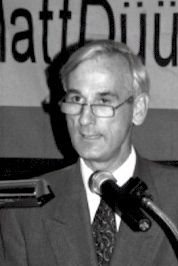 Le 6 mars 1991, Jürgen Chrobog (photo), alors chef du bureau ministériel de Genscher, a déclaré aux directeurs politiques des bureaux des affaires étrangères d'Angleterre, de France et des États-Unis, lors de réflexions sur la sécurité future des États d'Europe de l'Est : "Nous avons clairement (clear) indiqué lors des négociations 2+4 que nous n'étendrions pas l'OTAN au-delà de l'Elbe. Nous ne pouvons donc pas proposer à la Pologne et aux autres d'adhérer à l'OTAN".
Le 6 mars 1991, Jürgen Chrobog (photo), alors chef du bureau ministériel de Genscher, a déclaré aux directeurs politiques des bureaux des affaires étrangères d'Angleterre, de France et des États-Unis, lors de réflexions sur la sécurité future des États d'Europe de l'Est : "Nous avons clairement (clear) indiqué lors des négociations 2+4 que nous n'étendrions pas l'OTAN au-delà de l'Elbe. Nous ne pouvons donc pas proposer à la Pologne et aux autres d'adhérer à l'OTAN".
Il y a eu en outre des déclarations dont l'absence de valeur a posteriori indigne les dirigeants russes actuels. Le 7 juin 1990, par exemple, les ministres des Affaires étrangères de l'OTAN réunis à Turnberry, en Écosse, ont transmis le "message de Turnberry" aux dirigeants des pays du Pacte de Varsovie réunis à Moscou au même moment. Ce message disait : "Nous tendons une main amicale et coopérative à l'Union soviétique et à tous les autres Etats européens. ... La meilleure façon d'assurer une sécurité véritable et durable en Europe est la reconnaissance mutuelle et la compréhension des intérêts légitimes de tous les États en matière de sécurité". La reconnaissance et la compréhension des intérêts légitimes en matière de sécurité, les Russes se les sont naturellement appropriés et les ont pris pour argent comptant.
Trois ans plus tard encore, au printemps 1993, le président américain Clinton a confirmé dans un discours que le fait de ne pas élargir l'OTAN à l'Est correspondait également à son point de vue. L'automne 1997 a marqué un tournant dans cette politique américaine et de l'OTAN. La secrétaire d'État américaine Madeleine Albright, née en République tchèque, a alors suggéré et obtenu que la République tchèque, la Pologne et la Hongrie soient intégrées à l'OTAN en 1999.
Aujourd'hui, la déclaration initiale du secrétaire d'État américain Baker au secrétaire général soviétique Gorbatchev n'est pas reconnue comme contraignante, parce qu'elle n'a pas été formalisée par écrit et par contrat, et parce que Gorbatchev n'a pas insisté pour que cette condition soit incluse dans les traités au cours des négociations suivantes. La "non-opposition" est considérée comme une approbation silencieuse du point de vue diplomatique et du droit des États. Les historiens et les spécialistes du droit public ont toutefois des avis divergents sur la force contraignante des accords oraux.
J'en viens maintenant aux affirmations selon lesquelles l'accord Baker n'a jamais existé.
Teltschik, un ancien conseiller du chancelier Kohl, affirme depuis un certain temps qu'un tel engagement n'a jamais existé. Il a accompagné le chancelier Kohl dans tous ses entretiens et négociations et il n'a jamais été question d'un élargissement de l'OTAN vers l'Est. Teltschik n'est pas un témoin valable dans cette affaire. Il n'était que l'accompagnateur du chancelier Kohl et ne se réfère dans ses déclarations qu'aux entretiens de Kohl. Il n'était pas présent lors des accords et des assurances qui ont été décisifs dans cette affaire. Le chancelier Kohl a manifestement laissé le ministre des Affaires étrangères Genscher négocier toutes les questions relatives au maintien de l'appartenance de l'Allemagne unifiée à l'OTAN et à la présence de l'OTAN sur le territoire de l'ancienne RDA. De plus, Teltschik n'était pas présent lors de l'entretien Baker-Gorbatchev ni lors de la déclaration de Wörner. Il a également ajouté, lors d'une récente interview, qu'il n'était pas possible de parler d'un élargissement de l'OTAN vers l'Est lors des discussions sur la réunification allemande, car personne ne pouvait savoir à l'époque que l'Union soviétique et le Pacte de Varsovie se désintégreraient un jour et laisseraient la place à un élargissement de l'OTAN vers l'Est.
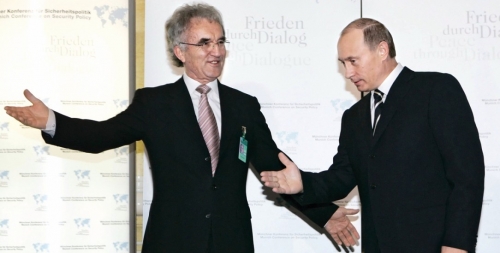
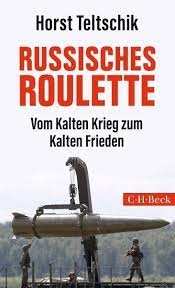
Ces deux arguments de Teltschik sont désormais partagés par l'ancien secrétaire d'État aux Affaires étrangères Ischinger et l'ancien ministre fédéral des Finances Waigel. Tous deux étaient absents de la réunion Baker-Gorbatchev de février 1990. Teltschik, Ischinger et Waigel se trompent également tous les trois en affirmant qu'à partir de février 1990, et plus encore pendant les négociations 2+4 sur la réunification allemande à partir de mai 1990, personne ne pouvait savoir ou soupçonner que le Pacte de Varsovie et l'Union soviétique allaient se disloquer.
Lorsque le secrétaire d'État américain Baker a donné au secrétaire général Gorbatchev son engagement de "non-élargissement" le 8 février 1990, les républiques soviétiques de Lettonie et de Lituanie grondaient déjà depuis un an et deux. En Lituanie, il y avait le mouvement d'indépendance Sajüdis. Et lorsque le premier cycle de négociations 2+4 a débuté le 5 mai 1990, la Lituanie (le 11 mars 1990) et la Lettonie (le 4 mai 1990) venaient de déclarer leur indépendance et l'Estonie suivait trois jours plus tard (le 8 mai 1990). Les fissures et l'orientation croissante vers l'Ouest étaient également visibles au sein du Pacte de Varsovie. En Hongrie, le processus de réforme était en cours depuis 1987, en Roumanie, en Pologne et en Tchécoslovaquie depuis 1989. Même Maggie Thatcher parlait déjà à l'époque du "processus de réforme en Europe de l'Est". Si les trois hommes cités disent aujourd'hui que personne n'aurait pu voir ou deviner à l'époque que l'évolution en cours en Europe de l'Est créerait dans un avenir proche un espace pour un réaménagement des puissances et des alliances, je ne leur accorde aucun crédit.
Et maintenant, quelque chose de personnel. Le 26 septembre 1989, en tant que commandant de l'école des troupes blindées de Munster, j'ai eu l'honneur d'accueillir et de m'occuper de l'ambassadeur américain à Bonn, Vernon Walters. Nous avons eu une discussion approfondie sur la possibilité d'une réunification allemande et sur l'attitude de son président, George H. W. Bush, à cet égard. L'ambassadeur a répondu ouvertement à toutes mes questions - je l'espère - et a également expliqué l'attitude de son président. Après la réponse de Walters à ma dernière question, il y a eu une autre déclaration que je ne lui avais pas demandée. Il a dit : "La frontière orientale allemande se placera toujours derrière la frontière orientale polonaise". Il est évident qu'à ce moment-là, la Maison Blanche avait déjà réfléchi depuis longtemps aux développements possibles en Europe de l'Est. Pour bien évaluer à quel point Walters était probablement au courant des réflexions de son "maître", il faut savoir que Bush et Walters ont été auparavant chef et vice-chef de la CIA, ce qui se chevauchait dans le temps. Je n'accepte donc pas les objections de Teltschik, Ischinger et Waigel. En revanche, je prends au sérieux l'objection des responsables politiques allemands et américains selon laquelle les accords ne sont pas contraignants s'ils ne sont pas inscrits dans un contrat. C'est la réalité et il n'est pas possible de faire autrement.
Néanmoins, il ne faut pas oublier qu'il existe également une confiance et un respect de la confiance entre les peuples et les gouvernements. L'assurance orale donnée à plusieurs reprises par des responsables politiques américains, allemands et de l'OTAN que l'OTAN ne s'étendrait pas à l'Est et qu'ils ne tireraient pas d'avantages unilatéraux de la réunification allemande a créé une attente russe.
L'élargissement de l'OTAN vers l'Est, partie II
Un changement tout d'abord positif dans les relations OTAN-Russie s'est dessiné lorsque les ministres des Affaires étrangères de l'OTAN se sont réunis le 7 juin 1990 à Turnberry en Écosse et que les dirigeants des pays du Pacte de Varsovie se sont réunis en même temps à Moscou. Les ministres des Affaires étrangères des pays de l'OTAN ont alors envoyé le "message de Turnberry" à Moscou, "ont tendu la main à l'entente" et ont garanti "la reconnaissance et la compréhension mutuelles des intérêts légitimes de tous les États en matière de sécurité". Les Russes se sont bien entendu référés à eux-mêmes en ce qui concerne les intérêts légitimes de sécurité et les Ukrainiens s'y réfèrent également aujourd'hui. Le "message de Turnberry" est aujourd'hui considéré comme la fin de la guerre froide.
Il a été suivi par la création du Conseil OTAN-Russie le 27 mai 1997 à Paris. Dans son acte fondateur, on trouve, outre de nombreux serments de paix et d'unité, des principes que les deux parties peuvent aujourd'hui interpréter à leur avantage. La protection des minorités et le droit à l'autodétermination des peuples y sont évoqués, ce que la Russie invoque aujourd'hui pour se justifier en ce qui concerne la Crimée, Lougansk et Donetsk. Le renoncement à la violence, l'intégrité territoriale et l'indépendance politique des États sont également cités comme des objectifs communs, auxquels l'Ukraine et l'OTAN se réfèrent aujourd'hui. Ce qui est décisif pour l'élargissement de l'OTAN vers l'Est, c'est le "droit naturel (inherent) des États à choisir eux-mêmes la voie (means) de leur propre sécurité", inscrit dans l'acte fondateur. L'OTAN et les anciens États non russes du Pacte de Varsovie ont vu dans cette formulation la concession du président russe Eltsine à l'élargissement de l'OTAN vers l'Est, bien que Eltsine ait ajouté dans son discours de clôture de la conférence de signature qu'il s'opposerait à un élargissement de l'OTAN vers l'Est. Le 12 mars 1999, la Pologne, la République tchèque et la Hongrie ont rejoint l'OTAN.

Pour le reste, le Conseil OTAN-Russie n'a pas abouti à l'union tant annoncée. De mars à juin 1999, les troupes de l'OTAN ont attaqué la Yougoslavie contre la volonté de la Russie. A l'époque, la répartition des rôles était toutefois différente de celle qui prévaut aujourd'hui en Ukraine. L'OTAN se battait pour les droits des minorités et la sécession du Kosovo. Aujourd'hui, les Russes se battent pour les droits des minorités et la sécession de Lougansk et de Donetsk. Et depuis 2016, la Russie et les États-Unis se disputent le déploiement de missiles nucléaires de moyenne portée en Pologne et en Roumanie. Là encore, les Américains ont eu gain de cause et ne se sont pas souciés des intérêts de la Russie en matière de sécurité. L'acte fondateur sur lequel repose le Conseil OTAN-Russie n'est donc plus qu'un filet de sécurité fissuré. Lors de la dernière conférence du Conseil OTAN-Russie, le 12 janvier 2022 à Bruxelles, l'unité autrefois invoquée n'a suffi qu'à se présenter mutuellement les exigences maximales "non négociables".
Il est compréhensible que les dirigeants russes - d'abord Eltsine, puis Poutine - se soient sentis piégés et trompés. Sans compter que l'ex-Union soviétique a retiré ses troupes d'Europe centrale, tandis que les États-Unis ont continué à avancer leurs troupes vers l'Est. De plus, la Russie a accepté l'ancrage économique et politique à l'Ouest des membres européens du Pacte de Varsovie et de ses anciens États baltes. Même la réorientation économique de l'Ukraine vers l'UE a été acceptée par la Russie. En outre, il est stratégiquement judicieux de laisser des zones de séparation, c'est-à-dire des États tampons neutres, entre des systèmes, des États et des alliances d'États opposés. De plus, le chancelier Bismarck a souligné qu'une paix durable ne peut être obtenue que par la conciliation des intérêts et non par l'imposition de ses propres intérêts. Les politiciens américains, allemands et de l'OTAN ont enfreint ces principes raisonnables à plusieurs reprises après 1997, lorsque Poutine a précisé pour la première fois lors de la conférence sur la sécurité de Munich où une "ligne rouge" serait franchie pour les intérêts de sécurité russes, à savoir une extension supplémentaire de l'OTAN jusqu'aux frontières de la Russie. L'"Occident" a maintenant tenté de franchir cette ligne rouge. Il revendique le "droit d'être de son côté", se retrouve avec les Russes devant un tas de ruines et ne montre même pas, dans son autojustification, l'ombre d'une autocritique et l'aveu d'une part de responsabilité dans la naissance de cette guerre.
En Allemagne, il ne faut pas non plus oublier que notre réunification, il y a 32 ans, n'a été possible que grâce à l'accord de Gorbatchev. Et celui-ci a été obtenu en échange de l'engagement verbal du secrétaire d'État américain Baker : "L'OTAN n'avancera pas d'un pouce vers l'Est". Renoncer à l'élargissement de l'OTAN vers l'Est était donc une partie du prix à payer pour la réunification. Et ce prix n'a jamais été payé. N'oublions pas non plus que le secrétaire général allemand de l'OTAN, Wörner, et le ministre allemand des Affaires étrangères, Genscher, l'ont confirmé dans leurs discours et leurs interviews. Contrairement à d'autres membres de l'OTAN, nous, Allemands, sommes donc aussi les témoins de premier plan de cet engagement américain précoce.
Le rôle initial de Poutine
Dans un premier temps, Poutine a tenté un rapprochement avec l'"Occident" et s'est efforcé de relier la Fédération de Russie à l'UE et à l'OTAN. Il a proposé une zone de libre-échange entre l'UE et la Russie dans trois discours prononcés en Allemagne en 2001, 2007 et 2010, et a échoué. Et il a évoqué un rattachement de la Russie à l'OTAN lors de la visite d'adieu de Bill Clinton à Moscou en 2000. Là encore, sans écho positif. La fin des tentatives de rapprochement n'est intervenue qu'après le changement de la politique étrangère de l'"Occident". En 1997, toujours sous Clinton, la secrétaire d'État américaine Albright a imposé l'élargissement de l'OTAN à l'Est. En 2007, lors de la conférence de Munich sur la sécurité, Poutine a déclaré qu'une nouvelle extension de l'OTAN vers l'Est sur le territoire de l'ancienne Union soviétique constituerait le "franchissement d'une ligne rouge".
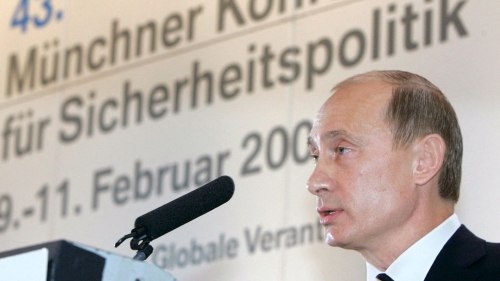
L'Ukraine tente de se tourner vers l'Occident
L'Ukraine avait conclu un accord de libre-échange avec la Russie en novembre 2011 et négocié un accord d'association avec l'UE en 2012 et 2013. Elle avait tenté de s'ouvrir à un marché sans perdre l'autre. Le gouvernement ukrainien, sous la direction du Premier ministre Azarov, avait ainsi tenté de lier le rapprochement avec l'UE à l'adhésion à la zone de libre-échange de la Russie, ce que les Russes étaient prêts à négocier après une résistance initiale, mais que la Commission européenne a toujours refusé. L'UE a de facto tenté d'imposer un "droit de représentation exclusif" pour le futur commerce extérieur de l'Ukraine. Cela a fait échouer l'intention initiale de Ianoukovytch de faire de l'Ukraine un pont entre l'Est et l'Ouest sur le plan économique et politique.
Alors que les négociations avec l'UE entraient dans leur "phase chaude", le président ukrainien Ianoukovytch craignait de manière réaliste que l'économie ukrainienne, en s'adaptant à l'UE, ne soit pas en mesure de faire face à la pression de la concurrence sur le plan économique et technique, comme l'avait fait auparavant l'Allemagne de l'Est avec la RFA. Il a demandé à l'UE une aide à l'ajustement de 160 milliards d'euros, et l'UE a refusé.
Un deuxième obstacle était que l'Ukraine elle-même devait s'ouvrir aux importations occidentales, mais qu'elle n'avait droit qu'à des quotas d'exportation minimes. Si l'Ukraine perdait le marché russe, elle n'obtiendrait que 200.000 tonnes de quotas d'exportation vers l'UE pour ses 30 millions de tonnes de blé exportées chaque année. Cela représentait 0,7% du blé dont l'Ukraine dépendait pour ses exportations et ses revenus. Pour les produits carnés, ce chiffre était de 2% et pour les exportations d'acier, il était similaire. En conséquence, Ianoukovytch a gelé l'accord d'association pendant un an. Mais la pression de l'opinion publique ukrainienne en faveur d'un rattachement économique à l'Ouest et d'une adhésion ultérieure à l'UE était devenue si forte que Ianoukovytch n'a pas survécu à cette décision. Il a été destitué et le soulèvement dit de Maidan a eu lieu.
L'ancien chancelier allemand Helmut Schmidt avait alors vivement condamné la tentative de la Commission européenne de "placer l'Ukraine devant le choix apparent de choisir entre l'Ouest et l'Est", la qualifiant de mégalomanie. En 2014, il avait déjà averti qu'un tel comportement pouvait conduire à une guerre.
L'occupation économique de l'Ukraine par les États-Unis
Les Etats-Unis ont proposé dès 2008 d'intégrer l'Ukraine à l'OTAN. Il s'agissait et il s'agit toujours d'intérêts économiques et militaires massifs et, en fin de compte, de la revendication hégémonique des Etats-Unis dans toute l'Europe. L'Ukraine possède d'abondantes ressources naturelles. C'est un marché d'exportation considérable. Avec son industrie aérospatiale, elle est un complément important de la même industrie en Russie et, avec la Crimée, elle possède une position stratégique maritime qui lui permet de dominer la mer Noire.
Dans le sillage des négociations de l'UE, les entreprises américaines et les représentants du gouvernement et de l'armée se sont empressés d'intervenir et de profiter de la faiblesse de l'Ukraine pour y "enfoncer des clous". En novembre 2013, la compagnie énergétique américaine Chevron a conclu un contrat de 50 ans pour le développement et l'extraction de gaz naturel par fracturation dans le nord-ouest de l'Ukraine. Exxon Mobil a négocié des gisements de gaz naturel sur la côte de la mer Noire.
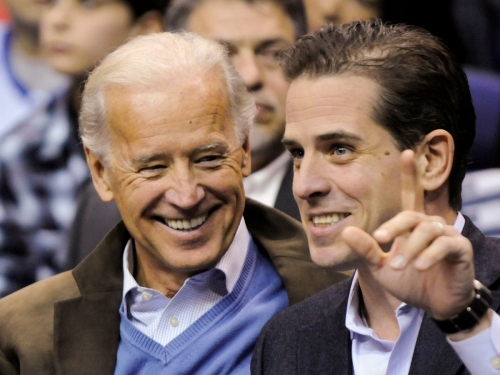
Les liens commerciaux et familiaux américains avec l'Ukraine sont également intéressants. Le fils de l'ancien vice-président Joe Biden, Hunter Biden, ainsi que l'ancien chef de cabinet du secrétaire d'État américain de l'époque, Kerry Leter, et l'ancien directeur de campagne de Kerry Archer, sont devenus membres du conseil d'administration de la plus grande société gazière ukrainienne, Burisma, en mai 2014. Hunter Biden a reçu une rémunération fixe en dollars pour chaque millier de mètres cubes de gaz naturel passant par les tuyaux de Burisma. Selon un journal américain, cela représentait 50.000 dollars par mois dans les meilleurs moments. Il est évident que les intérêts économiques nationaux américains se sont combinés avec les intérêts patrimoniaux de la famille Biden. Il convient d'ajouter que Burisma détient les droits d'exploitation du gaz naturel dans la pointe nord de la région séparatiste de Donetsk.
La présentation du désastre ukrainien par les médias allemands manque malheureusement de fond. Lorsqu'en décembre 2013, les négociations d'association de l'Ukraine ont d'abord échoué, notamment en raison de la "prétention à la représentation unique" de l'UE, des risques impondérables menaçaient les investisseurs américains en Ukraine. Quatre semaines plus tard - le 1er février 2014 - le sujet a été mis en lumière lors d'une table ronde à la Conférence de Munich sur la sécurité entre Koschara, alors ministre ukrainien des Affaires étrangères, et Klitschko, membre de l'opposition.
Koschera a répondu à la demande de Klitschko d'orienter l'Ukraine vers l'Ouest en disant: "L'Ukraine ne doit pas être placée devant l'alternative Europe ou Russie". Les États-Unis ne voulaient manifestement pas vivre avec une telle attitude du gouvernement à Kiev. Ils ont tiré les ficelles peu de temps après pour opérer le changement de président de l'Etat de Ianoukovytch à Porochenko et le changement de Premier ministre d'Azarov à Iatseniouk. Sur une photo de presse prise lors de la conférence sur la sécurité de Munich, on peut voir ces changements symbolisés quatre semaines auparavant. On y voit le secrétaire d'État américain Kerry au centre et Porochenko et Iatseniouk à gauche et à droite. L'ancien ministre des Finances a également été remplacé. Il a été remplacé par Natalia Jaresko, une banquière d'investissement américaine, après une naturalisation éclair.
Même s'il manque des preuves au sens strict d'un "changement de régime" dirigé par les Américains, il convient de citer la remarque de Victoria Nuland, alors secrétaire d'État adjointe, qui a déclaré publiquement le 13 décembre 2013 que les États-Unis avaient dépensé plus de 5 milliards de dollars depuis 1991 pour la démocratisation, la prospérité et la sécurité de l'Ukraine. Quand on parle de "sécurité", on peut encore penser à l'armement et aux conseillers militaires. On peut se faire une idée de ce qu'il faut entendre par démocratisation en observant les efforts diplomatiques de Nuland (photo) pour arranger un gouvernement pro-américain à Kiev. En 2013, lors d'une conversation téléphonique interceptée avec l'ambassadeur américain à Kiev Geoffrey Pyatt, récemment entré en fonction, elle a discuté de l'éligibilité des politiciens de l'opposition pro-occidentale pour former un nouveau cabinet au sein du gouvernement ukrainien.
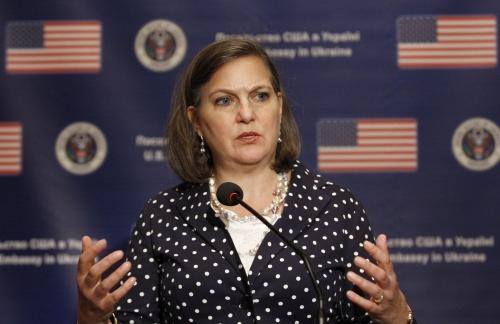
La stratégie américaine d'extension de la domination politique et d'acquisition de ressources naturelles outre-mer comprend également la sécurisation des voies maritimes vers les gisements. En 1887, l'amiral Alfred Mahan, théoricien américain de la guerre navale, a marqué la pensée stratégique américaine jusqu'à aujourd'hui avec son livre "L'influence de la puissance maritime sur l'histoire". Il a écrit et enseigné que la maîtrise des mers faisait partie de la puissance mondiale. Celle-ci consisterait en une flotte supérieure à toutes les autres, en la maîtrise des routes maritimes et en la possession de positions stratégiques maritimes, c'est-à-dire de ports de guerre et de commerce dominants au bord des mers. Le conseiller américain à la sécurité George Friedman a rappelé cet aspect de la stratégie et de la tradition américaines dans un discours prononcé en février 2015 devant le Chicago Council of Global Affairs. Il a déclaré : "Les États-Unis ont un intérêt fondamental. Ils contrôlent tous les océans du monde ... Pour cette raison, nous pouvons envahir d'autres pays, mais ils ne peuvent pas le faire chez nous. ... Le maintien du contrôle des océans et de l'espace est la base de notre puissance".
Appliqué à l'Ukraine et plus particulièrement à la péninsule de Crimée, cela signifie, selon la pensée américaine et les craintes russes, qu'une Ukraine ouverte aux Etats-Unis par son adhésion à l'OTAN aurait établi la domination des Etats-Unis sur la mer Noire. La Russie aurait dû céder sa position stratégique maritime à l'US Navy en perdant son port de guerre en Crimée et, par conséquent, le contrôle de la route maritime vers le plus grand port commercial de Russie, Novorossiysk. Le port commercial ukrainien d'Odessa aurait également été sous contrôle américain. Si les allégations de Poutine sont exactes, les États-Unis ont déjà établi un commandement de la mer Noire pour l'US Navy à Ochakiv, à la pointe nord de la mer Noire, à 150 kilomètres à l'ouest de la Crimée.
De manière moins importante, mais qui mérite d'être mentionnée, les Américains envoient depuis des années des conseillers militaires et des mercenaires des sociétés militaires Greystone et Academy, ainsi que du matériel militaire en Ukraine. Et en janvier 2015 - pendant la période Porochenko - le commandant en chef des forces américaines en Europe, le lieutenant-général Ben Hodges, s'est rendu à Kiev et a rendu visite aux dirigeants des forces armées ukrainiennes et à leurs troupes, annonçant que les États-Unis enverraient désormais officiellement des conseillers militaires. Les États-Unis sont donc déjà présents militairement en Ukraine, même sans l'OTAN.

La sécession de la Crimée de l'Ukraine
Dès 1991, lors de la sécession de l'Ukraine de l'Union soviétique, la population de Crimée s'était prononcée par référendum à 93% pour le maintien de l'Ukraine au sein de la Russie.
Dès que Ianoukovytch a été destitué et que Porochenko, orienté vers l'Occident, lui a succédé en juin 2014, celui-ci a de nouveau exigé après quelques jours l'association avec l'UE et l'adhésion de l'Ukraine à l'OTAN. La sonnette d'alarme a alors retenti au Kremlin. Il était clair pour Poutine que l'UE, l'OTAN et les Américains s'installeraient un jour en Crimée et que la marine américaine prendrait le contrôle du port militaire russe de Sébastopol si cela devait arriver. Il a tiré le frein d'urgence et a annexé (selon la lecture occidentale) la péninsule de Crimée en mars 2014, avec sa population majoritairement russe. Du point de vue de la procédure, il s'agissait d'un rattachement à la volonté de la grande majorité de la population locale et il y avait des antécédents.
Le 23 février 2014, au lendemain de la destitution de Ianoukovytch, un gouvernement intérimaire avait promulgué une nouvelle loi linguistique faisant de l'ukrainien la seule langue d'État et interdisant le russe dans les écoles et les administrations. Jusqu'à présent, la population de Crimée, majoritairement russophone, était habituée à l'utilisation du russe comme deuxième langue officielle. Ainsi, deux semaines plus tard, le parlement local de Crimée a demandé et voté pour la première fois le rattachement de la Crimée à la Russie. Une autre semaine plus tard, la population de Crimée a voté à 97,5% lors d'un référendum déclaré illégal par l'UE et les États-Unis (avec 83% de participation) en faveur du rattachement à la Russie. (Les 97,5% proviennent d'un reportage suisse. Les médias allemands ont annoncé des chiffres plus bas, jusqu'à 93%). Il s'agit là des antécédents locaux de la soi-disant "annexion" de la Crimée par la Russie le 21 mars 2014.
La prise de contrôle de la Crimée a certes violé le droit international actuellement en vigueur, mais elle était conforme à un autre principe du droit international, le droit des peuples à disposer d'eux-mêmes. En outre, l'annexion de la Crimée était, dans une certaine mesure, comparable à la défense des Etats-Unis contre l'occupation militaire soviétique de Cuba en 1962. Les États-Unis n'avaient pas non plus toléré d'"adversaire" à la porte de leur arrière-cour.
Et nous, Allemands, devrions nous rappeler qu'il y a 32 ans, les Allemands de l'État fédéré de la RDA ont eux aussi tourné le dos à leur gouvernement légitime et ont rejoint leur voisin, la RFA, d'une manière illégale selon le droit de la RDA. Ils l'ont fait - comme la population de Crimée - par le biais d'une décision parlementaire et d'une élection.
Peu après la prise de contrôle de la Crimée par la Russie, les deux oblasts de Lougansk et de Donetsk, majoritairement peuplés de Russes, ont également voulu se séparer de l'Ukraine. Ils ont déclaré leur indépendance, ce qui a entraîné la guerre civile qui dure depuis huit ans dans l'est de l'Ukraine.
Le manque de parole de l'Occident est le traumatisme des Russes
Depuis sa promesse initiale de ne pas étendre l'OTAN à l'Est, la Russie a assisté impuissante depuis 1999 à l'adhésion de 13 pays d'Europe de l'Est à l'OTAN et à l'installation de missiles américains en Pologne et en Roumanie en dépit des protestations russes. Pour l'Occident, il s'agissait d'une exportation de la démocratie et de la liberté, et pour la Russie, d'un manquement à la parole donnée qui a laissé un amer traumatisme. Hormis l'adhésion de la Pologne, de la Hongrie et de la République tchèque à l'OTAN cinq mois avant la première prise de fonction de Poutine en tant que Premier ministre russe, tous les autres élargissements et déploiements ont eu lieu sous le mandat de Poutine. En ce qui concerne les déploiements de missiles américains, il s'y est opposé à plusieurs reprises et a indiqué à plusieurs reprises quand la Russie considérait que l'Occident franchissait une "ligne rouge". Plus tard également, après la prise de contrôle de la Crimée, la dernière fois en décembre 2021, Poutine a demandé à deux reprises au président américain Biden de renoncer durablement à l'intégration de l'Ukraine - directement à la porte de la Russie. Poutine a ainsi épuisé ce que l'on peut appeler la diplomatie.
Pendant 15 ans, l'Occident a appris à Poutine que les intérêts légitimes de la Russie en matière de sécurité ne pouvaient pas être protégés par la seule diplomatie. Ainsi, avec la prise de contrôle de la Crimée, il a commencé à briser le premier tabou selon la conception occidentale. Il a modifié une frontière d'État étrangère selon la volonté de la population concernée.
Séparation des oblasts de Donetsk et de Lougansk
Quelques semaines après la sécession de la Crimée, la population majoritairement russe des deux oblasts les plus à l'est de l'Ukraine s'agite également. Les 7 et 28 avril 2014, l'oblast de Donetsk, avec 75% de russophones, puis l'oblast de Lougansk, avec 69% de russophones, se sont déclarés républiques populaires indépendantes. Lors d'un référendum en mai 2014, plus de 90 % des personnes interrogées dans les deux oblasts ont voté pour leur indépendance vis-à-vis de Kiev. Le gouvernement central ukrainien a alors ordonné l'entreprise baptisée "opération anti-terroriste" contre les "putschistes" et a fait marcher des troupes contre Donetsk et Lougansk. Depuis, une guerre sécessionniste locale y fait rage avec une ingérence russe peu claire.
Ce qui manque pour évaluer les actes de guerre de l'"opération antiterroriste", c'est une couverture par les médias occidentaux. Selon des rapports non vérifiables, l'opération a commencé par le déploiement d'environ 100.000 soldats des forces armées ukrainiennes régulières contre environ 30.000 séparatistes. Les forces gouvernementales disposaient d'avions équipés de bombes au phosphore et de bombes à sous-munitions, ce qui n'était pas le cas des séparatistes. 80 % des tués auraient été des combattants séparatistes.
L'élément déclencheur semble avoir été la politique du gouvernement de Kiev d'"ukrainisation culturelle" de sa population russe. Il existait à l'origine une loi linguistique qui faisait des langues minoritaires la deuxième langue officielle là où au moins 10 % de la population parlait une langue minoritaire. Mais en février 2014, le gouvernement central ukrainien a déclaré l'ukrainien comme seule langue d'État et officielle avec une nouvelle loi linguistique. Le russe a ainsi disparu des bureaux et des écoles dans 10 des 25 oblasts ukrainiens.
La Russie a soutenu les séparatistes russes dans les oblasts sécessionnistes, mais elle n'a pas attaqué l'intégrité territoriale de l'Ukraine elle-même. Pourtant, dès cette époque, en septembre 2014, Rasmussen, alors secrétaire général de l'OTAN, affirmait que "la Russie attaquait l'Ukraine". Au contraire, lors de deux conférences de Minsk en septembre 2014 et en février 2015 (avec la France et l'Allemagne), la Russie a tenté d'organiser un règlement fructueux pour Lougansk et Donetsk en tant qu'oblasts semi-autonomes au sein de l'Ukraine.
Les accords de Minsk
Le 12 février 2015, les accords de Minsk (Minsk II) ont été conclus entre l'Ukraine et la Russie, puissance protectrice des deux oblasts sécessionnistes, par l'intermédiaire de la France, de l'Allemagne et de l'OSCE. Cet accord prévoyait un cessez-le-feu, des élections anticipées et une loi sur un statut spécial pour Lougansk et Donetsk au sein de l'Ukraine. Le cessez-le-feu n'a toutefois pas duré plus de trois jours. Le gouvernement central ukrainien n'a alors pas organisé d'élections ni élaboré une loi sur le futur statut spécial des deux oblasts contestés. Au lieu de cela, le gouvernement de Kiev a promulgué en 2018 une "loi de réintégration" pour les deux oblasts, a interdit toute négociation avec eux et a continué à interdire l'utilisation de la langue maternelle russe dans les écoles. De facto, le gouvernement ukrainien a ainsi rompu les accords de Minsk II. La guerre civile dans l'est de l'Ukraine s'est donc poursuivie sans relâche. Poutine a vu la souffrance de la population dans la zone de guerre et la réticence ou l'incapacité du gouvernement de Kiev à respecter les accords de Minsk prévoyant l'autonomie partielle de Lougansk et de Donetsk, et il a observé - ce qui a sans doute pesé beaucoup plus lourd - les pressions constantes de Kiev pour être admis dans l'OTAN.
La reconnaissance par Poutine de l'indépendance de Lougansk et de Donetsk
Pour Poutine, l'Ukraine en tant que membre majeur de l'OTAN, et donc la présence américaine à la frontière russe, n'était et n'est toujours pas compatible avec les intérêts vitaux de la Russie en matière de sécurité. Il a donc ordonné un déploiement de menaces à la frontière avec l'Ukraine et a demandé à deux reprises au président américain Biden, en décembre 2021 et février 2022, de renoncer de manière permanente à l'adhésion de l'Ukraine à l'OTAN. Les deux ont refusé. Au lieu de cela, selon un rapport d'Anti-Spiegel, le 21 janvier 2022, l'OTAN a invité le gouvernement ukrainien à participer à l'élaboration du nouveau document stratégique "Agenda 2030 de l'OTAN". Si la nouvelle est exacte, il s'agissait d'une annonce très claire à Poutine que l'élargissement de l'OTAN vers l'est; donc à l'Ukraine, était prévu pour un avenir proche. Il n'est pas improbable que la nouvelle de l'agenda 2030 de l'OTAN soit exacte, étant donné que les ministres des affaires étrangères américain et ukrainien avaient déjà scellé un accord de coopération stratégique entre leurs deux pays peu de temps auparavant, le 10 novembre 2021. De plus, le 19 février 2022, le président ukrainien Zelensky a imprudemment déclaré dans son discours à la conférence de Munich sur la sécurité qu'il envisageait de faire à nouveau de l'Ukraine un État doté d'armes nucléaires. Pour les Russes, ce n'était pas seulement "jeter de l'huile sur le feu" dans une situation déjà surchauffée, c'était de la "dynamite avec mèche". Cela expliquerait les actions ultérieures de Poutine. Il a alors tiré le frein d'urgence pour la deuxième fois le 21 février 2022. Poutine a reconnu la souveraineté des oblasts séparés, sept ans après leur propre déclaration d'indépendance.
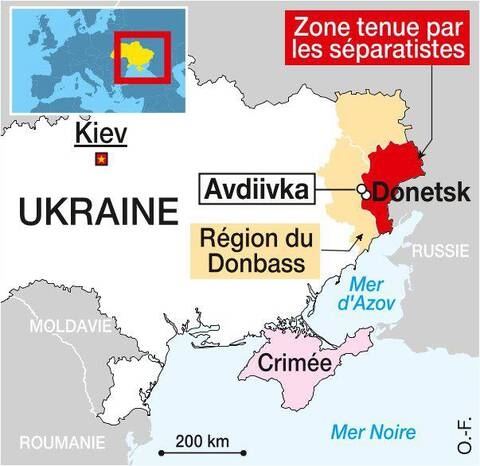
Avec cette reconnaissance, Poutine a fait ce qui s'était passé 13 ans plus tôt au Kosovo. Là-bas, les pays occidentaux avaient également reconnu les nouvelles frontières et l'indépendance autoproclamée d'une entité serbe après des années de guerre civile ou de sécession et sans l'accord du Conseil de sécurité de l'ONU, modifiant ainsi l'existence territoriale de la Serbie. Dans le cas de l'indépendance du Kosovo, la Cour internationale de justice des Nations unies a déclaré le 22 juillet 2010 : "Le droit international général ne contient pas d'interdiction quelconque de déclarer l'indépendance".
"La guerre de Poutine"
Il ne faut pas voir dans cette phrase l'attribution d'une responsabilité exclusive dans la guerre en Ukraine. La question de la culpabilité est un tout autre sujet.
Après la reconnaissance de l'indépendance des deux "républiques populaires" sur le territoire ukrainien et le rejet de celle-ci par l'Ukraine, l'OTAN, les pays de l'UE et surtout les États-Unis, Poutine avait trois possibilités. La première option aurait été de ne rien faire et d'attendre. Ce faisant, il n'aurait résolu aucun problème. Il n'aurait fait que prolonger la guerre de sécession et n'aurait pas tenu sa promesse de protection de la population russe dans la région du Donbass. La deuxième option aurait été une occupation russe des deux oblasts sécessionnistes. Ce faisant, il n'aurait certes éteint qu'un feu de brousse à la périphérie de l'Ukraine, mais aurait ainsi provoqué l'incendie de forêt dans toute l'Ukraine. L'ouverture d'une guerre contre une partie seulement de l'Ukraine aurait en outre été immédiatement interprétée comme l'ouverture d'une guerre contre l'ensemble de l'État ukrainien et aurait entraîné de manière prévisible une guerre ultérieure contre une "coalition de volontaires". On ne peut pas reprocher à Poutine de ne pas avoir tenu compte de l'assurance donnée par Biden que l'Amérique n'interviendrait pas dans une guerre en Ukraine, après les nombreux manquements américains précédents. L'issue incertaine d'une guerre contre une "coalition de bonnes volontés" menée par les États-Unis n'aurait pas mis fin au risque d'une adhésion ultérieure de l'Ukraine à l'OTAN. La troisième possibilité était ce qu'il a fait. En attaquant l'Ukraine et en occupant brièvement Kiev, il s'est assuré de manière permanente que l'Ukraine ne devienne pas membre de l'OTAN et qu'aucun Américain ne soit stationné directement à la frontière russe à l'avenir.
Une quatrième possibilité avait déjà été perdue auparavant. Pendant 22 ans, Poutine a tenté en vain d'empêcher la présence de forces américaines directement à la frontière russe, par le biais de conférences, de négociations, de revendications, de la mention d'une "ligne rouge" et, plus récemment, juste avant et après le passage à la nouvelle année 2021-2022, lors de deux entretiens téléphoniques avec le président américain Biden.
Une guerre par procuration
La guerre en Ukraine est essentiellement un conflit entre les États-Unis et la Russie. D'un point de vue plus large, il s'agit de poser les jalons d'un "ordre de paix" bipolaire en Europe, avec une Russie à égalité avec les Etats-Unis, ou d'un ordre monopolistique avec l'Amérique en selle et la Russie comme cheval de bataille à côté. Le président américain avait déjà déclaré sans détour qu'il ne considérait plus la Russie que comme une puissance régionale, "préludant" ainsi au conflit en Ukraine. Obama a ainsi exprimé la prétention des États-Unis vis-à-vis de tous les autres États d'Europe.
D'un point de vue purement extérieur, ce conflit pour la suprématie en Europe se joue désormais en Ukraine. Cela se traduit par la volonté des Etats-Unis d'étendre leur zone d'influence et leur puissance militaire en direction de la Russie par le biais de l'OTAN, et par une mainmise économique rapide sur les ressources naturelles de l'Ukraine. Ce sont les États-Unis qui, bien qu'étant les plus éloignés de l'Europe, ont été les premiers à demander le rattachement de l'Ukraine - et de la Géorgie - à l'OTAN, à envoyer des conseillers militaires en Ukraine, à y livrer des armes et, avec les Néerlandais, à s'emparer dès que possible des gisements de pétrole et de gaz. Dans cette lutte d'influence politique, d'exploitation économique et de positionnement militaire, l'Ukraine n'est ici qu'un pion entre les deux grands concurrents. La concurrence entre les deux grandes puissances se traduit également par l'intransigeance des deux parties lorsqu'il s'agit du rôle futur de l'Ukraine.
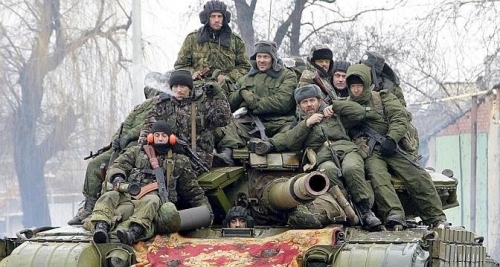
Les Etats-Unis et les pays de l'OTAN ne se considèrent pas comme une menace pour la Russie, mais objectivement, ils représentent néanmoins une menace pour tout Etat dirigé de manière autoritaire ou ayant des problèmes internes. Ainsi, les Américains et, dans leur sillage, les Britanniques, les Français, les Italiens et d'autres ont mené des "guerres de changement de régime" avec ou sans mandat de l'ONU contre la Grenade, la Serbie, l'Afghanistan, l'Irak, la Libye et la Syrie au cours des dernières décennies et se sont immiscés dans les guerres civiles et les troubles d'États étrangers sans avoir été eux-mêmes menacés.
L'ancien général américain et ancien commandant en chef des forces de l'OTAN en Europe (SACEUR) Wesley Clark a révélé dans une interview le 9 mars 2007 qu'il avait appris dès septembre 2001 au Pentagone qu'il y avait été décidé que des guerres de changement de système seraient menées dans sept États au cours des cinq prochaines années. Il a cité l'Irak, la Syrie, la Libye, le Liban, l'Iran, la Somalie et le Soudan. Comme nous le savons aujourd'hui, cette liste a été presque entièrement complétée. On peut appeler cela un "plan directeur". C'est en tout cas la manifestation de l'intention américaine d'étendre son emprise par la guerre. Toutes ces guerres ont été préparées par des troubles intérieurs qui, dans tous les États mentionnés, ont pu être rapidement déclenchés de l'extérieur par les différences ethniques, religieuses ou sociales et les groupes d'opposition locaux. Toutes ces guerres, qui devaient exporter la démocratie et les droits de l'homme, ont laissé derrière elles le chaos, des flots de réfugiés, des morts, des familles ruinées et des villes et villages détruits. Ainsi, en dehors du cercle des alliés des États-Unis, on craint qu'à l'occasion, les États-Unis n'interviennent de manière belliqueuse, selon leurs propres intérêts et critères, dans des États étrangers et dans les "changements de gouvernement" qui s'y produisent. Poutine a bien entendu enregistré ces changements de pouvoir. Il a vu qu'après le changement de gouvernement de 2014, l'Ukraine était sur le point de tomber entièrement dans la zone d'influence économique américaine et que si la Russie continuait à se développer, elle aurait également des troupes américaines, des missiles à moyenne portée et des bases navales à son seuil. Ainsi, la guerre actuelle en Ukraine est un conflit russo-américain, même si les États-Unis ne sont pas encore impliqués dans la guerre avec des armes.
L'UE y est - sans intention apparente - l'ouvrier qui construit la voie sur laquelle le train de l'OTAN se dirige ensuite vers l'Est, avec les États-Unis à l'avant de la locomotive.
La brutalité des guerres
Les guerres militaires sont toujours brutales. Le Code de la guerre terrestre de La Haye et les Conventions de Genève ont tenté d'endiguer les atrocités de la guerre. Ces deux textes prévoient notamment la protection des civils non armés et la protection des villes et villages non défendus contre les tirs et les bombardements. Même les civils qui s'arment et font face à un agresseur alors que leurs propres forces militaires ne sont pas encore déployées bénéficient des droits de protection qui ne sont normalement accordés qu'aux soldats. Or, ce n'était plus le cas dans cette guerre d'Ukraine, après 8 ans de guerre dans le Donbass.
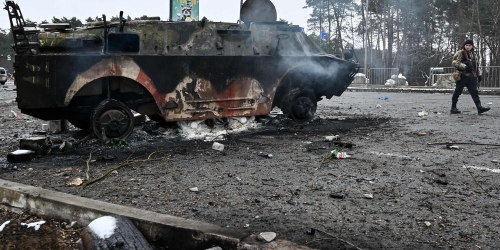
Celui qui, en tant que chef d'État, appelle sa population civile à fabriquer des cocktails Molotov et à se procurer des fusils, accepte à bon compte que les règles de protection de la population ne s'appliquent plus. Ordonner à ses militaires de fortifier et de défendre les villes, c'est accepter de manière calculée que ces villes soient l'objet de combats, de tirs et de bombardements. Celui qui montre avec une fierté évidente devant les caméras de télévision comment de jeunes volontaires reçoivent une formation militaire dans un bâtiment scolaire ne doit pas se plaindre à la télévision, à grand renfort de médias, de la brutalité de l'adversaire lorsqu'il fait tirer sur de tels bâtiments. L'alternative est de déclarer les villes "villes ouvertes" et de les épargner des bombes et des obus, et de mener la guerre dans des "batailles de terrain".
Pour mettre fin à une guerre avant sa défaite, il faut encore pouvoir négocier. Et les négociations ne peuvent être ouvertes que sans conditions préalables. L'expérience montre que plus une guerre se prolonge, plus les conditions imposées par la partie belligérante, jusque-là supérieure, se durcissent.
Poutine est-il un criminel de guerre ?
Poutine s'est actuellement attiré les foudres et les moqueries du monde entier. Les politiciens et les journalistes rivalisent d'invectives, qui contiennent toutes des accusations ou mettent en doute sa responsabilité. Poutine n'est ni inconscient ni mégalomane, il n'est pas fou et ne souffre pas d'une obsession de grande puissance. Même M. Gysi l'a accusé de mener une guerre d'agression criminelle, ce qui fait également de lui un "criminel". Le président Poutine ne pourrait être qualifié de criminel que si les nombreux dirigeants occidentaux qui ont ouvert des guerres évitables au cours des 30 dernières années étaient également qualifiés de criminels et de meurtriers de masse. La différence entre eux et Poutine réside dans la perception qui nous a été transmise à l'époque par les discours des hommes politiques et les reportages des médias. Il s'agissait d'opérations de police ou d'interventions humanitaires. On disait qu'il s'agissait de renverser des régimes injustes, de sauver des régions des armes de destruction massive qui s'y trouvaient, de protéger des minorités, de préserver les droits de l'homme ou le droit des peuples à disposer d'eux-mêmes. Les étiquettes chatoyantes "Pour la démocratie et les droits de l'homme" nous ont souvent masqué la vue.
Poutine est maintenant accusé de toute la misère qu'il a déclenchée en ouvrant la guerre. On passe sous silence ses 22 années d'efforts infructueux, d'abord pour se rapprocher de l'Occident, puis ses supplications, puis ses demandes de ne pas pousser l'élargissement de l'OTAN à l'Est jusqu'à son paroxysme, puis ses "lignes rouges". Mais le "narratif" des politiques et des médias ne commence qu'avec la Crimée et le déploiement de menaces. Comme l'UE, l'OTAN et les États-Unis n'ont manifestement pas pris Poutine au sérieux auparavant et ont tout simplement nié le besoin de sécurité de la Russie, et comme Zelenski, les dirigeants de l'OTAN et les Américains ont joué trop gros à la fin, Poutine n'avait le choix qu'entre l'affirmation de la Russie ou la soumission à la revendication hégémonique des Américains. C'était en réalité le choix entre la soumission ou la guerre, le choix entre la peste et le choléra. Il a alors fait un choix malheureux.
Par ailleurs, il reste que parmi les responsables de la guerre en Ukraine figurent ceux qui n'ont pas tenu la "promesse de non-élargissement de l'OTAN vers l'Est" et qui n'ont pas respecté le droit des peuples à l'autodétermination pour les groupes ethniques de Russes expatriés en Crimée et dans l'est de l'Ukraine. Cela inclut le gouvernement ukrainien, qui a refusé le statut spécial pour Donetsk et Lougansk convenu à Minsk II, et tous ceux qui ont joué gros à la fin et ont attendu de voir comment Poutine réagirait dans son coin.
La réponse
Toute guerre est un crime contre ses victimes. Si l'on cherche les coupables et les criminels de guerre, il ne faut pas négliger ceux qui tirent les ficelles en coulisses. Le seul responsable n'est pas celui qui a d'abord demandé, puis exigé, puis menacé et enfin imposé par la force que l'on respecte ses intérêts légitimes en matière de sécurité. Les acteurs qui ont parlé de liberté de choix des alliances et de droits de l'homme, mais qui ont parlé de gaz naturel, de bases militaires et de parts de marché, sont également coupables et, en fin de compte, criminels de guerre.
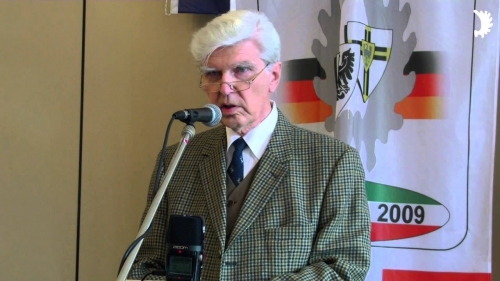
Qui est le Général de division à la retraite Gerd Schultze-Rhonhof?
Gerd Schultze-Rhonhof est né le 26 mai 1939 à Weimar. Après avoir fréquenté le lycée et obtenu son baccalauréat à Bonn, il s'est engagé dans les forces armées en 1959 et a été formé comme officier de chars. En 1964 et 1965, il a effectué un voyage d'étude de six mois en Namibie et en Afrique du Sud. Après trois années passées à la tête d'une compagnie de chars, il a suivi une formation pour servir àétat-major général. Il a ensuite été affecté comme officier d'état-major général au quartier général du groupe d'armées NORTHAG de l'OTAN, à la troupe, au ministère de la Défense et a commandé un bataillon de chars. Schultze-Rhonhof a ensuite lui-même formé pendant quatre ans de futurs officiers d'état-major général à l'Académie du commandement de la Bundeswehr, avant de devenir successivement commandant d'une brigade d'infanterie blindée, de l'École des troupes blindées, de la 3e et de la 1re division blindée et de la zone militaire Basse-Saxe/Brême. Parmi ses dernières missions, le major général Schultze-Rhonhof a dirigé le premier exercice "Partnership for Peace" de l'OTAN en Hongrie et a participé en tant qu'observateur à une manœuvre égypto-américaine dans le désert libyen.

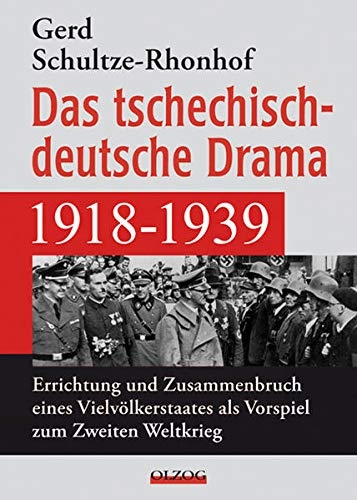
Schultze-Rhonhof a quitté la Bundeswehr en 1996, à sa demande, car il ne voulait pas partager la responsabilité des conséquences d'une réduction inappropriée de la durée du service militaire à 10 mois. Depuis, il a publié en 1997 le livre Wozu noch tapfer sein? , en 2003 le livre Der Krieg, der viele Väter hatte (= "1939, La guerre qui avait plusieurs pères") et en 2008 le livre Das tschechisch-deutsche Drama 1918-1939 (= "Le drame tchéco-allemand 1918-1939″) et d'autres contributions à des livres et à des journaux. En 2013, il a traduit en allemand le livre américain de l'auteur J.V. Denson A Centrury of War et l'a publié sous le titre Sie sagten Frieden und meinten Krieg.
Il a également donné de nombreuses conférences en Allemagne, en Autriche, en Suisse, en Turquie, en Italie et au Pérou. En 1996, Schultze Rhonhof a reçu le prix de la liberté de la fondation "Demokratie und Marktwirtschaft" à Munich et le prix du courage de la "Verband der privaten Wohnungswirtschaft" à Hanovre. En 2012, il a reçu le prix culturel de la Landsmannschaft pour le journalisme libre.
Gerd Schultze-Rhonhof est marié, a trois filles mariées et neuf petits-enfants. Il vit à Haldensleben, près de Magdebourg.
20:12 Publié dans Actualité, Affaires européennes | Lien permanent | Commentaires (0) | Tags : gerd schultze-rhonhof, allemagne, russie, vladimir poutine, ukraine, histoire, europe, affaires européennes |  |
|  del.icio.us |
del.icio.us |  |
|  Digg |
Digg | ![]() Facebook
Facebook
mercredi, 06 avril 2022
Le plan américain de guerre en Ukraine implique aussi l'Europe
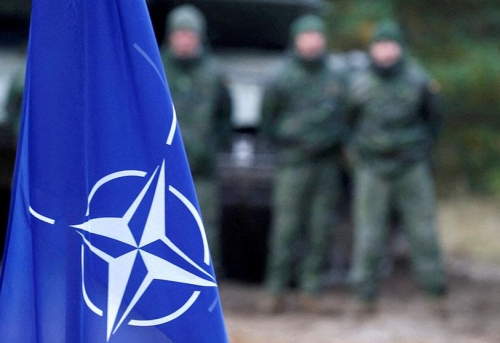
Le plan américain de guerre en Ukraine implique aussi l'Europe
par Luciano Lago
Source: https://www.ideeazione.com/il-piano-americano-per-la-guerra-in-ucraina-coinvolge-anche-leuropa/
Les signaux provenant de la table des négociations, après plusieurs cycles de pourparlers entre l'Ukraine et la Russie, pourraient permettre de progresser et de surmonter la phase d'impasse, avec l'acceptation préalable par l'Ukraine de certaines conditions, mais les États-Unis y ont mis leur veto et leur marionnette Zelensky s'est pliée à leurs directives.
Il n'en reste pas moins que la guerre aurait pu être évitée si les États-Unis et l'OTAN avaient adopté une attitude différente face aux demandes de la Russie concernant sa propre sécurité et la nécessité pour l'OTAN de ne pas s'étendre sous ses frontières. Au lieu de cela, quelqu'un a voulu et instigué la guerre, et ce quelqu'un se trouve à Washington et à Londres.
Toutefois, nous attendons de voir si l'administration Biden opposera définitivement son veto aux pourparlers en cours, étant donné qu'elle soutient le régime de Kiev en lui envoyant massivement de nouvelles armes et des prêts financiers.
Il semble clair désormais que les Etats-Unis ne veulent pas la paix en Ukraine mais la poursuite de la guerre, quel qu'en soit le coût, étant donné que le prix sera payé par d'autres, en premier lieu les Ukrainiens, utilisés comme chair à canon pour les intérêts américains, et en second lieu les Européens qui paieront les plus lourdes conséquences de la crise économique et de l'afflux de réfugiés.
La guerre permet aux États-Unis de maintenir leur hégémonie et est donc un fait utile qui produit des affaires pour l'industrie de l'armement et contribue à engager et à affaiblir la Russie. C'est le point de vue du parti de la guerre qui soutient Biden à Washington et prévaut au Congrès.
Dernier développement en date, le même parti de guerre de Washington a enrôlé les caméras d'Hollywood pour diffuser des images de prétendus massacres commis par les troupes russes en Ukraine et gagner la guerre de propagande médiatique. Il s'agit d'une technique habituelle des services de renseignement anglo-américains, déjà adoptée en Syrie avec l'aide des "casques blancs" mais qui, dans ce contexte, n'a pas donné les résultats escomptés. Il n'est pas certain que cette fois-ci elle puisse produire des résultats, mais face à la clameur des fausses nouvelles, elle pourrait se retourner contre ceux qui l'emploient cyniquement.
Les gouvernements européens suivent la ligne américaine même si elle est en conflit évident avec leurs propres intérêts et sans être conscients que cette ligne les mènera vers le chaos, la récession, les troubles sociaux et, en un mot, vers l'abîme. Le poids de cette politique sera supporté par les sections les plus faibles et les plus défavorisées de la population.
L'arrogance américaine et la servilité européenne semblent n'avoir aucune limite.
Ce qui importe aux États-Unis, c'est la poursuite de l'hégémonie, même si elle sape les fondations de leur propre puissance. Les gouvernements européens suivent sans réserve les directives américaines, même au prix d'une dévastation économique dans leur propre pays.
Tout cela ne peut empêcher l'émergence d'un nouvel ordre multipolaire mondial dans lequel les puissances occidentales seront reléguées à un rôle secondaire et non plus dominant sur la scène internationale.
Liés à leur objectif hégémonique, les États-Unis et le Royaume-Uni poursuivent également l'objectif de détruire l'Union européenne dans sa composante économique. Ceci afin de priver l'Europe de son importante industrie, devenue non compétitive en raison des coûts de l'énergie, de réduire l'agriculture et de rendre l'Europe de plus en plus dépendante et intégrée aux États-Unis, une solution qui présente de nombreux avantages pour l'élite du pouvoir américain. En substance, faire de l'Europe sa propre colonie, un marché pour ses propres industries et toujours subordonnée aux directives du patron américain.
De sorte que l'on puisse percevoir que l'UE restera la principale victime de cette guerre, la guerre que les États-Unis ont constamment et méthodiquement déclenchée contre la Russie pendant de très nombreuses années. La stratégie anti-russe et anti-européenne de Washington n'a pas commencé en 2014, ni même en 2008, mais remonte à bien plus tôt.
Le pire cauchemar des États-Unis a toujours été ce projet eurasien lui-même : un immense espace économique ouvert de Lisbonne à Vladivostok. Une économie totalement autosuffisante avec des perspectives de développement incroyables. Une perspective qui, par le passé, avait eu ses partisans parmi certains politiciens européens qui comprenaient le projet. Il est vrai que, même à l'époque, l'Europe était sous le contrôle des États-Unis, mais il était encore possible à l'époque d'avoir une certaine marge de manœuvre pour construire sa propre politique souveraine. Cependant, ce qui s'est passé depuis a produit un changement pour le pire dans les élites européennes, qui sont de plus en plus subordonnées au pouvoir d'outre-Atlantique.
Les nouvelles élites européennes ne sont que des gouverneurs généraux coloniaux qui, en général, ne se soucient pas de leurs pays et de leurs peuples. Ces gens sont prêts à ruiner même l'économie de leur propre pays, juste pour plaire au maître suprême. L'inclusion des pays baltes et de la Pologne dans l'Union européenne s'est avérée très utile, car ils sont littéralement devenus les chefs d'orchestre de la ferme volonté de leur maître d'outre-mer. L'Europe, qui n'était pas complètement libre dans les années d'après-guerre, a été réduite à la subordination et à la vassalité à la puissance américaine.
De plus, il semble que ce processus soit déjà irréversible. L'Europe ne pourra plus échapper à ce piège et, si elle tente de le faire, elle se prépare à un nouvel afflux de réfugiés, ou à une autre surprise. En ce moment, les troupes américaines se déversent en Europe comme un fleuve. Bientôt, il sera tout à fait possible de parler d'occupation directe.
Et s'il y a des politiciens qui ont le courage de résister à ce processus, on peut être sûr qu'il y aura des tentatives pour les éliminer et les destituer comme agents du Kremlin.
18:25 Publié dans Actualité, Affaires européennes, Géopolitique | Lien permanent | Commentaires (0) | Tags : états-unis, europe, affaires européennes, ukraine, otan, politique internationale, géopolitique |  |
|  del.icio.us |
del.icio.us |  |
|  Digg |
Digg | ![]() Facebook
Facebook
lundi, 04 avril 2022
L'Ukraine et la cyberguerre
L'Ukraine et la cyberguerre
Leonid Savin
Source: https://www.geopolitica.ru/en/article/ukraine-and-cyberwarfare
Dans sa récente interview avec la chaîne de télévision japonaise TBS, le président de la Biélorussie Alexandre Loukachenko a déclaré que les cyber-armes sont plus dangereuses que les armes nucléaires. Il a expliqué que ces armes sont difficiles à détecter et que "nous ne sommes pas prêts à avoir peur de la cybercriminalité et des cyberarmes". Il y a de la logique dans ses propos. Si nous considérons l'informatique comme la science de la rétroaction et de l'interaction homme-machine, alors les armes nucléaires font également partie des cyber-armes, bien que nous ayons l'habitude de considérer le "cyber" uniquement comme relevant de l'Internet et des applications actuelles de contrôle et de communication liées aux gadgets technologiques.
Les armes nucléaires ont servi de stratégie de dissuasion pendant des décennies et n'ont été utilisées que deux fois par les États-Unis en 1945 contre des civils dans des villes japonaises. Les cyberarmes, depuis leur apparition sous la forme de logiciels malveillants, en sont venues à être utilisées comme un moyen de guerre clandestin, bien que leur effet soit principalement des dommages matériels et financiers.
Fondamentalement, "cyber" est un concept, un phénomène et une sphère d'activité très vastes. Des médias sociaux à la fourniture de commandement et de contrôle sur le champ de bataille, tout cela est "cyber". La phase militaire intense de la guerre inclut inévitablement des techniques de manipulation via Internet, mais même en l'absence de combat, la confrontation invisible ne s'arrête pas. Attaques de piratage contre des infrastructures gouvernementales, piratage de systèmes informatiques pour voler et distribuer des données, diffusion de contenus divers faisant partie d'opérations d'information et d'opérations psychologiques - tous ces éléments de la cyberguerre sont constamment utilisés dans la confrontation entre pays.
La crise ukrainienne ne fait pas exception. Les systèmes Starlink d'Elon Musk sont utilisés en Ukraine pour la reconnaissance préliminaire et le ciblage. Diverses plateformes diffusent des appels à la violence et collectent des fonds. Il existe des cas d'utilisation hybride d'Internet. Le 14 mars, les forces ukrainiennes ont tiré un missile balistique Tochka-U sur Donetsk. Vingt personnes ont été tuées et 30 autres ont été blessées, toutes des civils, y compris des enfants. La veille, un appel aux habitants de Donetsk au nom du Comité des mères du Donbass à se rendre à un rassemblement sur la place centrale à midi était apparu sur les réseaux sociaux. C'est à ce moment-là que l'incident s'est produit dans le centre de la ville. "Le Comité des Mères du Donbass" est une fausse structure créée par le service de sécurité ukrainien pour mener des provocations.
Les collectifs de hackers de différents pays ont divisé leurs positions - certains d'entre eux attaquent les sites Web du gouvernement russe, tandis que d'autres font de même pour l'Ukraine. Souvent, c'est la société, et non l'État, qui souffre de ces attaques.
Le 22 mars, on a appris que le plus grand holding agricole de Russie, Miratorg, avait été attaquée par un crypto-malware. Selon les spécialistes qui s'occupent du problème, le processus de récupération des données est difficile en raison du travail nécessaire pour trouver un chiffre pour le cheval de Troie lui-même et les fichiers affectés.
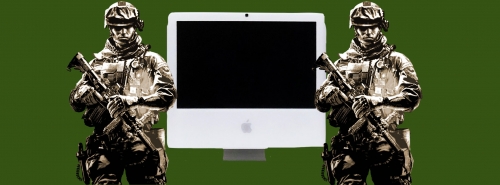
Les États-Unis, quant à eux, utilisent le conflit à leurs propres fins, notamment la cybersécurité. Le 21 mars, la Maison Blanche a publié une déclaration indiquant que la Russie pourrait lancer des cyberattaques sur le territoire américain, et que nous devons donc "accélérer notre travail pour renforcer la cybersécurité intérieure et la résilience nationale". Selon M. Biden, "la Russie pourrait se livrer à des cyberactivités malveillantes contre les États-Unis, notamment en réponse aux sanctions économiques sans précédent que nous lui avons imposées ainsi qu'à nos alliés et partenaires. C'est l'un des éléments de la stratégie de la Russie. Aujourd'hui, mon administration réitère ces avertissements sur la base de renseignements indiquant que le gouvernement russe étudie les possibilités de cyberattaques". Tout cela a été dit sans aucune preuve.
Alors que le conflit exacerbe la réalité politique, ses participants sont contraints de reconsidérer de nombreuses dispositions qu'ils tenaient auparavant pour acquises. Le lundi 21 mars, le tribunal de Tverskoi à Moscou a jugé que Facebook et Instagram, des applications logicielles de Meta Platforms, sont extrémistes. Leurs activités sont désormais totalement interdites en Russie. En fait, il est interdit à Meta d'ouvrir des succursales et de mener des activités commerciales en Russie, car ces activités sont dirigées contre le pays, ses citoyens et les forces armées.
Auparavant, une grande quantité de contenu était diffusée sur Facebook appelant au meurtre de Russes, l'initiative venant de la direction de l'entreprise. Les deux réseaux ont été bloqués en Russie au début du mois de mars. Instagram a ignoré plus de 4500 demandes de suppression de faux sur les opérations spéciales des troupes russes en Ukraine et d'appels à des rassemblements non autorisés.
Maintenant, le tribunal a mis un terme à l'affaire. La représentante de Meta au tribunal a tenté de justifier que les utilisateurs russes comptent sur Facebook et Instagram comme plateformes de communication. Elle a également souligné que les informations à l'origine des réclamations des autorités représentent une partie négligeable du flux total d'informations et que la société a déjà payé des amendes pour des violations. Et le blocage entraînerait la perte d'accès à une énorme quantité d'"informations non controversées". Mais étant donné que les citoyens et les organisations ne seront pas poursuivis pour extrémisme pour avoir utilisé Facebook et Instagram, cet accès est pratiquement préservé. La seule question qui se pose est celle de l'utilisation de serveurs VPN pour contourner le blocage. Il est bien sûr peu probable que la plupart des citoyens qui possèdent des comptes Facebook et Instagram prennent de telles mesures.
L'important est que Meta perde la possibilité de gagner de l'argent auprès des citoyens russes. Commander de la publicité sur les deux réseaux sociaux ou négocier des actions Meta peut être qualifié de financement d'une activité extrémiste - c'est une responsabilité pénale. En outre, tout affichage public de symboles - sur le site Web, sur les portes des magasins et des cafés, sur la voiture, dans les réseaux sociaux, sur les affiches et les cartes de visite - sera un motif de responsabilité administrative pouvant aller jusqu'à 15 jours d'arrestation.
Cependant, il existe encore d'autres organisations en Russie qui présentent des risques pour la sécurité et distribuent du contenu extrémiste (ou suppriment le contenu russe). Google, propriété d'Alphabet, a déclaré avoir bloqué l'accès aux médias d'État russes dans le monde entier et supprimé les contenus sur les actions de la Russie en Ukraine qui violent ses politiques. Google a retiré 1000 chaînes et plus de 15.000 vidéos de YouTube. Apple a également suivi cet exemple et a bloqué le trafic direct et les rapports d'incidents liés à l'Ukraine en coopération avec les autorités locales. Dans une démarche similaire, Apple a également bloqué l'accès aux applications des médias d'État, comme RT News et Sputnik, dans toutes les régions de l'AppStore situées en dehors de la Russie. Apple a également suspendu les ventes de produits et cessé d'exporter vers sa chaîne russe.
Il est fort probable que YouTube soit la prochaine plateforme à être bloquée en Russie. De nombreux experts estiment également qu'il est nécessaire de surveiller d'autres applications et réseaux sociaux plus petits, ainsi que divers médias occidentaux qui diffusent des fausses informations sur la Russie - tous devraient être bloqués et/ou interdits en Russie.
Il est certain que ces interdictions devraient être considérées comme une mesure importante et longtemps retardée pour restaurer la souveraineté informationnelle de la Russie. L'expérience des réseaux sociaux VKontakte et Telegram montre que la Russie peut avoir ses propres découvertes et applications qui ne sont pas inférieures à celles de l'Occident. Et, très probablement, d'autres pays suivront également cet exemple. Pour commencer, la Russie n'est pas le seul pays où les réseaux sociaux des États-Unis sont interdits. Facebook et Twitter sont bloqués en Chine depuis 2009. Une alternative aux réseaux occidentaux en Chine est la plateforme multifonctionnelle WeChat. La situation avec ces réseaux est similaire en Iran. Twitter est interdit en Corée du Nord depuis 2016. Il n'existe pas non plus de réseaux sociaux au Turkménistan. Il est probable que d'autres pays prendront bientôt le relais, limitant ainsi l'influence destructrice exercée par les réseaux américains.
Mais la question de la réglementation juridique de l'Internet en tant que tel reste entière. Les débats à ce sujet durent depuis des années et jusqu'à présent, les pays se sont divisés en deux camps : l'un est en faveur d'un Internet souverain, et l'autre tente d'imposer une politique de multipartisme, où ils font la promotion de leurs propres entreprises en tant qu'acteurs importants dans le domaine de l'Internet.
13:28 Publié dans Actualité, Affaires européennes | Lien permanent | Commentaires (0) | Tags : leonid savin, cyberguerre, ukraine, russie, europe, affaires européennes, politique internationale |  |
|  del.icio.us |
del.icio.us |  |
|  Digg |
Digg | ![]() Facebook
Facebook
vendredi, 01 avril 2022
Dix thèses sur le conflit actuel
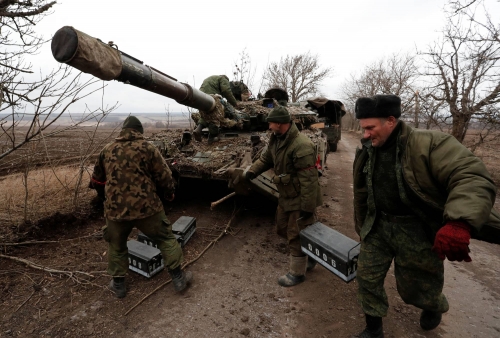
Dix thèses sur le conflit actuel
par Marcello Veneziani
Source : Marcello Veneziani & https://www.ariannaeditrice.it/articoli/dieci-tesi-sul-presente-conflitto
Mais quelle est, en somme, la raison de votre position dissidente face à la guerre actuelle et à la vulgate dominante en Occident ? La demande m'a été adressée par des élèves du secondaire. J'essaie ici de la résumer en dix thèses, qui ne prétendent pas être des vérités péremptoires mais des interprétations différentes. J'aimerais qu'elles soient acceptés, au moins comme des doutes, afin de lire le cours des événements différemment, et de ne pas s'aplatir sur ce que la Fabrique du Consensus impose ou administre. Mais avec une double prémisse : l'attaque russe contre l'Ukraine doit être condamnée dans tous les cas, de manière claire ; la pitié et l'aide au peuple ukrainien sont sacro-saintes.
1) L'Amérique de Biden ne travaille pas à la cessation du conflit mais à sa perpétuation, car son objectif n'est pas de sauver l'Ukraine mais d'éliminer Poutine. Les attaques continues contre Poutine - "criminel de guerre", "boucher" - ainsi que la fourniture d'armes imposée également aux alliés, servent en réalité à prolonger, aggraver et élargir le conflit, à inciter la Russie à le poursuivre et à faire en sorte que Poutine se sente traqué et prêt à utiliser les armes du désespoir ou à bloquer la Chine. Biden fait regretter à Trump la Maison Blanche.
2) Les dommages causés à la Russie par les sanctions et les représailles causent au moins les mêmes dommages à l'Europe et à l'Italie, et en perspective nous conduisent vers une économie de guerre aux résultats dramatiques. Car les mesures anti-russes ne retombent pas du tout sur les Etats-Unis mais sur leurs alliés ; tout comme la crise géopolitique est subie par l'Europe et certainement pas par les Etats-Unis, en raison de leur éloignement.
3) Si nous n'endiguons pas le conflit et ne travaillons pas à sa fin rapide, nous risquons de subir une crise économique, énergétique puis sociale sans précédent, encore pire que celle produite par le covid. Il est nécessaire d'activer tous les médiateurs possibles pour une solution négociée, en partant de la même volonté exprimée par Zelensky de faire de l'Ukraine une zone neutre, non articulée à l'OTAN.
4) Le réarmement de l'Europe, la constitution d'une armée européenne et l'augmentation des dépenses militaires, pourraient également être une nécessité ; mais le faire sous la dépendance stratégique et militaire de l'OTAN et des États-Unis, avec leur apport et, en fin de compte, avec leurs objectifs, qui ne coïncident pas avec les intérêts européens, est une misérable folie.
5) Poutine ne menace pas l'Europe et l'Occident, mais l'attaque contre l'Ukraine peut être interprétée de deux façons, qui sont également liées : dans la pire hypothèse, Poutine veut restaurer la Grande Russie et l'Union soviétique en annexant l'Ukraine, comme c'est le cas depuis trois siècles, et il est juste d'entraver cette intention ; dans la meilleure hypothèse, il veut empêcher l'Ukraine de devenir une épine dans le pied et une base militaire de l'OTAN dirigée contre la Russie. Et c'est sur cela que devraient porter les négociations. Mais dans les deux cas, l'intention d'"attaquer l'Europe" n'existe pas.
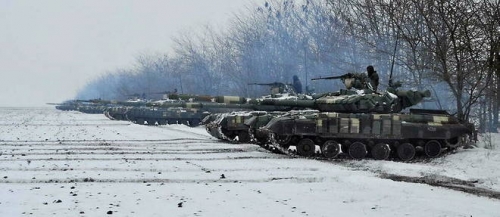
6) Les précédents de cette guerre sont le coup d'État en Ukraine en 2014, la persécution de la minorité russe, le revanchisme nazi rampant, l'installation de laboratoires biochimiques et de centres d'entraînement américains sur le territoire ukrainien, l'annonce de bases militaires de l'OTAN, ainsi que l'entrée de l'Ukraine dans l'Europe. Que ces raisons soient devenues des prétextes à l'agression de Poutine est possible ; mais cela n'enlève rien au fait qu'elles sont fondées.
7) Si Poutine est un criminel de guerre, il l'est au moins autant que les différents présidents américains et premiers ministres britanniques qui ont bombardé des villes, des hôpitaux et des écoles et tué des populations civiles et des enfants en Irak, en Libye, au Yémen, en Syrie, en Serbie, au Kosovo et dans de nombreux autres endroits. Les tuer parfois même en période de trêve avec l'embargo sur les médicaments et les produits de première nécessité.
8) La ligne de partage des eaux entre le bien et le mal selon l'aune américaine n'est pas la démocratie, la liberté, la protection des droits civils, mais la commodité stratégique. Les États-Unis n'ont aucun scrupule à avoir dans l'OTAN un autocrate, comme ils reprochent à Poutine de l'être, je veux parler du Turc Edogan, et à avoir comme allié traditionnel l'Arabie Saoudite où les droits civils sont foulés aux pieds.
9) Quatre dangers menacent l'Occident : a) l'expansion mondiale des Chinois, la conquête de continents entiers et l'exportation de leur modèle au monde entier ; b) l'expansion démographique et migratoire de l'Islam dans un Occident vidé de ses naissances et de ses valeurs ; c) le suicide assisté de l'Occident lui-même en proie au nihilisme, à la perte de vitalité, à la honte de sa propre civilisation. d) La volonté de toute-puissance des USA qui, avec les Dems au pouvoir, veulent être l'Empire du Bien et les gendarmes du monde, décidant des droits ou désignant les états dits voyous sur la base de leurs intérêts, générant des réactions dans le monde entier.
10) Contrairement à certains partenaires européens récalcitrants et critiques face aux impératifs de Biden, l'Italie de Draghi et des Dems est le pays qui s'est le plus aligné sur les faucons, demandant l'envoi de nos armes et de nos soldats et l'élimination de Poutine en tant que criminel de guerre. Et les tambours de la télévision et des médias, dans leur obsession mono-thématique, comme à l'époque de la propagande de guerre, se sont conformés et n'admettent pas la dissidence. Une ligne qui trahit la tradition politique de prudence et de négociation qui a caractérisé l'Italie et notre République, dirigée par Moro, Andreotti et Craxi. Avoir, en temps de guerre, un haut commissaire euro-atlantique au Palazzo Chigi au lieu d'un leader politique nous expose à ces effets.
Telles sont les raisons de notre dissidence et elles sont motivées. Quiconque conclut que nous sommes pro-Poutine est soit de mauvaise foi, soit un crétin. Nous aimons la vérité et nous sommes pour l'Italie, pour l'Europe et pour un monde équilibré, pacifique et multipolaire.
16:13 Publié dans Actualité, Affaires européennes, Géopolitique | Lien permanent | Commentaires (0) | Tags : actualité, ukraine, guerre en ukraine, russie, europe, affaires européennes, géopolitique |  |
|  del.icio.us |
del.icio.us |  |
|  Digg |
Digg | ![]() Facebook
Facebook
dimanche, 27 mars 2022
Du conflit limité au conflit mondial
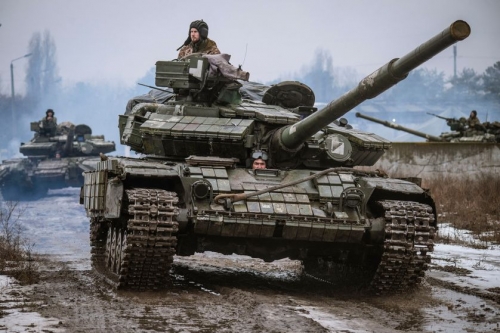
Du conflit limité au conflit mondial
Par Daniele Perra
Source: https://www.eurasia-rivista.com/dal-conflitto-limitato-al-conflitto-globale/
Lors d'une réunion de la Force expéditionnaire conjointe (une initiative interne de l'OTAN dirigée par le Royaume-Uni qui réunit les États scandinaves et baltes), le président ukrainien Volodymyr Zelens'kyi, après avoir insisté sur un soutien accru de l'Europe (ses déclarations sont toujours parfaitement conformes aux souhaits de Washington), a candidement admis que son pays ne pourra pas rejoindre l'Alliance atlantique [1].
Ces déclarations, et le contexte dans lequel elles ont été faites, peuvent être interprétées de plusieurs façons. Tout d'abord, on peut être assez perplexe d'entendre que les dirigeants politiques ukrainiens aient réalisé, trois semaines après le début du conflit, que leur entrée dans l'OTAN est hors de question. Deuxièmement, on ne sait pas exactement ce que le président ukrainien veut dire lorsqu'il demande à l'Europe d'en faire plus. En fait, l'Union européenne a déjà garanti une fourniture d'armes à l'Ukraine à hauteur de 450 millions d'euros. Les Etats-Unis ont garanti 350 millions de dollars, en plus des 650 millions fournis en 2021 ainsi que 90 tonnes de matériel de guerre. Plus précisément, les États-Unis et l'OTAN ont fourni à l'Ukraine 17.000 missiles antichars Javelin (fabriqués par Lockheed Martin Corp) et 2000 Stingers (fabriqués par Raytheon). Le directeur exécutif de Raytheon, Gregory J. Hayes, a déclaré le 25 janvier de cette année : "Il suffit de regarder les dernières semaines: les attaques de drones aux Émirats arabes unis, les tensions en Europe de l'Est et en mer de Chine méridionale. Toutes ces choses exercent une pression sur les dépenses militaires dans ces régions. Je m'attends donc à voir d'énormes avantages pour nous" [2].
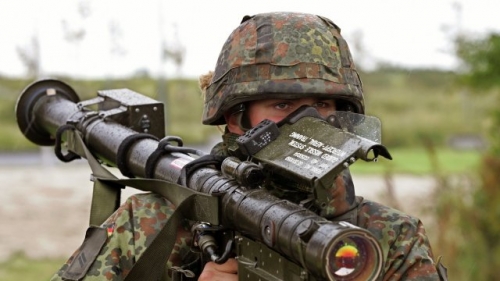
En fait, à l'heure actuelle, le seul véritable gagnant dans ce conflit semble être l'industrie occidentale de l'armement. Elle a déjà gagné plus de mille milliards de dollars grâce à la guerre. Cela nous amène à nous interroger, et à soulever de nouvelles questions, sur un autre aspect de la déclaration de Zelensk'yi : a-t-on fait quelque chose pour éviter ce conflit ? La réponse est non. Pourquoi rien n'a été fait ? La réponse, dans ce cas, ne peut ignorer le fait géopolitique.
Le journaliste italien Manlio Dinucci a démissionné du "quotidien communiste" Il Manifesto après que ce dernier a rapidement retiré de son site web un article dans lequel il révélait le plan de la Rand Corporation (une organisation soi-disant sans but lucratif financée par le Pentagone) pour faire plier la Russie. L'organisation se vante, entre autres, d'avoir conçu la stratégie qui a fait plier l'URSS à la fin du 20e siècle. Selon l'analyste Peter Schweizer, cela reposait sur cinq étapes fondamentales: a) attirer Moscou dans la course aux armements en engageant d'énormes dépenses pour la "guerre des étoiles" ; b) maintenir les prix du pétrole à un bas niveau ; c) encourager le blocus occidental des investissements en URSS ; d) soutenir la lutte de Solidarnosc en Pologne ; e) soutenir la rébellion en Afghanistan [3].
Le nouveau plan de la Rand Corp, publié en 2019, reprend (avec les différences qui s'imposent) celui des années 1980. Il envisage d'attaquer la Russie sur son côté le plus vulnérable, l'exportation d'hydrocarbures, pour amener l'Europe à réduire ses importations de gaz russe au profit du GNL nord-américain. Sur le plan intérieur, il envisage de continuer à attiser les protestations antigouvernementales en exploitant une importante cinquième colonne. Tandis que, sur le plan militaire, il envisage la poursuite de la croissance du rôle de l'OTAN en Europe. Grâce à cette stratégie, les États-Unis ont une forte probabilité de succès avec un risque minimal. En outre, "fournir une aide létale à l'Ukraine permettrait d'exploiter la plus grande vulnérabilité externe de la Russie, mais toute augmentation des armes américaines et de la fourniture militaire à l'Ukraine devrait être soigneusement calibrée pour augmenter le coût pour la Russie sans provoquer un conflit beaucoup plus important dans lequel la Russie, en raison de sa proximité, obtiendrait des avantages significatifs" [4].
Quels seraient ces "avantages significatifs" ? Le célèbre stratège Zbigniew Brzezinski, dans son ouvrage le plus célèbre, The Grand Chessboard, craignait que la Russie ne reprenne possession du littoral de la mer Noire. Ceci, selon le théoricien de "l'arc de crise" et de la balkanisation de l'Asie centrale, permettrait à la Russie de trouver un moyen d'être et d'exister en tant qu'"État impérial" s'étendant sur l'Europe et l'Asie [5].
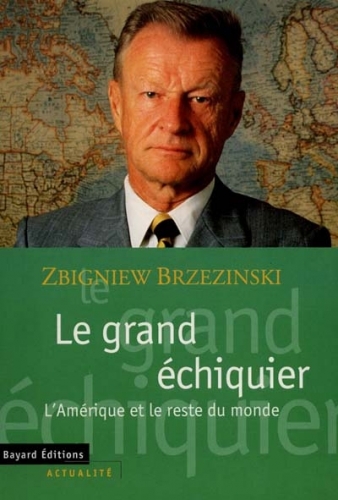
Maintenant, si nous jetons un coup d'œil rapide à la carte de l'Ukraine à la lumière de l'opération spéciale des forces militaires russes, il est clair que l'objectif est précisément de prendre le contrôle de la bande côtière d'Odessa à Marioupol (il n'est pas surprenant que les combats aient été les plus intenses dans cette région), tandis que l'encerclement de Kiev est réservé au simple rôle de pression dans les négociations. De plus, à ce jour, l'armée ukrainienne (qui est difficile à encadrer en tant que structure unitaire) ne semble avoir aucune possibilité de contre-offensive, indépendamment du flux continu d'aide militaire de l'Occident. Il va sans dire que cela porterait un préjudice considérable à la stratégie de l'OTAN consistant à utiliser l'Ukraine comme un pont vers la région de la Transcaucasie [6]. Et cela laisse planer quelques doutes quant à la volonté réelle des États-Unis de pousser la crise jusqu'à provoquer ce "conflit" dont la Russie tirerait les "avantages significatifs" susmentionnés.
Ainsi, s'il est vrai qu'à court terme, la crise géopolitique profite à la stratégie nord-américaine d'affaiblissement de la reprise économique européenne post-pandémique afin de canaliser les flux de capitaux vers les États-Unis, il est tout aussi vrai qu'à long terme, les effets de l'opération militaire russe pourraient être bien plus complexes qu'on ne l'imagine actuellement.
En fait, du point de vue occidental, il reste l'espoir que la prolongation du conflit jusqu'au bout et le lourd régime de sanctions imposé à Moscou puissent conduire à une intensification des divisions internes, à un "changement de régime" et à un gouvernement russe plus ouvert au dialogue avec Washington et, par conséquent, à la construction d'un éventuel front commun contre la véritable menace à l'hégémonie mondiale nord-américaine : la Chine. Cependant, il semble également que le conflit actuel impose une puissante accélération à certaines dynamiques historiques qui s'étaient déjà manifestées au cours des années précédentes, mises en évidence par la crise pandémique, et pas toutes conformément aux souhaits des États-Unis.
En fait, à l'"Ouest", ces dernières années ont été marquées par une réduction continue de la marge de manœuvre des dirigeants politiques, avec un transfert du pouvoir de décision vers ce que l'on appelle les "états-majors de l'information" : l'imbrication des services secrets d'État et de ceux liés aux grandes sociétés industrielles et financières. Cela a conduit à un renforcement de ce "capitalisme de surveillance", déjà manifesté pendant les deux années de la pandémie et précédé au début des années 2000 par le Patriot Act de l'administration Bush, qui transforme rapidement l'espace hégémonique des États-Unis en une sorte de "cage d'acier" wébérienne de la pensée unique libérale.
En ce sens, la géopolitique de la vaccination et la mise en service de l'État au profit des multinationales n'ont été qu'un avant-goût de ce que sera l'avenir de l'Occident. Par exemple, l'"état d'urgence" permanent dissimule la volonté de l'actuel gouvernement italien de vendre le peu qui reste du patrimoine national au profit de sociétés et de fonds d'investissement étrangers : la vente de 49% d'Enipower à Sixth Street, une société créée par d'anciens cadres de la banque d'investissement Goldman Sachs [7], n'est pas la moindre.
Cependant, le conflit ukrainien pose également des problèmes en termes de durabilité du système mondial hégémonisé par les États-Unis. A l'heure où nous écrivons ces lignes, au-delà des pays traditionnellement inclus dans le contexte "occidental", la vulgate des sanctions contre la Russie ne semble pas avoir fait de percée dans le reste du monde.
La Turquie, deuxième armée de l'OTAN, ne semble pas du tout disposée à suivre le régime des sanctions, préférant un rôle de médiation entre l'Ukraine et la Russie. Il en va de même pour la Chine, peu encline à ruiner sa coopération commerciale avantageuse avec la Russie, et l'Inde, qui étudie avec Moscou des formes alternatives à l'utilisation du dollar dans les transactions commerciales réciproques. En outre, la République populaire de Chine et l'Arabie saoudite étudient la possibilité d'utiliser le yuan comme monnaie de référence dans le commerce du pétrole (la Chine importe 25 % de ses besoins en pétrole brut d'Arabie saoudite) [8]. Cela ébranlerait sérieusement le fondement de la mondialisation américaine, c'est-à-dire la mondialisation du dollar qui a vu le jour lorsque, en accord avec l'OPEP, les États-Unis ont arrimé leur monnaie au commerce international du pétrole. Cet acte leur a permis d'imposer au monde le principe selon lequel pour acheter du pétrole, il faut des dollars et pour obtenir des dollars, il faut se soumettre aux souhaits du producteur de dollars.
C'est également la raison des attaques constantes des États-Unis contre la seule monnaie qui a jusqu'à présent timidement défié l'hégémonie du dollar: l'euro. Et c'est la principale raison de l'obsession nord-américaine pour le contrôle hégémonique de l'Europe et pour contenir son renforcement politique potentiel par une expansion constante vers l'Est (la pression pour l'élargissement de l'Union à la Moldavie, à la Géorgie et à l'Ukraine elle-même n'est pas surprenante).
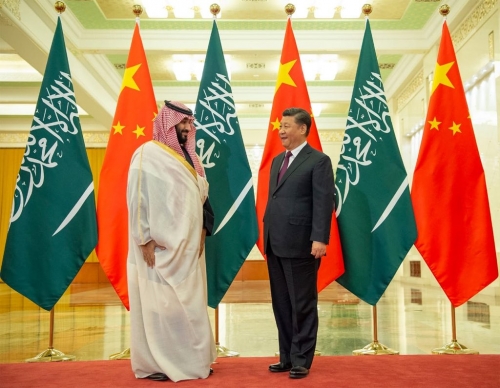
Pour en revenir au cas saoudien, il est utile de comprendre ce qui a déterminé la décision de Riyad de refuser une augmentation de la production de pétrole pour compenser la baisse des exportations russes. Outre les facteurs purement économiques (le prix élevé du pétrole est une panacée pour les coffres saoudiens mis à mal par les dépenses militaires dues à sept années d'agression infructueuse contre le Yémen), d'autres facteurs entrent en jeu. Après les administrations plus que condescendantes d'Obama et de Trump, Biden s'est surtout attaché à réduire le soutien logistique américain à la guerre susmentionnée contre le Yémen. L'objectif était ici de rouvrir la porte à l'Iran (un soutien d'Ansarullah) et à la négociation de l'accord nucléaire. Ceci, dans les plans de Washington, aurait dû limiter le développement excessif de la coopération entre Téhéran, Pékin et Moscou (sans oublier que Brzezinski lui-même a soutenu la thèse selon laquelle la communion d'intentions entre ces trois forces aurait mis en grande difficulté la stratégie hégémonique globale des Etats-Unis). Une négociation qui, à vrai dire, ne semble pas promise à un brillant avenir. Les États-Unis ne peuvent pas garantir (ou, plus probablement, ne veulent pas garantir) qu'un éventuel changement d'administration en 2022 pourrait entraîner un nouveau retrait unilatéral.
Dans le même temps, la partie iranienne semble rechercher une stratégie étrangère déconnectée du succès ou non de l'accord (une stratégie qui inclut la réponse sévère aux attaques sionistes en Syrie par le récent bombardement des installations du Mossad au Kurdistan irakien). Par conséquent, la réaction saoudienne ne peut être attribuée uniquement à la tentative américaine d'établir de nouveaux canaux de négociation avec l'Iran ou au regain d'intérêt des médias occidentaux pour l'affaire Khashoggi. Cela semble plus facilement lié au fait que les Etats-Unis, ces dernières années, ont réduit drastiquement l'importation de pétrole en provenance d'Arabie Saoudite, se transformant en un concurrent important du Royaume et au fait que Riyad a commencé à nourrir pas mal de doutes sur le rôle effectif de Washington dans la région. Cette dernière, en effet, paraphrasant la célèbre motion d'Henry Kissinger, semble beaucoup plus intéressée par la protection de ses propres intérêts que par celle de ses alliés (réels ou supposés).
La réaction des Émirats arabes unis et du Venezuela n'est pas très différente de la réaction saoudienne. Caracas, après des décennies de sanctions et de tentatives répétées de déstabilisation interne, a fait de la levée du régime de sanctions et de la reconnaissance de la légitimité du gouvernement Maduro une condition pour exporter son pétrole brut vers l'Europe : une "perte de face" donc, qu'un Occident engagé dans une énième "croisade démocratique" hypocrite contre ce que Carl Schmitt définissait comme le retour du "machiavélisme politique" ne peut se permettre. (Sans surprise, Nicolas Maduro lui-même a parlé d'un conflit mondial déjà en cours, bien que limité au domaine économico-financier).
Les plus enclins à satisfaire les exigences de l'Occident semblent être le Qatar (où se trouve la plus grande base américaine d'Asie occidentale) et le Bahreïn (monarchie sunnite dans un petit pays à majorité chiite à la légitimité douteuse et déjà protagoniste des "accords d'Abraham").
Aujourd'hui, en observant le tableau général de l'évolution des relations internationales (et face au constat que l'Occident ne produit pas de matières premières et que son secteur manufacturier a été drastiquement réduit au cours des décennies précédentes au nom de l'économie virtuelle et d'une mondialisation présumée immuable), il apparaît évident que souffrir de l'isolement, à moyen-long terme, ce ne sera pas le fait de la Russie, mais de la partie du monde insérée dans la "cage d'acier" du totalitarisme libéral.
Et aujourd'hui, le seul moyen de resserrer encore les mailles de cette cage est de prolonger le plus longtemps possible le conflit en Ukraine, ce qui permet également au complexe militaro-industriel de respirer. Cette voie est possible grâce au flux constant d'armes et de mercenaires sur le sol du pays d'Europe de l'Est.
Le rôle de la tristement célèbre société contractante Blackwater (Xe Services depuis 2009, Academi depuis 2011) et de son fondateur Erik Prince mérite une brève mention.

Connu dans les médias pour avoir tenté de saper les entreprises russes dans leur soutien à Khalifa Haftar en Libye, M. Prince a obtenu 2 milliards de dollars de contrats gouvernementaux de Washington entre 1997 et 2010 pour soutenir l'effort de guerre en Irak et en Afghanistan, plus 600 millions de dollars supplémentaires de la CIA pour des contrats classés secrets [9]. Ses hommes ont été interdits d'Irak après le massacre de la place Nisour à Bagdad (septembre 2007), au cours duquel 17 civils irakiens sont morts et 20 autres ont été gravement blessés. Et lui-même a été impliqué de diverses manières dans des affaires de trafic d'armes, de pétrole et de minéraux précieux. Cela en dit long sur le rôle que jouent les groupes privés dans les territoires où ils opèrent.
Son lien avec l'Ukraine est tout aussi problématique. Dès février 2020, Prince aurait exprimé au conseiller de Volodymyr Zelensk'yi, Igor Novikov, son intérêt pour la création d'une société militaire privée composée d'anciens vétérans de la guerre dans le Donbass. En outre, il aurait soutenu l'idée de créer une entreprise pour produire des munitions et de réunir les principales compagnies d'aviation du pays sous une seule marque. L'objectif, en fait, aurait été de créer un "consortium de défense aérienne verticalement intégré" [10] capable de concurrencer des géants comme Boeing et Airbus grâce à l'acquisition d'Antonov et de la société Motor Sich (la principale entreprise ukrainienne produisant des moteurs d'avion). L'opération aurait dû être soutenue par une pression nord-américaine afin de s'assurer que Motor Sich elle-même n'était pas rachetée par des sociétés chinoises (une pratique également largement utilisée en Italie).
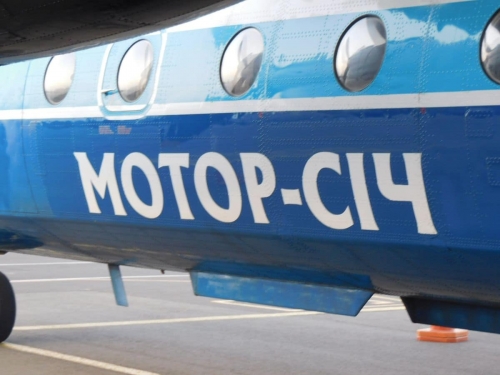
Au début de l'été 2020, l'Ukraine a pris les premières mesures pour faire du projet de l'"entrepreneur" nord-américain une réalité. En juin de la même année, Prince est entré en contact direct avec le bureau présidentiel ukrainien par l'intermédiaire de l'ancien producteur de télévision et ami personnel de Zelensk'yi Andriy Yermak (également connu pour son rôle d'interlocuteur direct de Kurt Volker et Rudy Giuliani dans la création de dossiers anti-Biden en échange du déblocage de l'aide militaire américaine à l'Ukraine sous l'administration Trump).
Le plan d'affaires prévoyait, entre autres, le développement d'une coopération étroite avec les services de renseignement ukrainiens pour la planification stratégique et logistique et pour la formation des forces de sécurité ukrainiennes.
Ces faits ne s'opposent guère aux déclarations du porte-parole de la milice populaire de la République de Donetsk, Eduard Basurin, qui a dénoncé la présence de formateurs militaires américains dans la région de Sumy, dont l'origine remonte à Academi. Plus précisément, ils auraient préparé les milices du bataillon Azov à une attaque imminente de grande envergure dans le Donbass.
En outre, en novembre 2021, le ministère russe de la Défense a tiré la sonnette d'alarme sur la présence dans l'est de l'Ukraine de 120 mercenaires occidentaux dont la tâche, outre la formation des milices ukrainiennes, serait de stocker des composants chimiques le long de la ligne frontalière avec les républiques séparatistes afin de servir de justification à d'éventuelles attaques [12].
À ce stade, également en raison du fait que la propagande occidentale tente de présenter ces personnages comme des combattants de la liberté, il est nécessaire de distinguer les différents niveaux de sociétés agissant sur le sol ukrainien. Tout d'abord, il y a les sociétés militaires privées directement impliquées dans les activités (beaucoup des membres de la soi-disant "légion étrangère" de Zelens'kyi sont d'anciens soldats recrutés par le biais de ces agences et envoyés en Ukraine avec l'approbation des pays européens). Deuxièmement, il y a les sociétés de sécurité privées qui ont formé les milices ukrainiennes avec les hommes de l'OTAN. Troisièmement, il y a les entreprises qui fournissent un soutien logistique et sont impliquées dans le transfert de matériel de guerre également déguisé en aide humanitaire (comme cela s'est produit à l'aéroport de Pise) [13].
Du côté russe, des sources occidentales ont affirmé la présence du célèbre groupe Wagner sur le front de Kiev. La tâche qui lui est attribuée est l'élimination directe des dirigeants politiques ukrainiens lorsque les forces russes entrent dans la capitale.
Le groupe Wagner (rebaptisé Liga) aurait également eu pour mission d'infiltrer des volontaires syriens et des mercenaires centrafricains sur le sol ukrainien. Pour l'instant, cependant, les chaînes occidentales d'Open Source Intelligence, toujours prêtes à montrer sous différents angles des images de véhicules blindés russes détruits, abandonnés ou capturés, n'ont pas encore identifié de soldats tombés au combat ayant une pigmentation de peau différente de celle de la région.
Notes:
[1] Ukraine’s leader asks Europe to do more but admits NATO membership is not in the cards, www.washingtonpost.com.
[2] Ukraine: the world’s defense giants are quitly making billions from the war, www.theconversation.com.
[3] Cf. P. Schweizer, Victory: the Reagan Administration’s secret strategy that hastened the collapse of the Soviet Union, Atlantic Montly Press, New York 1994.
[4] Manlio Dinucci – Ucraina, era tutto scritto nel piano della Rand Corp, www.lantidiplomatico.it.
[5] Z. Brzezinski, The Grand Chessboard. American Primacy and Its Geostrategic Imperatives, Basic Books, New York 1997, p. 46.
[6] Voir C. Mutti, Il limite della pazienza russa, www.eurasia-rivista.com.
[7] ENI sells 49% of Enipower to Sixth Street, www.eni.com.
[8] Saudi Arabia considers accepting yuan instead of dollars for Chinese oil sales, www.wsj.com.
[9] I contractors dell’intramontabile Erik Prince tra Libia, Afghanista e Ucraina, www.analisidifesa.it.
[10] Ibidem.
[11] Blackwater mercenaries training far-right militia in Ukraine. Dontesk military commander claims, www.morningstaronline.co.uk.
[12] Russia claims US military contractors amassing toxic chemicals, training Ukraine troops, www.newswek.com.
[13] Voir Contractors e compagnie militari e di sicurezza nella guerra in Ucraina, www.analisidifesa.it.
14:31 Publié dans Actualité, Affaires européennes | Lien permanent | Commentaires (0) | Tags : ukraine, europe, affaires européennes, politique internationale |  |
|  del.icio.us |
del.icio.us |  |
|  Digg |
Digg | ![]() Facebook
Facebook
vendredi, 25 mars 2022
La carte tatar d'Erdogan
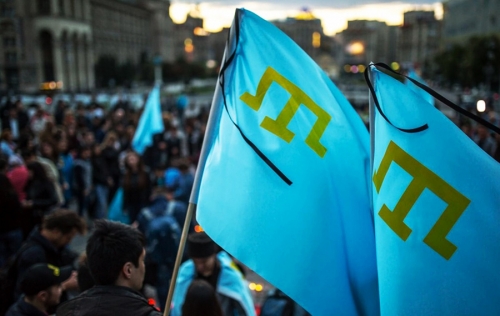
La carte tatar d'Erdogan
La Turquie dispose d'un avantage considérable par rapport aux autres pays pour servir de médiateur entre l'Ukraine et la Russie. L'activisme d'Ankara est dicté par une stratégie préparée au fil des ans. Un bref excursus.
Emanuel Pietrobon
Source: https://www.dissipatio.it/erdogan-zelensky-pace/
L'Ukraine de Zelensky a dès le départ tenté d'obtenir le statut de membre observateur au sein du Conseil de coopération des pays de langue turque, également connu sous le nom de "Conseil turc", une organisation internationale basée à Ankara. Cette nouvelle n'est en fait pas une nouvelle pour ceux qui ont suivi l'évolution de la dynamique ukrainienne depuis l'ère post-Euromaidan. En gagnant la bataille pour l'Ukraine, l'Occident a réussi à se rapprocher de la réalisation du rêve de Zbigniew Brzezinski d'expulser la Russie de l'Europe, la transformant en un "empire asiatique". Entre ce scénario et sa réalisation finale, il ne reste plus que trois obstacles : le Belarus, la Moldavie et la Serbie.
En bref, ce à quoi nous assistons, c'est à la disparition de tout le système d'États tampons construit par Staline dans l'entre-deux-guerres pour protéger la Russie d'une invasion extérieure. Ce système est sur le point de s'effondrer car il a été incorporé dans l'orbite euro-américaine par l'élargissement de l'Union européenne et de l'Alliance atlantique. Aujourd'hui, la Russie est encerclée de partout - pas seulement au départ de l'Europe, pensez par exemple à ce qui se passe dans le Caucase du Sud et en Asie centrale. Mais revenons à l'Europe. La Biélorussie est secouée par une grande mobilisation d'une partie ostensible de sa société depuis la nuit du 9 août 2021 ; la Moldavie est un acteur vulnérable en raison de son besoin constant d'investissements étrangers et de la présence d'une minorité turque en Gagaouzie que la Turquie subjugue habilement, tandis que la Serbie est presque entièrement entourée de pays de l'OTAN, même si sa position au sein de l'orbite russe ne semble pas se fissurer pour l'instant (à voir également les manifestations pro-russes de ces jours-ci).
Pour en revenir à l'Ukraine, l'entrée au Conseil turc ne se prête qu'à une seule interprétation : le pays passerait rapidement du monde russe au monde turc. Cette situation ne caractérise pas seulement Kiev, mais de nombreux autres pays, comme les anciens États soviétiques d'Asie centrale et l'Azerbaïdjan, et des régions, comme la Gagaouzie, que je viens de mentionner, et les républiques russes à composition ethnique turque, du Caucase du Nord à la Sibérie. La nouvelle du projet ambitieux du gouvernement ukrainien a été donnée par Emine Dzheppar (photo, ci-dessous), une politicienne ukrainienne d'origine tatare qui a récemment été nommée première vice-première ministre chargée des affaires étrangères. M. Dzheppar, interviewé dans le passé par l'agence de presse turque Demirören, a expliqué que la présidence Zelensky souhaitait rejoindre le Conseil turc parce que :
"Nous sommes des pays voisins. L'Ukraine est l'héritière de la culture turque. Les Tatars de Crimée sont un pont entre l'Ukraine et la Turquie" (Emine Dzheppar).
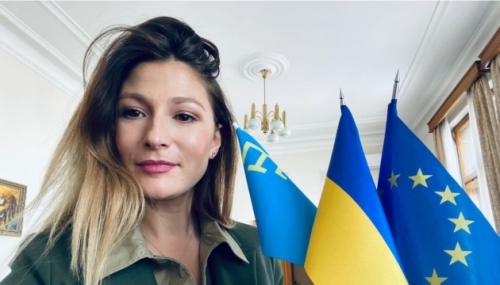
S'il est vrai que les Tatars constituent un point de connexion utile entre l'Ukraine et la Turquie, le passage sur la prétendue identité turque de l'Ukraine est discutable. En fait, elle n'est même pas discutable : elle est tout à fait anti-historique. Il s'agit d'une tentative de réécrire à la fois l'histoire et l'identité de l'Ukraine, qui est, était et sera toujours le berceau de la civilisation russe. Les Tatars représentent une très petite minorité - environ 70.000 personnes selon le recensement de 2001 - mais ils sont la clé de voûte de l'Ukraine pour entrer dans les bonnes grâces de la Turquie et de l'Occident.
Dès le départ, la décision de rejoindre le Conseil turc a été précédée de nombreuses autres initiatives et l'entrée finale dans l'organisation n'était que l'étape naturelle d'un voyage entamé par Volodymyr Zelensky en août 2019 par une visite officielle à Ankara. Depuis lors, les deux pays ont rapidement construit un partenariat stratégique très solide qui, aujourd'hui, s'étend du commerce à l'industrie, de la défense à la sécurité régionale, de la politique étrangère à la Crimée. Ce dernier point est particulièrement important pour les deux, car il s'agit d'un moyen de saper la grande stratégie de la Russie pour la mer Noire.
Mais pourquoi, dans le passé, l'Ukraine est-elle sur le point de devenir une partie intégrante du monde turc ? Il ne s'agit pas seulement du Conseil turc, de nombreux autres événements se sont produits au cours des dernières années. En juillet 2021, l'ambassadeur turc à Kiev, Yagmur Ahmet Gulder, a annoncé que la Turquie allait construire une maxi-mosquée au cœur de la capitale ukrainienne. Les négociations concernant le terrain ont déjà été résolues et les travaux devraient bientôt commencer. Une fois terminée, la mosquée sera la plus grande du pays : le projet prévoit une capacité d'au moins 5000 fidèles. Le gouvernement turc a fourni cinq millions de dollars pour sa construction. L'idée de construire une nouvelle mosquée à Kiev ne vient pas de Turquie, mais de Mustafa Dzhemilev, le chef du Mejlis, l'organe représentatif officiel des Tatars, qui a été mis hors la loi en Crimée pour cause d'extrémisme. Selon Dzhemilev, le pays a besoin d'une nouvelle mosquée en raison de l'arrivée de dizaines de milliers de Tatars de la péninsule au cours des six dernières années.
Avec en toile de fond les négociations sur la mosquée, la Turquie travaille depuis des années à la construction d'appartements résidentiels pour des centaines de familles tatares dans les villes de Kharkiv, Lviv, Odessa, Kherson et Dnipro. Ces deux initiatives ont été très bien accueillies par la minorité turque et amélioreront considérablement l'image de Recep Tayyip Erdogan en tant que protecteur du peuple turc et des musulmans en général. Mais avant même l'annonce de la mosquée, un événement historique s'est produit le 18 mai. Zelensky avait inclus deux célébrations islamiques très importantes dans le calendrier national des jours fériés : la fête du sacrifice (Eid al-Adha) et la fête de la rupture du jeûne (Eid al-Fitr).
La date de l'annonce a été soigneusement choisie car l'objectif était d'accroître la portée symbolique de l'acte : en effet, le 18 mai de chaque année, les Tatars observent ce que l'on appelle la "Journée de commémoration des victimes du génocide des Tatars de Crimée". Depuis 2014, cet événement historique est officiellement inclus dans la liste des guerres de mémoire liées à la Seconde Guerre mondiale qui divisent l'Occident et la Russie. Aujourd'hui, cette date, grâce à Zelensky, a pris une importance égale pour les Ukrainiens, les Tatars et les Turcs. Selon le président ukrainien, la reconnaissance officielle des fêtes islamiques est une étape fondamentale vers la construction d'une "nouvelle Ukraine au sein de laquelle chacun peut se sentir citoyen".
Le même jour, M. Zelensky a également annoncé la formation d'un groupe de travail au sein du bureau de la présidence, spécialisé dans les questions relatives aux Tatars. L'objectif était d'améliorer les conditions de vie de la minorité dans le pays. Ce sont donc les Tatars qui ont conduit l'évolution du partenariat turco-ukrainien formé l'année dernière. En août dernier, Zelensky a assisté à l'inauguration d'un bureau de représentation des Tatars de Crimée à Ankara. En février, c'était au tour d'Erdogan à Kiev, où le président turc a annoncé un plan de logement pour les Tatars qui avaient fui la péninsule, réaffirmant que son gouvernement ne reconnaîtrait jamais le nouveau statu quo car "la Crimée est la patrie historique des Tatars".
La carte tatare est utile aux deux parties : Kiev peut améliorer son image à l'Ouest, Ankara peut accroître son prestige dans le monde turc et islamique et, simultanément, élargir sa marge de manœuvre à l'intérieur de l'Ukraine dans l'espoir de combler le vide de pouvoir laissé par le Kremlin. Enfin, comme cela a déjà été écrit, jouer la carte des Tatars est le seul moyen pour les rivaux ou les pacificateurs de la Russie de garder ouverte la possibilité de déstabiliser la péninsule par une insurrection à motivation ethnique - ou, comme c'est le cas actuellement, de servir de médiateur entre les deux prétendants. La Russie est confrontée à un défi historique, car le scénario tant redouté de l'encerclement qui hantait les rêves de Staline est devenu une réalité, et la chute des États de la zone-tampon entraînera un déplacement de l'attention vers les républiques turco-musulmanes de Russie. Le risque d'une implosion de type soviétique est élevé, et les dirigeants du Kremlin sont appelés à élaborer une refonte stratégique globale : il en va de la survie même de la Russie telle que nous la connaissons aujourd'hui.
16:01 Publié dans Actualité, Affaires européennes, Géopolitique | Lien permanent | Commentaires (0) | Tags : ukraine, tatars, erdogan, turquie, europe, affaires européennes, actualité, politique internationale, géopolitique, crimée |  |
|  del.icio.us |
del.icio.us |  |
|  Digg |
Digg | ![]() Facebook
Facebook
L'impact économique de la crise en Ukraine

L'impact économique de la crise en Ukraine
Leonid Savin
Source: https://www.geopolitica.ru/article/ekonomicheskie-posledstviya-krizisa-na-ukraine
Le 15 mars 2022, le FMI a publié un article d'un groupe d'auteurs indiquant que l'impact passerait par trois canaux principaux. Premièrement, la hausse des prix des produits de base tels que les denrées alimentaires et l'énergie entraînera une nouvelle augmentation de l'inflation, ce qui réduira à son tour la valeur des revenus et exercera une pression sur la demande.
Deuxièmement, les économies voisines, en particulier, seront confrontées à des perturbations du commerce, des chaînes d'approvisionnement et des transferts de fonds, ainsi qu'à une augmentation historique des flux de réfugiés. Et troisièmement, la baisse de la confiance des entreprises et l'incertitude accrue des investisseurs exerceront une pression sur les prix des actifs, resserrant les conditions financières et stimulant potentiellement les sorties de capitaux des marchés émergents [i].
Il a été souligné que la Russie et l'Ukraine sont d'importants producteurs de matières premières et que les perturbations ont entraîné une forte hausse des prix mondiaux, notamment pour le pétrole et le gaz naturel. Les prix des denrées alimentaires ont bondi et ceux du blé ont atteint des niveaux record.

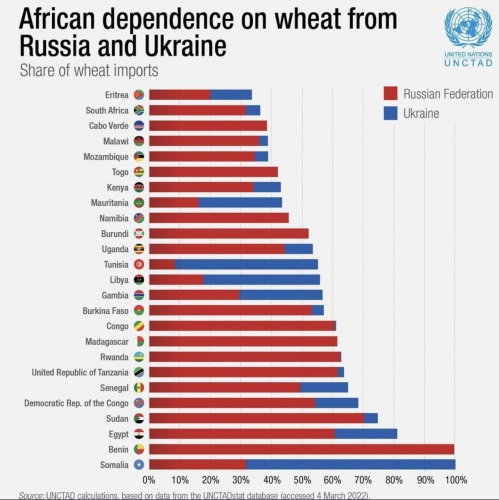
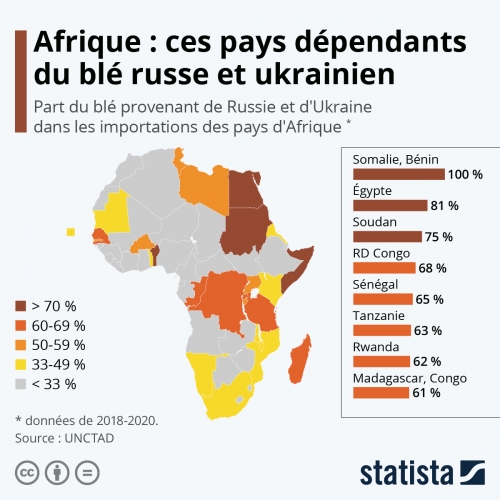
Outre les retombées mondiales, les pays présentant des risques commerciaux, touristiques et financiers directs subiront une pression supplémentaire. Les économies qui dépendent des importations de pétrole seront confrontées à des déficits budgétaires et commerciaux plus importants et à des pressions inflationnistes accrues, même si certains exportateurs, comme ceux du Moyen-Orient et d'Afrique, pourraient bénéficier de la hausse des prix.
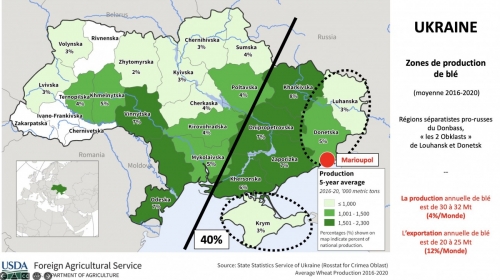
Des augmentations plus marquées des prix des denrées alimentaires et des carburants pourraient accroître le risque de troubles dans certaines régions, de l'Afrique subsaharienne et de l'Amérique latine au Caucase et à l'Asie centrale, tandis que l'insécurité alimentaire devrait encore augmenter dans certaines parties de l'Afrique et du Moyen-Orient.
À plus long terme, les conflits peuvent remodeler fondamentalement l'ordre économique et géopolitique mondial si le commerce de l'énergie est modifié, si les chaînes d'approvisionnement changent, si les réseaux de paiement s'effondrent et si les pays repensent leurs réserves de devises. Les tensions géopolitiques croissantes augmentent encore les risques de fragmentation économique, notamment dans les domaines du commerce et de la technologie.
Une autre source a déclaré que les prix des denrées alimentaires avaient déjà augmenté de 23,1 % l'année dernière, le rythme le plus rapide depuis plus d'une décennie, selon les données ajustées de l'inflation des Nations Unies. Le chiffre de février était le plus élevé depuis 1961 pour un indicateur qui suit les prix de la viande, des produits laitiers, des céréales, des huiles et du sucre.
Aujourd'hui, le conflit en Ukraine et les sanctions contre la Russie sapent les approvisionnements et peut-être la production des deux plus grands producteurs agricoles du monde. Les deux pays représentent près de 30 % des exportations mondiales de blé et 18 % de celles de maïs, dont la majeure partie est expédiée par les ports de la mer Noire, qui sont désormais fermés [ii].
Les principaux acheteurs de céréales ukrainiennes en 2021 étaient l'Indonésie, l'Égypte, la Turquie, le Pakistan, l'Arabie Saoudite et le Bangladesh. Il est probable qu'ils devront chercher d'urgence une autre source d'approvisionnement, car la saison des semailles en Ukraine risque d'être perturbée ce printemps.
Au cours des trois dernières semaines, des nouvelles concernant divers secteurs liés à la production en Ukraine ont été publiées.
Un certain nombre de groupes automobiles (et pas seulement) en Europe ont acheté des câbles électriques à des entreprises ukrainiennes. Maintenant, les approvisionnements ont cessé, ce qui menace de perturber l'ensemble du processus de production. Les câbles électriques sont technologiquement les plus difficiles à exporter. Leur production future dépendra donc à la fois de la disponibilité des composants nécessaires et du maintien d'entreprises capables de fournir l'ensemble du cycle technologique.
La production mondiale de semi-conducteurs est également affectée, car les principaux fournisseurs de gaz néon, qui est utilisé dans cette production de haute technologie, sont la Russie et l'Ukraine.
L'usine de Krioin est située près d'Odessa et s'occupe de la production et de la fourniture de gaz rares tels que le néon, les isotopes 20Ne, 21Ne et 22Ne, l'hélium, le xénon et le krypton [iv].
Une autre entreprise spécialisée dans ce type de production, Ingaz, est basée à Marioupol [v]. Le processus de production de ces deux entreprises est désormais complètement arrêté.
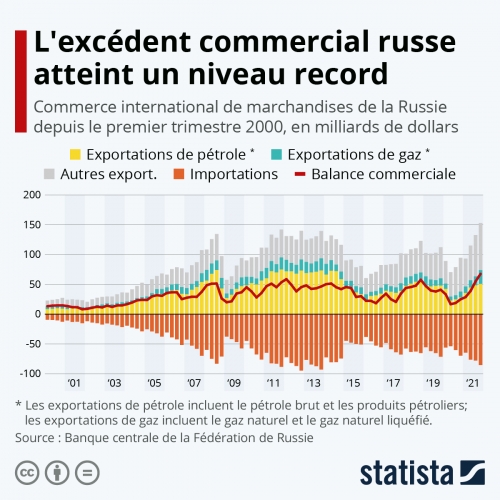
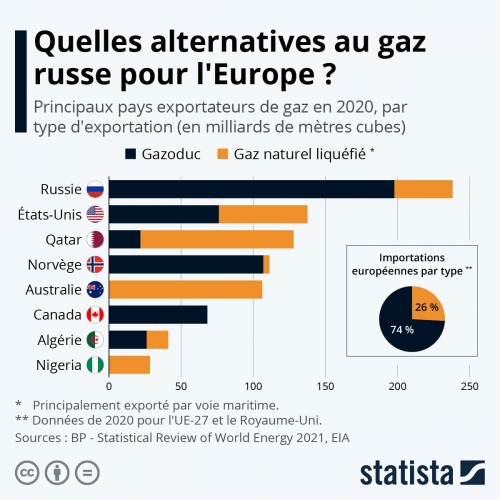
Marioupol possède également une industrie sidérurgique concentrée dont les produits étaient autrefois fournis à de nombreux pays - les tuyaux, les tôles laminées, les raccords, la fonte, etc. ne sont plus expédiés en Europe ou dans d'autres parties du monde où se trouvaient les clients. Pour cette raison, un certain nombre de projets d'infrastructure et de construction sont sur le point d'être perturbés ou gelés.
Le fer et les autres minerais étaient à égalité avec le maïs et le blé en termes de ventes à l'étranger. Leur extraction et leur transport sont désormais interrompus.
L'huile de tournesol figure également sur la liste des produits de base qui créent un effet domino. Les années précédentes, l'Ukraine a réalisé des exportations record de cette denrée. Les cinq premiers acheteurs étaient l'Inde, la Chine, les Pays-Bas, l'Irak et l'Espagne. Et la Russie prévoit d'imposer un droit d'exportation sur l'huile de tournesol, ce qui affectera également les prix mondiaux.
Le tourteau de céréales, c'est-à-dire les résidus de céréales après l'extraction de l'huile de celles-ci, a également fourni au pays environ 1 milliard de dollars par an pour son budget. L'Ukraine a gagné environ la même somme d'argent en vendant des graines de colza.
Le bois de chauffage est également l'un des principaux produits d'exportation de l'Ukraine. Ces dernières années, elle a représenté plus de 10 % du marché mondial dans cette catégorie particulière. Les expéditions en provenance des régions occidentales se poursuivent probablement encore, mais elles seront bientôt supprimées elles aussi.
Les champignons ont également connu un petit segment d'exportation, principalement vers la Roumanie, la Moldavie et la Biélorussie, mais aussi vers d'autres pays.
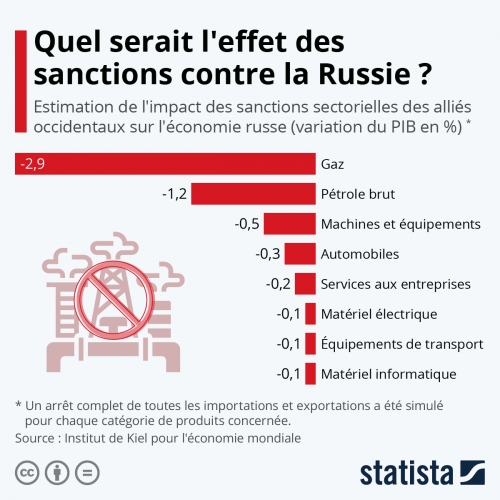
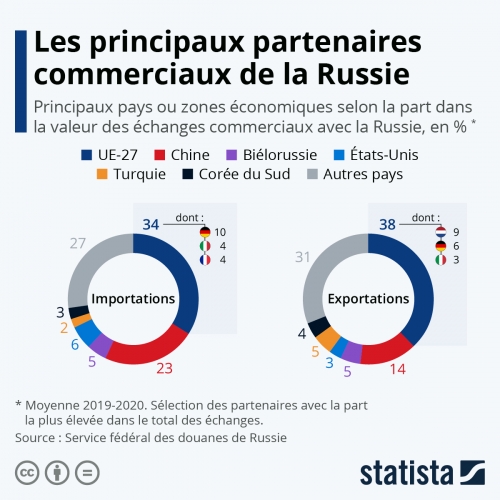
Depuis de nombreuses années, les travailleurs de la gastronomie, appelés dans le pays voisin "zarobytchany", sont également un moteur important de l'économie ukrainienne. Par exemple, en 2019, selon la Banque nationale d'Ukraine, les Zarobytchans y ont transféré 12 milliards de dollars, alors que dans le même temps les entrées d'investissements directs étrangers s'élevaient à 2,5 milliards de dollars [vi].
Le système bancaire ukrainien étant désormais dysfonctionnel, ce segment de l'économie a tout simplement disparu. Et à qui va l'argent alors que des millions de citoyens ont déjà quitté le pays ?
Le fardeau de l'afflux de réfugiés pèse désormais sur les pays de l'Union européenne. Ajoutez à cela l'effondrement du système d'application de la loi en Ukraine, qui a rendu actifs des éléments criminels, y compris des représentants de groupes internationaux. Cela vaut également pour l'UE, où dans un certain nombre de villes, la population autochtone se sent déjà mal à l'aise et subit toutes sortes de désagréments, allant du vol et des dommages matériels à l'agression ouverte.
Il est également tout à fait naturel de parler du marché boursier ukrainien, où les cours des actions de presque toutes les entreprises nationales ont chuté dès le 22 février suite à la reconnaissance par la Russie de la DNR et de la LNR. Par exemple, les actions d'Ukrnafta ont chuté de 9% et celles d'Ukrtelecom de 12%. Mais aujourd'hui, le marché boursier ukrainien est pratiquement mort.
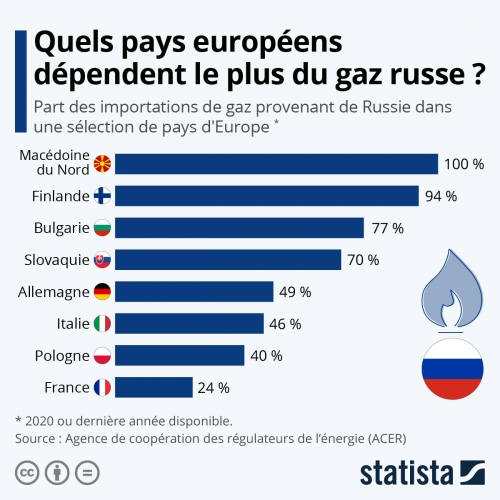
Quant à la Russie, les sanctions imposées et les contre-mesures prises par le gouvernement russe reformatent également l'économie mondiale. Mais si les Américains et les Européens ont déjà entendu le cri du peuple à propos des prix déraisonnablement élevés du carburant et de l'électricité, la Russie n'est pas menacée par cela. La Russie n'est pas non plus menacée par une crise alimentaire ou un quelconque coût sérieux. Mais Moscou peut serrer encore plus fort la vis à l'Occident et à ceux qui soutiennent les sanctions anti-russes.
Une discussion récente au Council on Foreign Relations (US) est illustrative [vii]. Par exemple, Karen Cariol-Tambur de Bridgewater Associates a noté que "la Russie est bien consciente de sa puissance. Elle sait parfaitement quels produits sont insignifiants pour sa balance des revenus, elle ne gagne pas beaucoup d'argent avec eux, mais ils sont importants pour le monde parce qu'elle est un fournisseur majeur d'un petit groupe de produits".
"Ils peuvent alors fermer l'ensemble de la chaîne d'approvisionnement de cette manière. Et puis nous passons aux marchés pétroliers, qui sont tout simplement très sensibles politiquement dans des pays comme le nôtre, parce que la simple hausse des prix du pétrole est extrêmement régressive. Nous vivons donc déjà avec la plus forte inflation que nous ayons connue depuis une quarantaine d'années".
Isabel Mateos y Lago de BlackRock, qui a également pris part à la discussion, a noté certaines des nuances qui affectent le système financier et économique mondial, en déclarant que "nous sommes dans un nouvel environnement où nous savons que des choses peuvent se produire qui étaient considérées comme impensables. Et il n'est pas tout à fait clair pour moi qu'il existe de bien meilleures alternatives à l'ensemble des monnaies de réserve actuelles".
"Et d'ailleurs, pour le plus grand détenteur de réserves au monde, qui est la Chine, le yuan n'est certainement pas une option car ce n'est pas une monnaie de réserve. Et donc cette banque centrale a un problème encore plus grand que tous les autres en termes de financement de nouveaux actifs de réserve".
"Mais je dirais que la grande majorité des réactions que j'entends de la part des observateurs de la monnaie de réserve maintenant est, vous savez, le vieux mantra de la sécurité. La liquidité, la rentabilité, c'est ce qu'ils recherchent dans les monnaies de réserve".
"On s'est un peu plus concentré sur les rendements ces derniers temps, car les rendements obligataires sont bas partout. Et je pense que tout à coup, les gens ont réalisé que la sécurité et la liquidité comptent vraiment, et vont examiner de beaucoup plus près ce qu'ils détiennent dans leurs bilans".
Si Lago se trompe manifestement sur le yuan, puisqu'il est dans le panier du FMI depuis 2016, ses propos sur l'impensable sont révélateurs de l'effondrement de l'hégémonie unipolaire américaine. Ainsi, toute mesure prise par la Russie, allant jusqu'à la coupure temporaire de l'approvisionnement en gaz et en pétrole, si elle aide la domination du dollar et à "guérir" les politiciens européens, serait utile.
Notes:
[i] https://blogs.imf.org/2022/03/15/how-war-in-ukraine-is-reverberating-across-worlds-regions/
[ii] https://blogs.imf.org/2022/03/16/war-fueled-surge-in-food-prices-to-hit-poorer-nations-hardest/
[iii] https://www.cnews.ru/news/top/2022-03-11_rossiya_obrushila_mirovoe
[iv] https://krioin-inzhiniring.prom.ua/
[v] https://ingas.ua/ru/
[vi] https://ukraina.ru/exclusive/20200630/1028130398.html
[vii] https://www.cfr.org/event/world-economic-update-inflation-sanctions-and-russia-ukraine-war
13:54 Publié dans Actualité, Affaires européennes, Economie | Lien permanent | Commentaires (0) | Tags : ukraine, actualité, politique internationale, blé, europe, affaires européennes |  |
|  del.icio.us |
del.icio.us |  |
|  Digg |
Digg | ![]() Facebook
Facebook
jeudi, 24 mars 2022
L'Ukraine, le Donbass et l'importance de respecter l'histoire
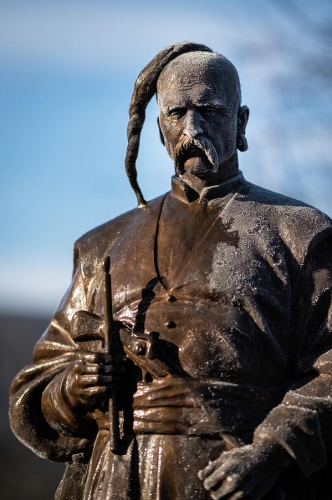
L'Ukraine, le Donbass et l'importance de respecter l'histoire
par Lorenzo Nicola Roselli
Source: https://www.ideeazione.com/ucraina-donbass-e-limportanza-di-rispettare-la-storia/
De nos jours, tout le monde est un peu ukrainien (mais comme notre programmation nationale me fait penser à Troy Mcclure, je dirais plutôt "ukrainologues"), mais à y regarder de plus près, tout contexte historique sur les événements de cette importante partie de l'Europe dans le discours actuel est réduit à l'orthographe bégayante de "Kievan Rus'" (la Rus' de Kiev) et à de vagues anecdotes d'antan replacées uniquement dans l'histoire du vingtième siècle.
Par exemple, peu de gens semblent savoir que les couleurs du drapeau ukrainien, au-delà de l'image poétique du champ de blé doré sous un ciel bleu clair, ont une référence héraldique précise : les armoiries du Hetmanat cosaque.
L'hetman (отаман) était le titre donné au commandant en chef de la communauté cosaque dont la société, fidèle aux plus anciennes traditions guerrières nordiques et slaves, plaçait à sa tête une aristocratie strictement combattante.
Lorsqu'en 1648, l'hetman Bohdan Chmel'nyc'kyj (que nous connaissons sous le nom de Bogdan "le Noir") décide de se révolter avec sa communauté contre la Confédération polono-lituanienne afin d'établir en 1649 un nouvel État chrétien-orthodoxe entre la Galicie, la Bessarabie et la Biélorussie, orienté vers un pacte de loyauté envers la Principauté de Moscou, il décide de l'appeler l'"Hetmanat des Cosaques".
L'Ukraine a ainsi été créée en tant qu'entité étatique séparée et distincte à la fois de la Pologne et de la Russie (dont elle était néanmoins un État vassal par la volonté même des Cosaques).
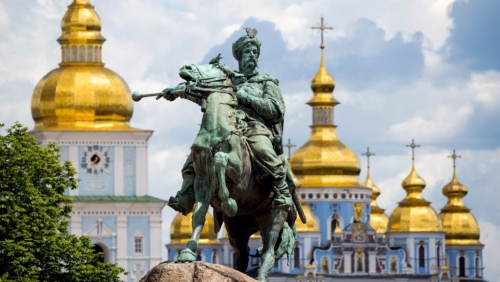
L'insigne jaune et bleu de l'Hetmanat a été choisi en 1917 comme symbole de l'éphémère État ukrainien ainsi que de la République populaire d'Ukraine et de la République d'Ukraine occidentale dans les années qui ont immédiatement suivi la fin de la Grande Guerre avant d'être démantelé par l'expansion de la Pologne nouvellement formée et les répercussions de la guerre civile russe.
Le guerrier cosaque (armoiries historiques de l'Hetmanat) a disparu de la symbolique de l'Ukraine actuelle au profit du Trident de St Vladimir (en continuité avec la République d'Ukraine occidentale).
Cependant, l'insigne officiel de la "Novorossiya", le projet de confédération lancé en 2015 par la République populaire de Donetsk pour toute la région du Don, le replace à son épicentre en le soulignant de l'aigle bicéphale de la Rus'.
Un symbole éminemment ukrainien qui rappelle l'identité nationale inassouvie de nombreux habitants de Donetsk et de Lougansk (et qui émerge dans ce documentaire de Vice réalisé en 2014 à Donetsk, où un citoyen de la république naissante crie à un jeune partisan de l'Euromaïdan qui l'invitait de manière provocante à partir en Russie : "Je veux vivre en Ukraine ! En Ukraine, où je suis né ! Votre "Ukraine" devient peut-être occidentale, mais la mienne reste ici" https://www.youtube.com/watch?v=woD44CsR4jg&t=462s minute 6:44).
Tout cela pour dire que vous pouvez bien écrire #IStandWithUkrain, mais ce à quoi nous assistons, dans son immense tragédie, reste aussi un conflit civil.
Et ceux qui accompagnent l'Ukraine (la plus pauvre, la plus dévastée par la haine interne et les bombardements) depuis sept ans et demi, n'ont certainement pas besoin de leçons de solidarité humaine de la part de ceux qui font bouger leur conscience en fonction des tendances observables sur Twitter.
18:12 Publié dans Actualité, Affaires européennes | Lien permanent | Commentaires (0) | Tags : ukraine, donbass, europe, affaires européennes, politique internationale |  |
|  del.icio.us |
del.icio.us |  |
|  Digg |
Digg | ![]() Facebook
Facebook
L'Ukraine et la "troisième guerre mondiale par morceaux"
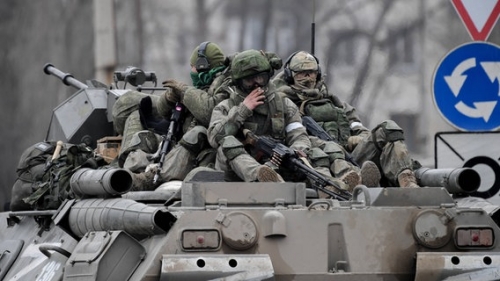
L'Ukraine et la "troisième guerre mondiale par morceaux"
Par Emanuel Pietrobon
Source: https://osservatorioglobalizzazione.it/osservatorio/ucraina-terza-guerra-mondiale-a-pezzi/
L'Ukraine est le doigt, la transition multipolaire est la lune. Qu'est-ce que cela signifie ? Que cette guerre restera dans les mémoires comme le tournant du 21e siècle, dépassant le 11 septembre en importance, et qu'elle changera le monde. Il y aura un avant et un après en Ukraine : pour chacun d'entre nous et pour chaque puissance de la planète.
L'avenir de la "Rus' de Kiev" ne se joue pas seulement en Ukraine, c'est-à-dire dans sa position géopolitique et identitaire, dans un bloc plutôt qu'un autre, car c'est là que s'écrit l'avenir du monde. L'Ukraine est un champ de bataille et une table de négociation. Il s'agit d'une terre contestée et de la tranchée d'un "choc des civilisations" prédit par Samuel Huntington dans un avenir proche mais encore lointain, en 1996.
C'est en Ukraine que tout commence et finit. C'est là que se termine l'eurasisme, le rêve d'une Europe de Lisbonne à Vladivostok, et que commence le nouveau chapitre du perpetuum bellum entre les deux parties antagonistes de l'Occident - l'Amérique et l'Europe. L'Ukraine, c'est le rêve caché de la Pologne, qui se voit comme le Christ de l'Europe ressuscité. C'est la pomme d'or de la Turquie d'Erdogan, l'héritier agité qui revendique l'héritage de la Sublime Porte. C'est le pivot géostratégique qui peut aider les États-Unis à "expulser" la Russie en Asie. Et c'est surtout une étape clé dans la "troisième guerre mondiale en morceaux".
Des milliers de combattants volontaires, venus du monde entier, se sont rendus en Ukraine pour tenir une arme : certains pour appuyer sur la gâchette devant l'armée russe et d'autres pour appuyer Moscou devant l'armée ukrainienne. Des milliers. Des dizaines de milliers. De toutes les parties du globe - d'Europe occidentale, d'ex-Yougoslavie, de Syrie, du Moyen-Orient, de la République centrafricaine. Et de toutes les croyances - communistes, islamistes, néo-nazis, pan-slaves orthodoxes.
À mi-chemin entre la Yougoslavie des années 1990 et l'Espagne des années 1930, l'Ukraine est un aimant pour les fous, les idéalistes et les nouveaux lansquenets. C'est là que se joue un nouveau chapitre de ce que le pape François a appelé en 2014 la troisième guerre mondiale par morceaux.
Pontifes, bâtisseurs de ponts aux yeux aquilins, leur don est la précognition. L'histoire a rapidement donné raison à l'héritier de Pierre: ces conflits qui explosaient comme une traînée de poudre sur la planète faisaient partie d'une confrontation hégémonique plus large entre blocs. Des blocs qui, en 2022, après huit années de germination alternant avec des phases épisodiques de dormance, ont commencé leur anthèse, leur floraison.
La guerre en Ukraine a sanctionné le début de la récolte. Et si la récolte de la Fédération de Russie est particulièrement riche, au point d'attirer des combattants prêts à mourir pour la Troisième Rome depuis la Syrie et la République centrafricaine, c'est parce que les semailles ont duré des années, ont été vastes et ont été sagement expérimentées sur des théâtres longtemps asséchés par les politiques impérialistes des puissances occidentales. Des théâtres qui, aujourd'hui, sont prêts à se sacrifier pour le Kremlin, dont ils se souviennent de l'engagement en faveur de la décolonisation pendant la guerre froide.
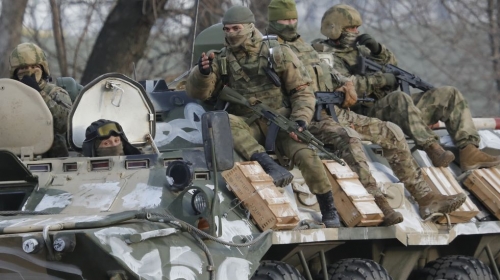
Les analystes craignent l'"internationalisation du conflit", mais la vérité est qu'il est déjà international. Dans un sens, il l'a toujours été. Mais il l'est devenu, aujourd'hui, à partir du moment où l'Ukraine a créé une Légion étrangère, en commençant à recevoir des armements de l'Alliance atlantique, et à partir du moment où la Russie a convoqué des pelotons de loyalistes de ces lieux du monde qui avaient une dette à payer. Et nombreux sont les débiteurs qui ont un compte à régler avec le Kremlin, aujourd'hui et demain : du "Triangle de la résistance" latino-américain (que l'on appelle aux États-Unis la "Troïka de la tyrannie") à l'Afrique lusophone et francophone.
Les périphéries au centre
La troisième guerre mondiale en "morceaux", ou "compétition entre grandes puissances" pour les palais les plus raffinés, entre dans une nouvelle phase au début des années 2020 avec les "périphéries ramenées au centre". Les périphéries, c'est-à-dire les parias de la mondialisation, les satellites, les bandes de terre contestées, les États dortoirs en marge des grands empires, les vestiges de l'ère coloniale et les foyers de conflits gelés et de rivalités inassouvies, au centre de la confrontation. Comme dans les années de la première guerre froide, où l'éloignement était synonyme d'importance.
Ce sont les États périphériques qui ont été submergés par des changements de régime, des guerres civiles, des complots de coup d'État et des opérations hybrides au cours de la période d'avant-guerre, comme le Kazakhstan récemment, et ce sont les États périphériques qui connaîtront un crescendo d'instabilité au cours de la période d'après-guerre. Ce sont les États périphériques qui envoient des combattants en Ukraine. Et ce sont les États périphériques qui seront écrasés comme des fourmis par les éléphants de combat dans la période d'après-guerre.
C'est dans l'Atlantique, plein de périphéries à enflammer, que l'axe Moscou-Beijing va tenter de déplacer le viseur du fusil. Une réaction inattendue mais prévisible à l'avancée occidentale dans les arrière-cours de la Russie et de la Chine, au sang qui coule depuis longtemps le long de la Nouvelle route de la soie. Si les deux "puissances révisionnistes" n'ont pas le droit d'avoir des sphères d'influence, alors les États-Unis non plus : la "doctrine Monroe" est désormais à l'épreuve du XXIe siècle.
L'Atlantique, en un mot, pourrait devenir aussi géo-pertinent que l'Indo-Pacifique. C'est ce que suggèrent un certain nombre d'événements survenus en 2021 : le regain de dynamisme russe dans le Triangle de la Résistance, le "retour" chinois au Nicaragua, le vent d'instabilité qui a enveloppé les dominions français en Amérique latine, les ambitions chinoises en Guinée équatoriale et, enfin et surtout, le curieux murmure de Xi Jinping, le diable tentateur, aux oreilles des nationalistes argentins qui continuent de rêver de récupérer les Malvinas/Falklands.
Anciens et nouveaux spectres de l'Europe
L'Atlantique sera (pré)pris en charge par les États-Unis, mais le Vieux Continent devra être pris en charge par l'Europe. L'Europe, qui a été absente en Ukraine, se limitant à armer et à sanctionner alors qu'elle aurait dû au contraire occuper le devant de la scène aux tables de négociations. Une scène poliment laissée à la Chine, à Israël et à la Turquie.
L'Europe sera un théâtre clé de la troisième guerre mondiale en morceaux et il ne pouvait en être autrement : c'est le continent spécial par excellence. C'est le terminus de la nouvelle route de la soie. C'est l'appendice occidental de l'Eurasie. C'est la prairie fertile que se disputent les États-Unis et la Russie. Elle abrite un tas de banlieues prêtes à devenir des centres, comme les entités serbes de Bosnie, du Kosovo, de Macédoine du Nord et de Transnistrie. Et son balcon donne sur des veines non couvertes qui battent et peuvent saigner facilement, comme l'Abkhazie, le Karabakh et l'Ossétie du Sud.
L'Europe, géographiquement vulnérable et identifiable comme faible, peut être mise à mal de diverses manières : du terrorisme à la polarisation sociale. La frontière liquide qu'est la Méditerranée l'expose aux "armes de migration massive" - "ceux qui contrôlent le Sahel ont le pouvoir d'ouvrir ou de fermer à volonté les robinets des flux migratoires vers l'Europe", de sorte que les grands rivaux de l'Europe avancent dans cette ancienne province de la France. Et les États-nations aux traditions unitaires moins solides peuvent être déstabilisés en soufflant sur le désir toujours vivace de séparatisme présent dans certains segments de la société. Diviser pour mieux régner.
Il incombe aux États-Unis de surveiller Taïwan, et à l'Europe d'empêcher que le Kosovo de la maison et du voisinage n'explose entre ses mains. Le devoir de prévoir la résurgence du régionalisme - de la Catalogne à la Corse -, de servir de médiateur entre les belligérants potentiels et de préparer des plans d'urgence pour la protection des frontières fluides, sinon liquides, du continent : de la Méditerranée à la zone polono-balte.
Un monde différent
La postérité se souviendra de la guerre en Ukraine comme du point tournant de la deuxième partie du 21e siècle, comme d'un tournant d'une importance égale ou même supérieure à celle du 11 septembre 2001. Et la troisième guerre mondiale en morceaux n'est qu'une des raisons.
La "guerre économique totale" contre la Russie est symbolique de la nouvelle mondialisation qui se dessine : des compartiments à plusieurs voies, à plusieurs vitesses, micro- et macro-régionaux. Un processus dont les bases ont été posées par Donald Trump et la pandémie et que la guerre en Ukraine n'a fait qu'accélérer.
Dans le nouveau modèle de mondialisation qui est en train de naître, articulé autour de réalités intégratives telles que l'UE et l'EEE et destiné à une dédollarisation progressive, l'Europe et l'Asie sont deux choses distinctes. La Russie, pendant des années, voire des décennies, fera partie du compartiment asiatique. Et l'eurasisme, c'est-à-dire le rêve d'une Europe étendue de Lisbonne à Vladivostok, qui est mort le 24.2.22, restera mort pour au moins une génération ou deux.
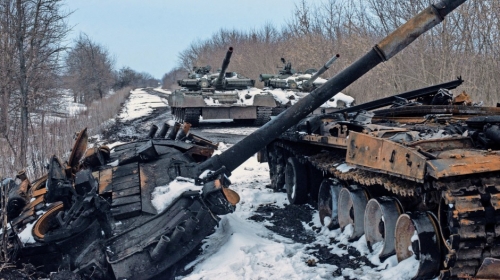
Pas seulement la mondialisation : des blocs, des pôles et des alliances se forment enfin. Le temps de la procrastination, de l'attentisme et de la neutralité passive est révolu. Même la Suisse, absente depuis les deux guerres mondiales, a rompu avec une tradition séculaire sur laquelle elle a bâti sa fortune. Voilà qui est très éloquent.
C'est le moment de prendre parti, de choisir son camp, les grands acteurs demandant aux petits de prouver leur loyauté. Certains répondront par l'affirmative, tandis que d'autres changeront de camp à leur grande surprise. Aujourd'hui, c'est Poutine qui tente de maximiser la loyauté retrouvée d'Aleksandr Lukashenko et Joe Biden qui essaie d'"acheter" Nicolas Maduro. Demain, tout peut arriver : les centres sont peu nombreux, les périphéries nombreuses.
Une chose est sûre : la guerre en Ukraine a tout changé, elle a brassé les cartes sur la table. Poutine aurait gagné en n'envahissant pas. Au contraire, en portant le conflit en Europe, il a franchi le Rubicon et entraîné le monde, consciemment ou non, vers des scénarios inexplorés dont il ne comprendra la menace qu'avec le temps.
17:06 Publié dans Actualité | Lien permanent | Commentaires (0) | Tags : actualité, politique internationale, europe, affaires européennes, troisième guerre mondiale, ukraine |  |
|  del.icio.us |
del.icio.us |  |
|  Digg |
Digg | ![]() Facebook
Facebook
mardi, 22 mars 2022
Xi Jinping et la Chine donnent une leçon de diplomatie aux États-Unis

Xi Jinping et la Chine donnent une leçon de diplomatie aux États-Unis
par Giulio Chinappi
Source: http://www.cese-m.eu/cesem/2022/03/xi-jinping-e-la-cina-danno-una-lezione-di-diplomazia-agli-stati-uniti/
Le 18 mars, les chefs d'État des deux principales puissances économiques mondiales ont tenu une vidéoconférence dont le sujet principal était le conflit en Ukraine.
Le sommet virtuel qui s'est tenu le 18 mars entre le président de la République populaire de Chine, Xi Jinping, et le président des États-Unis d'Amérique, Joe Biden, a mis en évidence la stature politique et diplomatique du premier, face à un Biden qui, ces derniers jours, n'a pas su faire grand-chose, sinon lancer des insultes personnelles au président russe Vladimir Poutine.
Alors que les États-Unis continuent à envoyer des armes en Ukraine, faisant du peuple ukrainien de la chair à canon pour leur propre projet hégémonique mondial, la Chine s'efforce de trouver une solution diplomatique au conflit dans l'ancienne république soviétique. Xi Jinping a encouragé les États-Unis et l'OTAN à entamer un dialogue avec la Russie pour résoudre les problèmes sous-jacents de la crise ukrainienne et a exprimé son opposition aux sanctions aveugles imposées à la Russie, tout en exhortant les puissances occidentales à mettre un terme au flux d'armes vers l'Ukraine.
"La crise ukrainienne n'est pas quelque chose que nous voulons voir se perpétuer, et les événements montrent une fois de plus que les pays ne devraient pas en arriver au point de se rencontrer sur le champ de bataille. Le conflit et la confrontation ne sont dans l'intérêt de personne, et la paix et la sécurité sont ce que la communauté internationale devrait chérir le plus", a déclaré Xi Jinping lors de la vidéoconférence.
"Les remarques du président Xi sur la crise ukrainienne ont exposé de manière exhaustive la position de la Chine et, se situant à un niveau supérieur, ont encouragé les pourparlers de paix entre l'Ukraine et la Russie et les pourparlers entre les États-Unis, l'OTAN et la Russie", a déclaré Lü Xiang, chercheur à l'Académie chinoise des sciences sociales, au Global Times. "Je pense que l'entretien de vendredi n'était pas seulement significatif pour les relations sino-américaines, mais aussi pour la situation géopolitique mondiale. Les remarques du dirigeant chinois ont montré aux pays qui suivent de près les États-Unis dans la fomentation de la crise ce qu'une grande puissance responsable devrait faire face aux problèmes", a ajouté l'universitaire.
La situation actuelle ne fait que démontrer que les politiques coercitives menées par les États-Unis et d'autres puissances occidentales contre les pays qu'ils considèrent comme "hostiles" ne peuvent mener à autre chose qu'à l'exacerbation du conflit. Les sanctions imposées à la Russie depuis des années, et en particulier celles qui ont été renforcées ces dernières semaines, se sont avérées totalement inefficaces pour atteindre leur objectif.
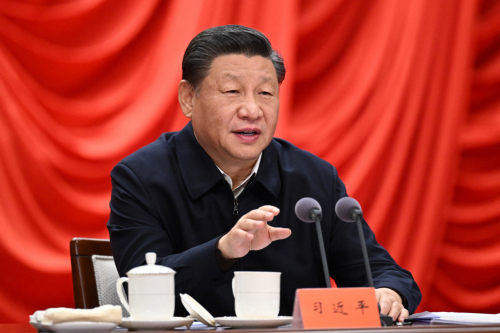
"La question de l'Ukraine est la conséquence des problèmes accumulés entre les États-Unis et la Russie ou de la pression et des défis continus à la sécurité de la Russie par l'OTAN dirigée par les États-Unis. Ainsi, les États-Unis, au fond, ne s'attendent pas à ce que la Chine résolve le problème, mais ils veulent quand même attirer la Chine dans leur pétrin ou lui demander de les aider, car la situation actuelle a dépassé leurs attentes et il deviendra plus difficile pour les États-Unis d'éviter d'y être directement impliqués", a encore dit Lü.
La position de la Chine sur la crise ukrainienne a été longuement réitérée par le porte-parole du ministère des Affaires étrangères de Pékin, Zhao Lijian, lors d'une conférence de presse avec des représentants des médias étrangers : "En tant qu'initiateurs de la crise ukrainienne, pourquoi les États-Unis ne réfléchissent-ils pas à leur propre responsabilité et à celle de l'OTAN dans la cause de la crise sécuritaire actuelle en Europe ? Pourquoi ne repensent-ils pas à leur hypocrisie en attisant les flammes de la crise ukrainienne ?" a demandé Zhao de manière provocante.
Zhao a déclaré que la Chine avait de la peine pour les victimes civiles, mais il a également rappelé les victimes des raids aériens des États-Unis et de l'OTAN dans les différents pays que les puissances occidentales ont bombardés depuis 1999 : "Nous nous souvenons tous qu'en mars 1999, sans l'autorisation du Conseil de sécurité de l'ONU, l'OTAN dirigée par les États-Unis a lancé de manière éhontée 78 jours d'attaques en Yougoslavie, tuant 2 500 civils et en blessant plus de 10.000. Au cours des 20 dernières années, les États-Unis ont effectué des milliers de raids aériens en Syrie, en Irak, en Afghanistan et en Somalie", a rappelé le porte-parole, qui s'est demandé si les États-Unis s'inquiéteraient également de la mort de ces civils à la suite de leurs actions militaires.
Alors que les États-Unis et l'Union européenne continuent d'envoyer des armes à l'Ukraine - mercredi dernier, les États-Unis ont annoncé une aide militaire de 800 millions de dollars à l'Ukraine - la Chine a offert une aide humanitaire aux réfugiés civils du conflit, envoyant de la nourriture, du lait en poudre, des sacs de couchage, des édredons et d'autres produits de première nécessité à l'ancienne république soviétique. "La dernière assistance armée américaine à l'Ukraine a-t-elle apporté la stabilité et la sécurité à l'Ukraine ? Ou bien cela entraînera-t-il davantage de victimes civiles ? Le peuple ukrainien a-t-il besoin de plus de nourriture et de sacs de couchage ou de fusils et de munitions ? Il n'est pas difficile pour les personnes dotées de rationalité et de bon sens de faire le bon jugement", a commenté Zhao.
Une fois de plus, la crise ukrainienne démontre l'hypocrisie de l'administration américaine, par opposition à la cohérence et à l'efficacité du gouvernement chinois dans la gestion des crises, comme ce fut le cas avec la pandémie de Covid-19, pour ne citer qu'un incident récent.
18:05 Publié dans Actualité, Affaires européennes, Géopolitique | Lien permanent | Commentaires (0) | Tags : chine, xi jinping, diplomatie, géopolitique, ukraine, politique internationale, joe biden, sanctions |  |
|  del.icio.us |
del.icio.us |  |
|  Digg |
Digg | ![]() Facebook
Facebook
Conflit ukrainien : les Hellènes oubliés - A propos d'un groupe ethnique pratiquement inconnu
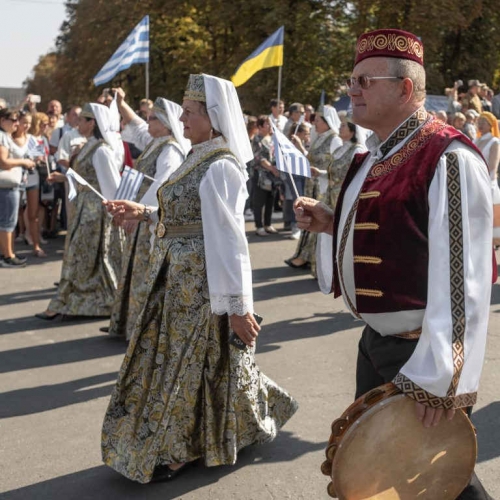
Conflit ukrainien : les Hellènes oubliés
A propos d'un groupe ethnique pratiquement inconnu
Erich Körner-Lakatos
Source: https://zurzeit.at/index.php/ukraine-konflikt-die-vergessenen-hellenen/
La minorité grecque du sud de l'Ukraine est pratiquement absente de la couverture médiatique, bien qu'elle soit également touchée par la guerre russo-ukrainienne. Il en va tout autrement en Grèce, où le Parlement s'est penché sur leur sort le 1er mars. Athènes a déjà protesté auprès de l'ambassadeur russe contre la mort de douze civils appartenant à cette ethnie - ils sont morts lors de bombardements russes sur le village de Sartana. Réponse des Russes : les soldats ukrainiens sont responsables de leur mort. Dès le 31 janvier 2022, le ministre des Affaires étrangères Nikos Dendias s'est rendu sur place et a assuré les Grecs de l'est de l'Ukraine que la Grèce entendait les protéger. Entre-temps, des plans d'évacuation sont mis en place à Athènes pour les Grecs d'Ukraine qui doivent quitter leur maison à cause des combats.
Odessa, Marioupol, Sébastopol : les noms de ces villes sonnent familiers, presque naturels, aux oreilles des Grecs. La région située sur la côte de la mer Noire joue déjà un rôle important dans la mythologie grecque.
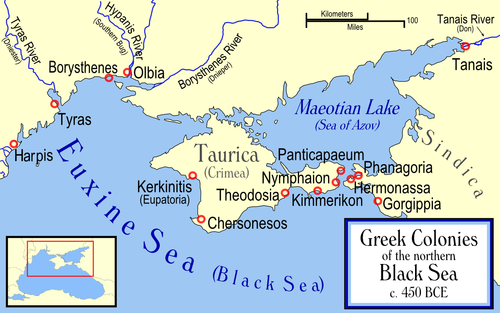
Les Grecs ont fondé des colonies sur ce qui est aujourd'hui la côte ukrainienne de la mer Noire dès le VIe siècle avant Jésus-Christ. La plupart des Grecs vivant aujourd'hui en Ukraine sont les descendants de Grecs pontiques de la région du Pont (montagne située sur la côte sud de la mer Noire) après la chute de l'empire chrétien de Trébizonde en 1461.
Aujourd'hui encore, la minorité hellénique d'Ukraine compte entre 100.000 et 150.000 personnes. Une petite partie d'entre eux est installée à Odessa, la plupart à Marioupol et dans 29 villages autour de cette ville portuaire de l'est de l'Ukraine. Marioupol, ville portuaire sur la mer d'Azov, avec ses 500.000 habitants, compte aujourd'hui 91.548 Grecs selon le dernier recensement.
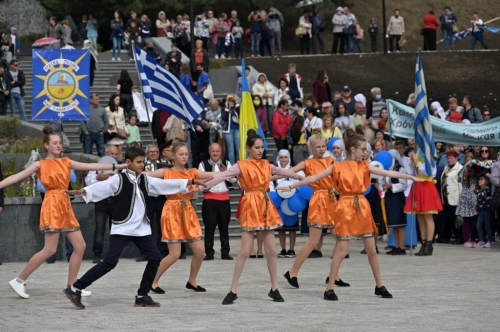
Cependant, le nombre de personnes d'origine grecque est probablement beaucoup plus élevé en raison des mariages mixtes entre Grecs ethniques et citoyens ukrainiens, qui sont très répandus, en particulier dans l'est de l'Ukraine. Outre l'ukrainien et le russe, ces "Grecs de Crimée" ou "Grecs du Pont", comme on les appelle également, parlent un dialecte grec qu'ils appellent la langue "roumaine". Le terme "roumain", ici, vient de l'auto-désignation des Grecs de l'Empire byzantin (romain d'Orient), qui s'appelaient Ῥωμαῖοι (Rhoméi), c'est-à-dire : Romains.
La ville de Marioupol a été fondée en 1778 suite à un décret de l'impératrice Catherine la Grande, à proximité d'une colonie cosaque. Elle devait servir de nouveau foyer aux Grecs lorsque ceux-ci durent fuir la Crimée pour éviter les Ottomans qui occupaient alors la péninsule.
Les combats actuels autour de Marioupol sont suivis de très près en Grèce. Depuis le début des combats, c'est-à-dire depuis le 22 février 2022, la ville - dont le nom signifie en grec la "ville de Marie" - est disputée, personne n'est en sécurité. Cela entraîne ces dernières semaines en Grèce un changement notable de l'opinion publique sur la Russie. Traditionnellement, une grande partie de la société grecque est plutôt favorable à la Russie, certains parlent même d'une amitié éternelle avec le grand frère du Nord-Est.
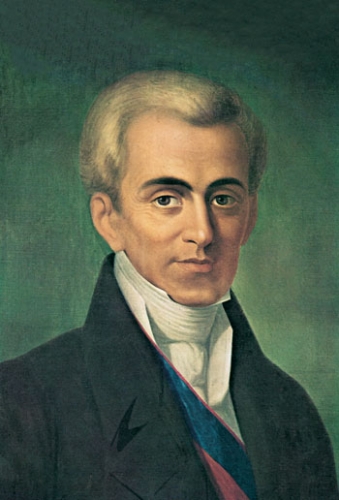
La majorité de la population des deux pays appartient à l'Église orthodoxe. Grecs et Russes ne se sont jamais affrontés. La révolution grecque de 1821 a été préparée par la "Filiki Eteria" (Société des amis), une organisation secrète fondée à Odessa. Ioannis Kapodistrias, qui devint en 1828 le premier gouverneur de l'État grec libre après l'indépendance de l'Empire ottoman, était auparavant ministre des Affaires étrangères de la Russie tsariste. Même récemment, la Grèce s'est plutôt efforcée de servir de pont entre l'Occident, auquel elle se sent appartenir, et la Russie. Athènes a toujours été très sensible aux préoccupations de Moscou.
C'est désormais terminé. Le 25 février, le cabinet d'Athènes a pris une décision concernant la fourniture d'équipements militaires à l'armée ukrainienne.
17:37 Publié dans Actualité, Affaires européennes, Terroirs et racines | Lien permanent | Commentaires (0) | Tags : grecs d'ukraine, grecs pontiques, ukraine, europe, racines, affaires européennes |  |
|  del.icio.us |
del.icio.us |  |
|  Digg |
Digg | ![]() Facebook
Facebook
lundi, 21 mars 2022
Ukraine : une guerre qui amorce la grande transition géopolitique et civilisationnelle
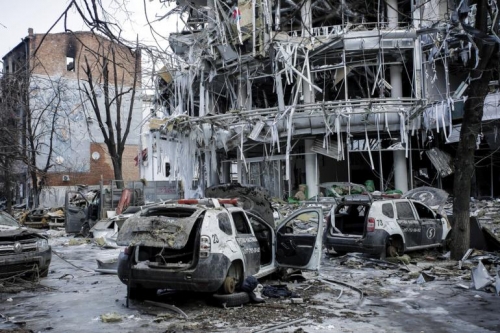
Ukraine : une guerre qui amorce la grande transition géopolitique et civilisationnelle
Manuel Monereo
Source: http://www.elespiadigital.com/index.php/noticias/geoestrategia/37126-2022-03-19-14-12-04
"De plus, tout indique que des puissances économiques comme la Russie et la Chine doivent être domptées ou écrasées pour que les grandes économies capitalistes puissent avoir un nouveau souffle. C'est une perspective effrayante".
Michael Roberts 14 mars 2022
La guerre en Ukraine continue. Ce n'est qu'un début. La ligne de front ? La dimension spatio-temporelle des intérêts stratégiques américains ; c'est-à-dire la planète. L'objectif est de conserver le pouvoir et de s'opposer farouchement à ceux qui contestent l'hégémonie euro-américaine, ce que Samir Amin a appelé l'impérialisme collectif de la triade.
Biden a organisé, j'insiste, organisé deux territoires géopolitiquement bien définis : l'un, le principal, se situe en Asie, dans la mer de Chine méridionale ; l'autre, le secondaire, a l'Ukraine comme ligne de front. Les deux sont interconnectés politiquement et militairement par les États-Unis. Les États-Unis imposent une stricte division du travail : l'OTAN est chargée de réduire la Russie ; le monde anglo-saxon est chargé de l'Asie. C'est la Doctrine Monroe complétée de celle d'Alfred T. Mahan : le Pacifique est l'affaire exclusive des Américains et de leurs alliés de confiance ; en dehors de l'Union européenne et, plus précisément, de la France. Un troisième scénario se profile à l'horizon, celui du Sahel, qui commence à dire adieu aux forces expéditionnaires françaises et, je crois, aux autres forces expéditionnaires européennes.
Lorsque le brouillard de la guerre se dissipera, il sera nécessaire de cartographier les dégâts. Les conséquences, le rôle des acteurs et les éléments déterminants d'un nouvel équilibre des pouvoirs devront être identifiés avec précision. Un fait avant tout : le marché économique-productif et financier mondial va-t-il s'effondrer ? C'est ce qu'il semble. La possibilité de construire un pôle de puissance autour de la Chine est motivée par la nécessité de répondre aux sanctions contre la Russie et, surtout, à leurs conséquences collatérales, qui obligent déjà à se définir. Biden joue dur, très dur. Les jours de la domination du dollar sont peut-être en train de prendre fin et la multipolarité est plus proche qu'il n'y paraît.
Une chose semble claire : aujourd'hui plus de gaz russe est vendu à l'Allemagne qu'avant le conflit. Ce couloir fonctionne malheureusement beaucoup mieux que le couloir humanitaire. Qu'est-ce que cela signifie ? Qu'il existe des contacts économiques, financiers et militaires. Il y a encore une chance de parvenir à des accords, d'arrêter la guerre et de mettre fin à la mort qui rode en Europe aujourd'hui. Nous en savons de plus en plus. Lors de la réunion des 27 à Versailles, toujours à la gloire électorale de Macron, il a été décidé que l'Ukraine ne rejoindrait pas l'Union européenne pour le moment ; ce "pour le moment" peut être très long et équivaut à (presque) jamais. Quelques jours plus tard, notre inoubliable Haut représentant de l'UE, Josep Borrell, a reconnu ses erreurs. La plus importante avait été d'ouvrir la possibilité d'une entrée de l'Ukraine dans l'OTAN. Il ne faut pas faire des promesses qui ne peuvent être tenues, a déclaré l'ancien grand espoir de la social-démocratie espagnole.
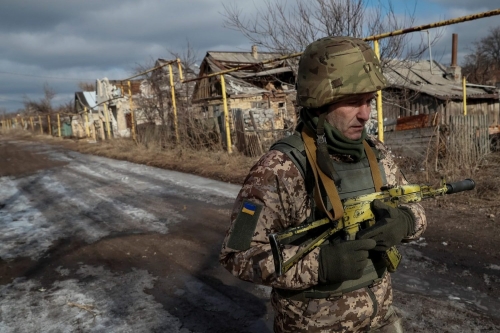
Comme Luciano Canfora a raison lorsqu'il dit qu'il ne faut pas parler de démocratie lorsqu'il s'agit du pouvoir mondial ; ne pas parler de paix lorsque la guerre se prépare. Il faudra le dire et le redire, avec force même au prix d'être minoritaire : face à un discours dominant unique - qui devient disciplinaire - il faut affirmer que cette guerre est une guerre entre l'OTAN et la Russie, et que l'Ukraine fournit le territoire, la population et la plupart des morts et des blessés. Zelenski doit maintenant se rendre compte de ce que signifie être un allié inconditionnel des États-Unis et un instrument actif d'une stratégie qui n'a rien à voir avec les intérêts de son peuple. Proposer, comme il le fait, une intervention directe ou indirecte de l'OTAN, c'est jouer avec le feu et nous faire tous brûler.
Il a été dit (Thomas Fazi, Olga Rodriguez) que la guerre en Ukraine a été la plus annoncée, analysée et anticipée de l'histoire européenne récente. Tous les grands spécialistes l'ont étudié et analysé pendant des années (Kennan, Kissinger, Mearsheimer, Jack F. Matlock) et leur conclusion a toujours été la même : essayer de faire entrer l'Ukraine dans l'OTAN signifierait une réponse politico-militaire russe et la guerre. Le 13 mars de cette année, Carlos Sánchez, dans El Confidencial, a interviewé un spécialiste de la stratégie - influent au sein du ministère de la Défense - qui n'a pas voulu donner son nom. Le plus surprenant dans ses déclarations est qu'elles coïncident avec celles d'autres géopoliticiens - militaires ou non - qui critiquent le conflit ukrainien et s'inquiètent particulièrement de l'avenir de l'Europe dans un monde en mutation rapide.
Tout le monde s'accorde à dire, premièrement, que nous sommes à un tournant d'une ère caractérisée par un déclin relatif de l'hégémonie américaine et l'émergence de nouvelles puissances qui remettent objectivement en question l'ordre organisé et défini par les États-Unis. Les dimensions et le rythme du processus ne sont pas pacifiques. Deuxièmement, on s'accorde à dire que nous sommes dans une transition vers un monde multipolaire qui implique une redistribution substantielle du pouvoir au niveau mondial. Troisièmement, on s'accorde également à dire que les États-Unis sont la première puissance économique mondiale et, surtout, qu'ils ont une nette domination politico-militaire au niveau planétaire. En d'autres termes, il existe une inégalité structurelle des forces (commerciales, financières, technologiques et militaires) entre le bloc de pouvoir dirigé par les États-Unis et les forces qui tendent à contester son hégémonie. La question clé est le timing. Biden (et le groupe oligarchique qu'il dirige) cherche à anticiper, à prendre l'avantage et à se positionner au moyen d'une stratégie préemptive selon le principe : faites-le maintenant, demain il sera peut-être trop tard. Ils ne font pas mystère de leurs objectifs, à savoir renverser le système de pouvoir dominant en Russie et en Chine au moyen d'instruments économiques, technologiques, hybrides ou de la zone grise.
Quatrièmement, il y a un consensus sur le fait que le grand perdant dans ce conflit est l'Europe. L'UE est incapable de représenter les intérêts stratégiques de ses États et de ses peuples et reste - comme la crise ukrainienne le montre clairement - un allié subordonné des États-Unis. La cinquième question concerne le rôle géopolitique de l'Espagne. Les préoccupations sont nombreuses. Le conflit entre le Maroc et l'Algérie s'aggrave ; au traditionnel problème migratoire s'ajoute celui du gaz dans un contexte propice à la prétention du Maroc de devenir une puissance régionale en relation étroite avec les Etats-Unis et la France. En arrière-plan, la question sahraouie est non résolue. En cas de conflit avec le Maroc, nous, les Espagnols, serons livrés à nous-mêmes ; ni l'OTAN ni l'UE ne nous seront d'aucune utilité.
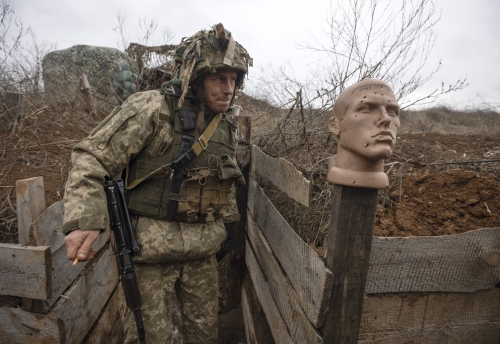
Une question plus complexe est la relation entre la Chine et la Russie, toujours médiatisée par la tension avec les États-Unis. Kissinger et Brzezinski ont mis en garde très fermement contre le danger d'une alliance entre l'Iran, la Russie et la Chine. Pourtant, toute la politique étrangère américaine - sauf sous Donald Trump - s'est consacrée à la favoriser. Aujourd'hui, avec la montée de la russophobie, il faut souligner que l'avenir des relations internationales sera déterminé par la direction dans laquelle penche la Russie. La Russie a clairement et sans ambiguïté opté pour un partenariat stratégique avec la Chine. Les deux économies se complètent et leurs capacités militaires se multiplient dans l'alliance. La Chine aidera la Russie à surmonter les sanctions, tout comme l'Inde, le Pakistan, l'Indonésie, une grande partie de l'Amérique latine, à commencer par le Brésil et l'Argentine, et la plupart de l'Afrique, Afrique du Sud en tête ; sans oublier l'Arabie saoudite qui décide actuellement de facturer le pétrole en monnaie chinoise. Peut-on imaginer la carte ? C'est le nouveau monde qui émerge contre l'ancien, celui des grandes puissances coloniales.
Pour l'Europe, c'est une tragédie. Ils sont fatigués de le dire ces jours-ci, il n'y a pas de sécurité en Europe sans la Russie. C'est vrai. La Russie revient à une alliance eurasienne explicite avec l'objectif clair de défier une Pax basée sur la puissance euro/américaine. Une fois encore, c'est l'ancien qui ne mourra pas et le nouveau qui ne naîtra pas. Entre les deux, le conflit pour le pouvoir mondial.
"Le réveil politique mondial est historiquement anti-impérial, politiquement anti-occidental et émotionnellement anti-américain à doses croissantes. Ce processus provoque un déplacement majeur du centre de gravité du monde, qui, à son tour, modifie la répartition mondiale du pouvoir, avec des implications majeures pour le rôle des États-Unis dans le monde", écrivait Zbigniew Brzezinski en 2007.
Le vieux faucon américano-polonais savait de quoi il parlait. Il n'y a pas de retour en arrière possible.
14:51 Publié dans Actualité, Affaires européennes, Géopolitique | Lien permanent | Commentaires (0) | Tags : europe, affaires européennes, ukraine, russie, géopolitique, politique internationale |  |
|  del.icio.us |
del.icio.us |  |
|  Digg |
Digg | ![]() Facebook
Facebook
dimanche, 20 mars 2022
Les penseurs stratégiques qui ont mis en garde contre l'expansion de l'OTAN

Les penseurs stratégiques qui ont mis en garde contre l'expansion de l'OTAN
Par Marc Vandepitte
Source: http://www.cese-m.eu/cesem/2022/03/pensatori-strategici-che-hanno-messo-in-guardia-per-lespansione-della-nato/
L'un des aspects les plus fascinants de la guerre en Ukraine est le grand nombre d'éminents penseurs stratégiques qui avertissent depuis des années que cette guerre serait imminente si nous continuions sur cette voie. Énumérons les plus importants de ces avertissements.
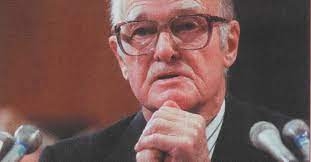
George Kennan, architecte de la guerre froide, en 1998 :
"Je pense que c'est le début d'une nouvelle guerre froide. Je pense que les Russes vont progressivement réagir de manière plutôt négative et que cela affectera leurs politiques. Je pense que c'est une erreur tragique. Il n'y avait aucune raison pour cela. Personne ne menaçait personne d'autre.
Il est évident qu'il y aura une mauvaise réaction de la part de la Russie, et ensuite ils [les "élargisseurs" de l'OTAN] diront que nous vous avons toujours dit que les Russes étaient comme ça, mais c'est tout simplement faux."
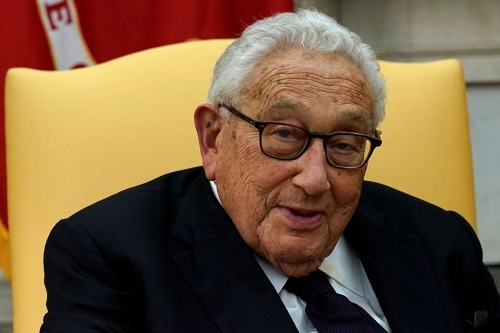
Henry Kissinger, ancien secrétaire d'État américain, en 2014 :
"Si l'Ukraine veut survivre et prospérer, elle ne doit pas être l'avant-poste d'un camp contre l'autre, elle doit servir de pont entre eux. L'Occident doit comprendre que, pour la Russie, l'Ukraine ne pourra jamais être un simple pays étranger.
Même des dissidents célèbres comme Alexandre Soljenitsyne et Joseph Brodsky ont insisté sur le fait que l'Ukraine faisait partie intégrante de l'histoire russe et, en fait, de la Russie.
L'Ukraine ne devrait pas rejoindre l'OTAN".
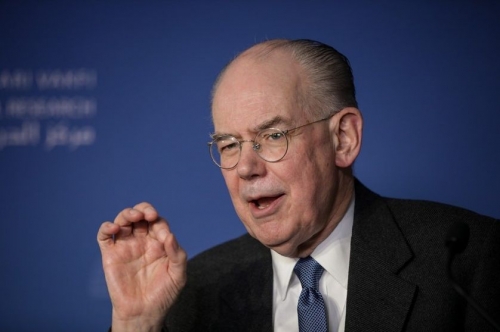
John Mearsheimer, l'un des meilleurs experts en géopolitique des États-Unis, en 2015 :
"La Russie est une grande puissance et n'a aucun intérêt à laisser les États-Unis et leurs alliés s'emparer d'une grande partie d'un bien immobilier d'importance stratégique sur la frontière occidentale et l'incorporer à l'Ouest.
Cela ne devrait pas être une surprise pour les États-Unis d'Amérique, car vous savez tous que nous avons une doctrine Monroe. La doctrine Monroe stipule que l'hémisphère occidental est notre arrière-cour et que personne d'une région éloignée n'est autorisé à déplacer des forces militaires dans l'hémisphère occidental.
Rappelez-vous comment nous sommes devenus complètement fous à l'idée que les Soviétiques mettent des forces militaires à Cuba. C'est inacceptable. Personne ne met de forces militaires dans l'hémisphère occidental. C'est la raison d'être de la Doctrine Monroe.
Pouvez-vous imaginer que, dans 20 ans, une Chine puissante forme une alliance militaire avec le Canada et le Mexique et déplace des forces militaires chinoises sur le sol canadien et mexicain et que nous restons là à dire que ce n'est pas un problème ?
Personne ne devrait donc être surpris que les Russes soient apoplectiques à l'idée que les États-Unis placent l'Ukraine du côté occidental du grand livre. [...] Mais nous n'avons pas cessé nos efforts pour que l'Ukraine fasse partie de l'Occident.
L'Occident mène l'Ukraine sur la route de l'enfer et le résultat final est que l'Ukraine sera détruite [...] Ce que nous faisons, en fait, encourage ce résultat.
Si nous pensons que ces gens à Washington (et la plupart des Américains) ont du mal à traiter avec les Russes, vous ne pouvez pas croire à quel point nous allons avoir du mal avec les Chinois."
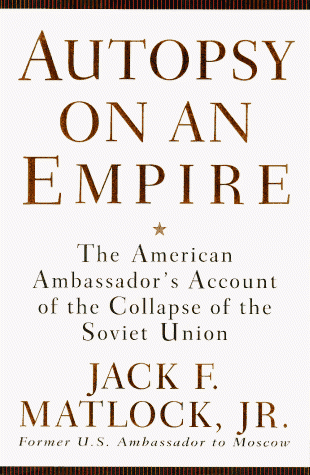

Jack F. Matlock, le dernier ambassadeur américain en Union soviétique, en 1997 :
"L'expansion de l'OTAN a été l'erreur stratégique la plus profonde commise depuis la fin de la guerre froide.
Loin de renforcer la sécurité des États-Unis, de leurs alliés et des nations souhaitant rejoindre l'Alliance, elle pourrait encourager une chaîne d'événements susceptibles de produire la menace sécuritaire la plus grave pour cette nation [la Russie] depuis l'effondrement de l'Union soviétique.
Si l'OTAN doit être le principal instrument d'unification du continent, la seule façon d'y parvenir est logiquement de s'élargir pour inclure tous les pays européens. Mais cela ne semble pas être l'objectif de l'administration, et même si c'est le cas, le moyen d'y parvenir n'est pas d'admettre de nouveaux membres en morceaux."

William Perry, secrétaire à la défense sous Bill Clinton en 1996 :
"Je craignais que l'élargissement de l'OTAN à ce moment-là ne nous fasse faire marche arrière. Je pensais qu'une régression ici gâcherait les relations positives que nous avions si laborieusement et patiemment développées au cours de la période opportuniste de l'après-guerre froide.
Je pensais que nous avions besoin de plus de temps pour amener la Russie, l'autre grande puissance nucléaire, dans le cercle de sécurité occidental. La priorité absolue pour moi était évidente.
Lorsque j'ai considéré que la Russie disposait encore d'un énorme arsenal nucléaire, j'ai accordé une très grande priorité au maintien de cette relation positive, notamment en ce qui concerne toute réduction future de la menace des armes nucléaires."
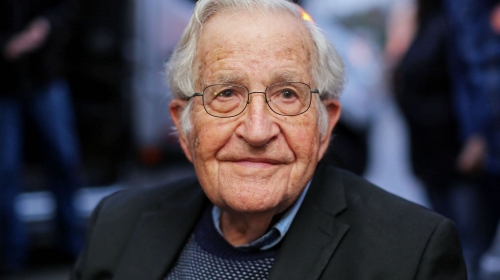
Noam Chomsky, l'un des plus importants intellectuels vivants, en 2015 :
"L'idée que l'Ukraine puisse rejoindre une alliance militaire occidentale serait totalement inacceptable pour tout dirigeant russe. Cela remonte à 1990, lorsque l'Union soviétique s'est effondrée. On s'est demandé ce qui allait se passer avec l'OTAN. Gorbatchev accepte que l'Allemagne soit unifiée et rejoigne l'OTAN. Il s'agissait d'une concession tout à fait remarquable, avec pour contrepartie que l'OTAN ne s'étende pas d'un pouce à l'est.
Ce qui s'est passé. L'OTAN a immédiatement incorporé l'Allemagne de l'Est. Puis Clinton a étendu l'OTAN jusqu'aux frontières de la Russie. Le nouveau gouvernement ukrainien a voté en faveur de l'adhésion à l'OTAN. Le président Porochenko ne protégeait pas l'Ukraine, il la menaçait d'une guerre majeure".
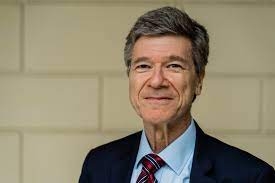
Jeffrey Sachs, haut conseiller du gouvernement américain et de l'ONU, trois jours avant l'invasion :
"Les États-Unis ne seraient pas très heureux si le Mexique rejoignait une alliance militaire dirigée par la Chine, pas plus qu'ils n'étaient heureux lorsque le Cuba de Fidel Castro s'est aligné sur l'URSS il y a 60 ans. Ni les États-Unis ni la Russie ne veulent avoir l'armée de l'autre au bout des doigts.
Il était particulièrement imprudent en 2008 pour le président George W. Bush d'ouvrir la porte à l'Ukraine (et à la Géorgie) pour rejoindre l'OTAN.
La Russie a longtemps craint les invasions de l'Ouest, que ce soit par Napoléon, Hitler ou, finalement, l'OTAN.
L'Ukraine devrait aspirer à ressembler aux membres de l'UE non membres de l'OTAN : l'Autriche, Chypre, la Finlande, l'Irlande, Malte et la Suède".
12:58 Publié dans Actualité, Géopolitique | Lien permanent | Commentaires (0) | Tags : stratégie, actualité, politique internationale, otan, alliance atlantique, europe, ukraine, russie, george kennan, henry kissinger, john mearsheimer, jack f. matlock, william perry, noam chomsky, jeffrey sachs |  |
|  del.icio.us |
del.icio.us |  |
|  Digg |
Digg | ![]() Facebook
Facebook
La fin inachevée de l'histoire et la guerre de la Russie contre l'ordre mondial libéral

La fin inachevée de l'histoire et la guerre de la Russie contre l'ordre mondial libéral
Alexandre Douguine
La thèse de Fukuyama sur la fin de l'histoire
Du point de vue idéologique, le monde vit encore dans l'ombre de la controverse des années 1990 entre Francis Fukuyama et Samuel Huntington. Quelles que soient les critiques que l'on puisse formuler à l'encontre des thèses des deux auteurs, leur importance n'en est nullement diminuée, car le dilemme subsiste toujours et, en fait, constitue toujours le contenu principal de la politique et de l'idéologie mondiales.
Permettez-moi de vous rappeler qu'au lendemain de l'effondrement du Pacte de Varsovie puis de l'URSS, le philosophe politique américain Francis Fukuyama a formulé la thèse de la "fin de l'histoire". Cela se résume au fait qu'au vingtième siècle, et surtout après la victoire sur le fascisme, la logique de l'histoire s'est réduite à l'affrontement de deux idéologies - le libéralisme occidental et le communisme soviétique. L'avenir, et donc le sens de l'histoire, dépendait de l'issue de leur confrontation. Ainsi, selon Fukuyama, le futur est arrivé, et ce moment a été l'effondrement de l'Union soviétique en 1991 et l'arrivée au pouvoir à Moscou de libéraux qui ont reconnu la suprématie idéologique de l'Occident. D'où la thèse de la "fin de l'histoire".

Selon Fukuyama, l'histoire est une histoire de guerres et de confrontations, chaudes et froides. Dans la seconde moitié du vingtième siècle, toutes les confrontations et les guerres se limitaient à l'opposition de l'Ouest capitaliste-libéral contre l'Est communiste. Lorsque l'Est s'est effondré, les contradictions ont disparu. Les guerres se sont arrêtées (comme cela semblait être le cas selon Fukuyama). Et, par conséquent, l'histoire était terminée.
La fin de l'histoire - reportée, mais pas rejetée
En fait, cette théorie est à la base de toute l'idéologie et de la pratique du mondialisme et de la mondialisation. Les libéraux occidentaux s'en inspirent encore. C'est l'idée défendue par George Soros, Klaus Schwab, Bill Gates, Jeff Bezos, Mark Zuckerberg, Barack Obama, Bernard Henri Levy, Hillary Clinton et... Joe Biden.
Les libéraux admettent toutefois que tout ne s'est pas déroulé sans heurts depuis les années 1990. Le libéralisme et l'Occident ont été confrontés à divers problèmes et à de nouveaux défis (avec l'islam politique, la nouvelle montée de la Russie et de la Chine, le populisme - y compris en Amérique même sous la forme de Trump et du trumpisme - etc.), mais les mondialistes sont convaincus que le moment de la fin de l'histoire s'est quelque peu éloigné, mais qu'il est inévitable et qu'il arrivera assez tôt. C'est sous le slogan d'un nouvel effort - faire de la fin de l'histoire une réalité et cimenter de manière irréversible le triomphe mondial du libéralisme - qu'a été menée la campagne du mondialiste Joe Biden (Build Back Better, signifiant "Retour à la mondialisation à nouveau - et cette fois avec plus de succès, après avoir construit notre arrière"), inscrite dans le programme planétaire du Great Reset de Klaus Schwab. Autrement dit, Fukuyama et sa thèse n'ont pas été écartés - c'est juste que la mise en œuvre de ce plan, idéologiquement irréprochable du point de vue de la vision libérale du monde dans son ensemble, a été reportée. Néanmoins, le libéralisme a continué à imprégner la société au cours des 30 dernières années - dans la technologie, dans les processus sociaux et culturels, par la propagation de la politique de genre (LGBTQ+), l'éducation, la science, l'art, les médias sociaux, etc. Et cela n'était pas seulement vrai dans les pays occidentaux, mais même dans les sociétés semi-fermées comme les pays islamiques, la Chine et la Russie.
Le nouveau phénomène des civilisations
Dès les années 1990, un autre auteur américain, Samuel Huntington, a présenté une vision alternative à celle de Fukuyama sur les processus mondiaux. Fukuyama était un libéral convaincu, partisan du Gouvernement Mondial, de la dénationalisation et de la "désuperinisation" des Etats traditionnels. Huntington, quant à lui, adhérait à la tradition du réalisme dans les relations internationales, c'est-à-dire qu'il reconnaissait la souveraineté comme un principe très élevé. Mais contrairement aux autres réalistes qui pensaient en termes d'États-nations, Huntington pensait qu'après la fin de la guerre froide et la disparition du bloc de l'Est et de l'URSS, il n'y aurait pas de fin de l'histoire, mais de nouveaux acteurs qui se feraient concurrence à l'échelle planétaire. C'est ainsi qu'il a nommé les "civilisations" et prédit dans son célèbre article (Clash of Civilisations) leur affrontement.
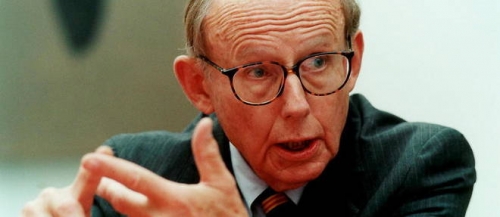
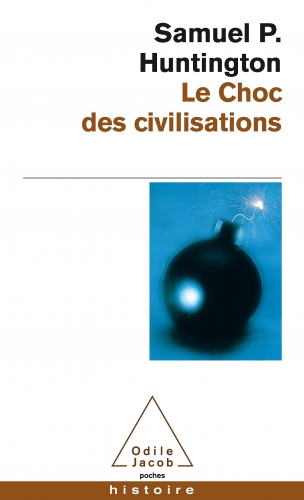
Huntington est parti du constat suivant : le camp capitaliste et socialiste n'a pas été créé dans un vide au sein duquel des "têtes d'oeuf" ont élaboré des plans idéologiques abstraits, mais sur les bases culturelles et civilisationnelles très précises des différents peuples et territoires. Ces fondements ont été établis bien avant les temps modernes et leurs idéologies simplistes. Et lorsque la querelle des idéologies modernes prendra fin (et elle l'a fait avec la disparition de l'une d'entre elles - le communisme), les contours profonds des anciennes cultures, visions du monde, religions et civilisations émergeront de sous le formatage de surface.
Vrais et faux ennemis du libéralisme mondial
La justesse des hypothèses formulées par S. Huntington est devenue particulièrement évidente dans les années 2000, lorsque l'Occident a été confronté à l'islam radical. À cette époque, Huntington lui-même était mort avant d'avoir pu profiter de sa victoire théorique, tandis que Fukuyama admettait avoir tiré des conclusions hâtives, et même avancé la thèse de l'émergence d'un "islamo-fascisme", qu'il fallait vaincre avant que "la fin de l'histoire" ne puisse advenir: elle ne pouvait, disait-il, advenir avant cette victoire.
Néanmoins, Huntington n'avait pas seulement raison au sujet de l'islam politique. De plus, l'Islam s'est avéré si hétérogène dans la pratique qu'il ne s'est pas coalisé en une force unie contre l'Occident. Et il était commode pour les stratèges occidentaux de manipuler dans une certaine mesure la menace islamique et le facteur fondamentalisme islamique afin de justifier leur ingérence dans la vie politique des sociétés islamiques du Moyen-Orient ou d'Asie centrale. Un processus beaucoup plus sérieux était la poursuite de la pleine souveraineté par la Russie et la Chine. Là encore, ni Moscou ni Pékin n'ont opposé les libéraux et les mondialistes à une idéologie particulière (d'autant que le communisme chinois, après les réformes de Deng Xiaoping, a reconnu certains biens fondés du libéralisme économique). Il s'agissait de deux civilisations qui s'étaient développées bien avant les temps modernes. Huntington lui-même les a appelées civilisation orthodoxe (chrétienne orientale) dans le cas de la Russie et civilisation confucéenne dans le cas de la Chine, reconnaissant à juste titre en Russie et en Chine un lien avec des cultures spirituelles plus anciennes et plus profondes. Ces cultures profondes se sont fait connaître au moment où la confrontation idéologique entre le libéralisme et le communisme s'est terminée par une victoire formelle, mais pas réelle (!), des mondialistes. Le communisme a disparu, mais pas l'Est, l'Eurasie.
La victoire dans un monde virtuel
Mais les partisans de la fin de l'histoire n'ont pas été complaisants. Ils sont tellement englués dans leurs modèles fanatiques de mondialisation et de libéralisme, qu'ils ne reconnaissent aucun autre avenir. Et c'est ainsi qu'ils ont commencé à insister de plus en plus sur une fin virtuelle de l'histoire. Comme, si ce n'est pas réel, faisons en sorte que ça ait l'air réel et tout le monde y croira. En substance, on mise sur la politique de contrôle des esprits, via les ressources d'information mondiales, la technologie des réseaux, la promotion de nouveaux gadgets et le développement de modèles de cohésion homme-machine. C'est le "Great Reset" proclamé par le créateur du Forum de Davos, Klaus Schwab, et embrassé par le parti démocrate américain et Joe Biden.
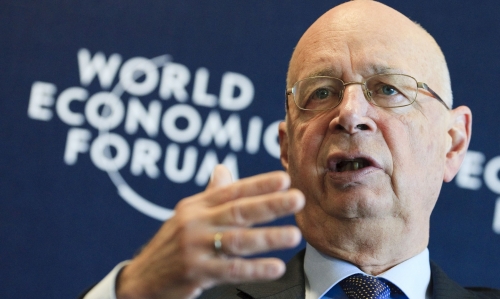
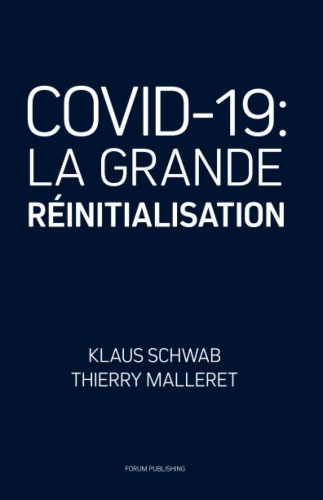
L'essence de cette politique est la suivante : les globalistes ne contrôlent pas la réalité, mais ils dominent complètement le monde virtuel. Ils possèdent toutes les technologies de réseau de base, les protocoles, les serveurs, etc. Par conséquent, en s'appuyant sur l'hallucination électronique globale et le contrôle total de la conscience, ils ont commencé à créer une image du monde dans lequel l'histoire était déjà terminée. C'est là une image, rien de plus.
Fukuyama a donc conservé son importance, mais non plus en tant qu'analyste, mais en tant que technologue politique mondial tentant d'imposer des perceptions obstinément rejetées par une grande partie de l'humanité.
La guerre de Poutine contre l'ordre libéral
À ce titre, l'évaluation par Fukuyama de l'opération militaire spéciale en Ukraine présente un certain intérêt. À première vue, il pourrait sembler que son analyse devienne alors tout à fait hors de propos, car il ne fait que répéter les clichés courants de la propagande anti-russe occidentale qui ne contiennent rien de nouveau ou de convaincant (dans le style du banal journalisme russophobe). Mais à y regarder de plus près, le tableau change quelque peu si l'on ignore ce qui est le plus frappant - la haine enragée de la Russie, de Poutine et de toutes les forces qui s'opposent à la fin de l'histoire.
Dans un article publié dans le Financial Times, Fukuyama exprime déjà dans le titre même l'idée principale de ses revendications contre la Russie - "la guerre de Poutine contre l'ordre libéral". Et cette thèse en soi est absolument correcte. L'opération militaire spéciale en Ukraine est un accord décisif pour établir la Russie comme une civilisation, comme un pôle souverain d'un monde multipolaire. Cela correspond parfaitement à la théorie de Huntington, mais est complètement en désaccord avec la "fin de l'histoire" de Fukuyama (ou la société ouverte de Popper/Soros).
Oui, c'est exactement ça - "la guerre contre l'ordre libéral".
Le rôle clé de l'Ukraine dans la géopolitique mondiale
L'importance de l'Ukraine pour la renaissance de la Russie en tant que puissance mondiale pleinement indépendante a été clairement reconnue par toutes les générations de géopolitogues anglo-saxons - du fondateur de cette science Halford J. MacKinder à Zbigniew Brzezinski. Auparavant, elle était formulée comme suit : "Sans l'Ukraine, la Russie n'est pas un Empire, mais avec l'Ukraine, elle est un Empire. Si l'on mettait le terme "civilisation" ou "pôle mondial multipolaire" à la place d'"Empire", le sens serait encore plus transparent.
L'Occident mondial a misé sur l'Ukraine comme sur un pion anti-russe et a instrumentalisé le nazisme ukrainien et la russophobie extrême à cette fin. Tous les moyens étaient bons pour lutter contre la civilisation orthodoxe et le monde multipolaire. Poutine, cependant, n'a pas pris ce virage et est entré dans la bataille, mais pas avec l'Ukraine, mais avec le mondialisme, avec l'oligarchie mondiale, avec le Grand Remplacement, avec le libéralisme et la fin de l'histoire.
Et c'est ici que la chose la plus importante est apparue. L'opération militaire spéciale est dirigée non seulement contre le nazisme (la dénazification - avec la démilitarisation - est son principal objectif), mais plus encore contre le libéralisme et le mondialisme. Après tout, ce sont les libéraux occidentaux qui ont rendu possible le nazisme ukrainien, l'ont soutenu, armé et opposé à la Russie - en tant que nouveau pôle d'un monde multipolaire. Mackinder a appelé les terres de la Russie "l'axe géographique de l'histoire" - c'était le titre de son célèbre article, tout au début de sa carrière. Pour que l'histoire se termine (la thèse mondialiste, le but du "Grand Reset"), le pivot géographique de l'histoire doit être brisé, détruit. La Russie en tant que pôle, en tant qu'acteur souverain, en tant que civilisation ne doit tout simplement plus exister. Et le plan diabolique des mondialistes était de miner la Russie dans la zone la plus douloureuse, de dresser contre elle les mêmes Slaves orientaux (c'est-à-dire, en fait, les mêmes Russes), et même les Orthodoxes.
Pour ce faire, les Ukrainiens ont dû être placés à l'intérieur de la matrice mondialiste, pour prendre le contrôle de la conscience de la société ukrainienne à l'aide de la propagande informative, des réseaux sociaux et d'une gigantesque opération de contrôle de la psyché et de la conscience, dont des millions d'Ukrainiens ont été victimes au cours des dernières décennies. Les Ukrainiens ont été persuadés qu'ils font partie du monde occidental (mondial) et que les Russes ne sont pas des frères, mais des ennemis acharnés. Et dans une telle stratégie, le nazisme ukrainien coexistait parfaitement avec le libéralisme, qu'il servait essentiellement de manière instrumentale.
La guerre pour un ordre mondial multipolaire
C'est exactement ce contre quoi Poutine s'est engagé dans une lutte décisive. Pas contre l'Ukraine, mais pour l'Ukraine. Fukuyama a entièrement raison dans ce cas. Ce qui se passe aujourd'hui en Ukraine est "la guerre de Poutine contre l'ordre libéral". C'est une guerre contre Fukuyama lui-même, contre Soros et Schwab, contre la "fin de l'histoire" et le globalisme, contre l'hégémonie réelle et virtuelle, contre la "Grande Réinitialisation".
Des événements dramatiques s'ensuivirent - et c'est là un dilemme universel. Ils décident du sort de ce que sera l'ordre mondial à venir. Le monde deviendra-t-il vraiment multipolaire, c'est-à-dire démocratique et polycentrique, où les différentes civilisations auront voix au chapitre (et nous espérons que c'est exactement ce qui se passera - c'est le sens de notre victoire à venir), ou (Dieu nous en préserve !) sombrera-t-il finalement dans l'abîme du mondialisme, mais sous une forme plus ouverte, où le libéralisme n'affrontera plus le nazisme et le racisme, mais fusionnera inséparablement avec eux. Le libéralisme moderne, prêt à exploiter le nazisme et à le négliger lorsqu'il s'agit des intérêts des nations, est le véritable mal. Le mal absolu. C'est cela, et c'est contre cela que la guerre est menée maintenant.
12 thèses de Francis Fukuyama, basées sur une seule fausse prémisse
Un autre texte récent de Fukuyama, American Purpose, imprimé dans la publication des "néocons" américains (soit les néoconservateurs) en tant que bruyants représentants du nazisme libéral, mérite un certain intérêt. Dans ce document, Fukuyama propose 12 thèses sur la façon dont, selon lui, les événements se dérouleront pendant le conflit en Ukraine. Nous allons les présenter dans leur intégralité. Disons tout de suite qu'il s'agit d'une désinformation totale et d'une propagande ennemie, et c'est à ce titre - fake news - que nous citons ce texte.
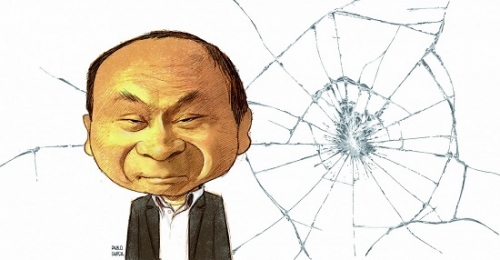
"La Russie se dirige vers une défaite totale en Ukraine. La planification russe a été incompétente, fondée sur l'hypothèse erronée que les Ukrainiens sont favorables à la Russie et que leurs forces armées s'effondreront immédiatement après l'invasion. Les soldats russes transportaient manifestement des uniformes de parade pour le défilé de la victoire à Kiev, et non des munitions et des rations supplémentaires. À ce stade, Poutine a engagé la plupart de ses forces armées dans l'opération - il n'y a pas d'énormes réserves auxquelles il pourrait faire appel pour prendre part à la bataille. Les troupes russes sont bloquées à l'extérieur des différentes villes ukrainiennes, où elles sont confrontées à d'énormes problèmes d'approvisionnement et à des attaques ukrainiennes constantes."
La première phrase est la plus importante. "La Russie se dirige vers une défaite totale en Ukraine". Tout le reste repose sur le fait que, lui, Fukuyama, représente la vérité absolue et qu'il n'est pas à remettre en question. Si nous faisions réellement de l'analytique, cela commencerait par un dilemme : si les Russes gagnent, alors..., si les Russes perdent, alors..... Mais il n'y a rien de tel ici. "Les Russes vont perdre parce que les Russes ne peuvent pas s'empêcher de perdre, ce qui signifie que les Russes ont déjà perdu. Et aucune autre option n'est envisagée, car il s'agirait dès lors de propagande russe." Qu'est-ce que c'est ? Voilà ce qu'est le nazisme libéral. De la pure propagande idéologique mondialiste, plaçant d'emblée le lecteur dans un monde virtuel où "l'histoire est déjà terminée".
Ensuite, tout devient prévisible, ce qui ne fait qu'ajouter à l'hallucination. Nous avons affaire à un exemple de "psy-op", une "opération psychologique".
"L'effondrement de leurs positions pourrait être soudain et catastrophique, plutôt que de se produire lentement, dans une guerre d'usure. L'armée sur le terrain atteindrait un point où elle ne pourrait plus être approvisionnée ni retirée et le moral s'évaporerait. C'est au moins vrai dans le nord ; les Russes s'en sortent mieux dans le sud, mais ces positions seront difficiles à tenir si le nord s'effondre."
Aucune preuve, de purs vœux pieux. Les Russes doivent être des perdants parce qu'ils sont des perdants. Et ceci nous vient du perdant modèle Fukuyama, dont toutes les prédictions ont été démenties de manière démontrable.
Dans l'ensemble, il est construit sur l'hypothèse que Moscou se préparait à une opération qui devait durer deux ou trois jours et culminer par un salut victorieux avec des fleurs de la part d'une population libérée. Comme si les Russes étaient tellement idiots qu'ils n'avaient pas remarqué les trente ans de propagande russophobe, l'encadrement par l'Occident de formations néo-nazies et une armée énorme (selon les normes européennes), pas mal armée (par le même Occident) et entraînée à l'époque soviétique (et l'entraînement était alors sérieux) qui allait déclencher une guerre dans le Donbass puis en Crimée. Et si une opération spéciale menée par les Russes dans une telle situation n'est pas terminée en quinze jours, c'est un "échec". Une autre hallucination.
L'Occident a sacrifié les Ukrainiens
Et puis Fukuyama poursuit en disant une chose assez importante :
"Avant que cela ne se produise, il n'y a pas de solution diplomatique à la guerre. Il n'existe aucun compromis concevable qui soit acceptable pour la Russie ou l'Ukraine, compte tenu des pertes qu'elles ont subies jusqu'à présent."
Cela signifie que l'Occident continue de croire à sa propre propagande virtuelle et ne va pas faire de compromis avec la Russie et mettre en œuvre un contrôle de la réalité. Si l'Occident attend que la Russie soit vaincue pour entamer des négociations, celles-ci ne commenceront jamais.
"Le Conseil de sécurité de l'ONU a une fois de plus prouvé son inutilité. La seule chose utile a été le vote à l'Assemblée générale, qui permet d'identifier les acteurs peu scrupuleux ou évasifs dans le monde."
Dans cette thèse, Fukuyama fait référence à la nécessité de dissoudre l'ONU et de créer à sa place une Ligue des démocraties, c'est-à-dire des États complètement subordonnés à Washington, qui sont prêts à vivre dans l'illusion de "la fin de l'histoire". Ce projet a été formulé par un autre nazi libéral russophobe, McCain, et a commencé à être mis en œuvre par Joe Biden. Tout se déroule selon le plan du "Grand Reset".
"Les décisions de l'administration Biden de ne pas déclarer une zone d'exclusion aérienne et de ne pas aider à remettre les MiG polonais étaient les bonnes ; ils ont gardé la tête froide à un moment très émotionnel. Il vaut bien mieux que les Ukrainiens battent les Russes eux-mêmes, ce qui prive Moscou de l'excuse selon laquelle l'OTAN les a attaqués, et évite toutes les possibilités évidentes d'escalade. Les MiG polonais en particulier n'ajouteraient pas grand-chose aux capacités ukrainiennes. Bien plus important est un approvisionnement régulier en Javelins, Stingers, TB2s, fournitures médicales, équipements de communication et de partage de renseignements. Je suppose que les forces ukrainiennes sont déjà dirigées par les services de renseignement de l'OTAN opérant en dehors de l'Ukraine."
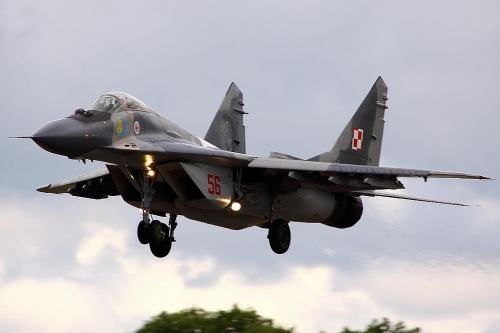
Sur la première phrase, en revanche, on peut être d'accord avec Fukuyama. Biden n'est pas prêt à lancer un duel nucléaire qui suivrait immédiatement l'annonce d'une zone de drones et d'autres mesures directes vers une intervention de l'OTAN dans le conflit. L'expression "les Ukrainiens ont eux-mêmes vaincu les Russes" semble cynique et cruelle, mais l'auteur ne comprend pas ce qu'il dit : l'Occident a d'abord dressé les Ukrainiens contre les Russes, puis les a laissés seuls face à eux en s'abstenant de leur apporter une aide efficace. Les Ukrainiens ne sont virtuellement victorieux que dans un monde où l'histoire est terminée. Et devrait, selon la pensée de Fukuyama, s'en réjouir. C'est une petite affaire : il reste à vaincre les Russes.
"Bien sûr, le prix que l'Ukraine paie est énorme. Mais les plus gros dégâts sont causés par les missiles et l'artillerie, auxquels ni les MiG ni une zone d'exclusion aérienne ne peuvent faire face. La seule chose qui puisse arrêter le carnage est la défaite de l'armée russe sur le terrain."
Lorsque Fukuyama dit "le prix est énorme", il est clair, d'après son expression nonchalante, qu'il ne sait pas de quoi il parle.
Poutine et le nouveau départ du populisme
Ensuite, Fukuyama réfléchit au sort du président Poutine. Tout cela dans la même veine de rêverie sur la fin de l'histoire. En termes non équivoques, il déclare :
"Poutine ne survivra pas à la défaite de son armée. Il gagne du soutien parce qu'il est perçu comme un homme fort ; que peut-il offrir lorsqu'il démontre son incompétence et est dépouillé de son pouvoir coercitif ?"
Une autre thèse construite entièrement sur la première prémisse. La défaite des Russes est inévitable, ce qui signifie que Poutine est fini. Et si les Russes gagnent, Poutine n'est que le tout début. C'est ce qui compte, non plus pour le délirant Fukuyama, mais pour nous.
"L'invasion a déjà causé d'énormes dommages aux populistes du monde entier qui, avant l'attaque, n'ont cessé d'exprimer leur sympathie pour Poutine. Parmi eux, Matteo Salvini, Jair Bolsonaro, Eric Zemmour, Marine Le Pen, Viktor Orban et, bien sûr, Donald Trump. La politique de la guerre a exposé leurs tendances ouvertement autoritaires."
Tout d'abord, tous les populistes ne sont pas aussi directement influencés par la Russie. Matteo Salvini, sous l'influence des nazis libéraux et des atlantistes de son cercle intime, a changé son attitude auparavant amicale envers la Russie. Les sympathies pro-russes des autres ne doivent pas non plus être exagérées. Mais là encore, il y a un point curieux. Même si l'on accepte la position de Fukuyama selon laquelle les populistes sont orientés vers Poutine, ils ne perdent que si les Russes sont vaincus. Et en cas de victoire ? Après tout, c'est "la guerre de Poutine contre l'ordre libéral", et s'il la gagne, alors tous les populistes gagnent avec Moscou ? Et puis la fin de l'oligarchie mondiale et des élites du "Big Reboot".
Une leçon pour la Chine et la fin du monde unipolaire
"Jusqu'à présent, la guerre a été une bonne leçon pour la Chine. Comme la Russie, la Chine a développé une armée apparemment de haute technologie au cours de la dernière décennie, mais elle manque d'expérience au combat. L'échec de l'armée de l'air russe risque d'être répété par l'armée de l'air de l'Armée populaire de libération, qui manque également d'expérience dans la gestion d'opérations aériennes complexes. Nous pouvons espérer que les dirigeants chinois ne se berceront pas d'illusions sur leurs capacités comme l'ont fait les Russes en envisageant de futures actions contre Taïwan."
Encore une fois, tout cela est vrai si "les Russes ont déjà perdu". Et s'ils ont gagné ? Alors la signification de cette leçon pour la Chine serait tout le contraire. Autrement dit, Taïwan regagnera son port d'attache plus tôt qu'on ne le pense.
"Il reste à espérer que Taïwan elle-même se réveille et prenne conscience de la nécessité de se préparer à la guerre, comme l'ont fait les Ukrainiens, et rétablisse la conscription. Ne soyons pas prématurément défaitistes".

Il vaudrait mieux être réaliste, et voir les choses telles qu'elles sont, en tenant compte de tous les facteurs. Mais peut-être que le fait que l'Occident ait des idéologues comme Fukuyama, hypnotisés par leurs propres illusions, est à notre avantage ?
"Les drones Bayratkar de Turquie sont devenus des best-sellers".
Aujourd'hui, des fragments de ces "best-sellers" sont ramassés par des clochards et des pillards dans les décharges de l'Ukraine.
"La défaite de la Russie rendra possible une 'nouvelle naissance de la liberté' et nous fera sortir de nos rêveries sur le déclin de la démocratie mondiale. L'esprit de 1989 perdurera, grâce à un groupe de courageux Ukrainiens."
Voici une grande conclusion : Fukuyama connaît déjà "la défaite de la Russie", comme il connaissait "la fin de l'histoire". Et alors, le mondialisme sera sauvé. Et si non ? Alors il n'y aura plus de mondialisme.
Et ensuite - "bienvenue" dans le monde réel, dans le monde des peuples et des civilisations, des cultures et des religions, dans le monde de la réalité et de la liberté du camp de concentration totalitaire libéral.
12:22 Publié dans Actualité | Lien permanent | Commentaires (0) | Tags : alexandre douguine, francis fukuyama, fin de l'histoire, russie, ukraine, chine, taiwan, actualité, politique interntionale, samuel huntington |  |
|  del.icio.us |
del.icio.us |  |
|  Digg |
Digg | ![]() Facebook
Facebook
vendredi, 18 mars 2022
Sur le rôle des églises orthodoxes dans le conflit ukrainien
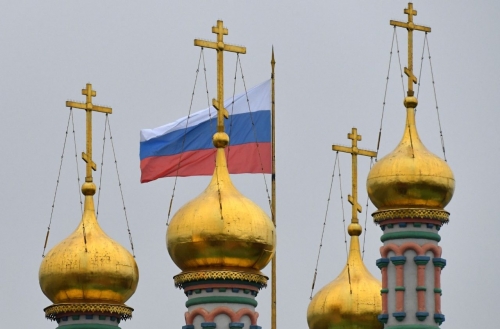
Sur le rôle des églises orthodoxes dans le conflit ukrainien
Erich Körner-Lakatos
Source: https://zurzeit.at/index.php/ueber-die-rolle-der-orthodoxen-kirchen-im-ukraine-konflikt/
Le Patriarcat de Moscou se retrouve presque seul
Les relations entre les différentes églises chrétiennes orthodoxes, qui ne sont pas dénuées de conflits, ont encore été exacerbées par l'invasion russe du pays voisin occidental. Jusqu'à présent, il y avait les querelles bien connues entre le chef honorifique à Constantinople (Istanbul), le patriarche œcuménique Bartholomée Ier, largement impuissant mais respecté en tant que primus inter pares, d'une part, et les différentes églises nationales autocéphales, donc pratiquement indépendantes, d'autre part.
Cyrille Ier, le patriarche de "Moscou et de toute la Rus", a toujours revendiqué la primauté de la Troisième Rome. Ces derniers temps, on a également entendu parler de querelles entre les orthodoxes de Serbie et l'Église orthodoxe monténégrine reconstituée, rattachée auparavant au royaume indépendant jusqu'en 1918, où il est également question de choses très séculières, à savoir la propriété des bâtiments religieux. Il en va de même pour le conflit entre le patriarche orthodoxe serbe de Belgrade et la jeune Église orthodoxe macédonienne.
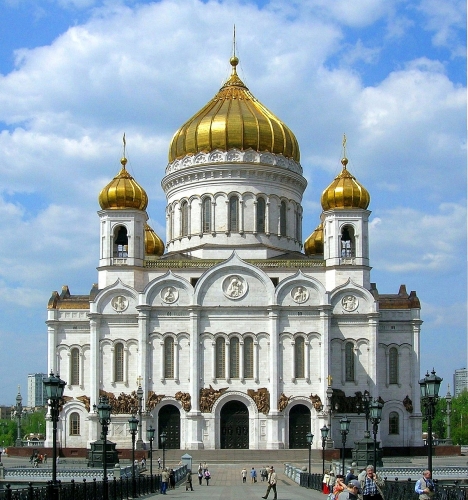
Dans la tradition de l'alliance entre le trône et l'autel qui existe depuis l'époque des tsars, le chef de l'Eglise moscovite Cyrille Ier est entièrement du côté de son ami Vladimir Poutine, qui se présente comme un chrétien fervent, ce qui est toutefois difficile à croire pour un agent du KGB. Il convient de noter que la mère de Poutine a fait baptiser le petit Vladimir en secret. L'Église orthodoxe russe bénéficie d'une aide financière considérable de l'État pour la (re)construction d'églises et de monastères. Le prince de l'Eglise et le président ont en commun leur aversion pour l'Occident, qu'ils considèrent comme décadent. Cela s'est traduit par exemple par la persécution sévère du groupe Pussy Riots (en français : "émeutes des chattes") par l'État. Pour leur apparition peu ragoûtante dans la cathédrale du Christ-Sauveur de Moscou le 21 février 2012, ces "dames" seront jugées par le tribunal pénal. Poutine et le patriarche en sont très satisfaits.
De l'autre côté, l'Église gréco-catholique ukrainienne, qui s'appuie sur un grand nombre de fidèles (plus de quatre millions) dans l'ouest de l'Ukraine, avec à sa tête l'archevêque majeur de Kiev, Sviatoslav Shevchuk. Il s'agit d'une communauté religieuse à mi-chemin entre le catholicisme latin et l'orthodoxie. Depuis 1596 (en vertu de l'Union de Brest), elle reconnaît le Saint-Père de Rome comme chef de l'Église et se considère comme faisant partie de l'Église catholique. Persécutés à l'époque par Staline, ces "Uniates" célèbrent la liturgie selon le rite byzantin (ritus graecus) et défendent sans réserve une Ukraine indépendante.
Il en va de même pour l'Eglise orthodoxe ukrainienne, qui s'est détachée du Patriarcat de Moscou, se considère comme une Eglise autocéphale et est reconnue comme telle par le Patriarche œcuménique. Elle proteste contre l'invasion du pays. Ensuite, il existe encore en Ukraine une église orthodoxe qui reconnaît le patriarche de Moscou comme son chef. Pour elle, une prise de position s'avère particulièrement délicate, car elle est assise entre deux chaises - ses fidèles ukrainiens et la hiérarchie. Quelle est sa décision ? Très clairement, elle se positionne contre l'invasion. Il en résulte un rapprochement surprenant avec la branche autocéphale, avec laquelle elle se disputait jusqu'ici pour réunir des fidèles et pour gérer les biens de l'Église.
13:55 Publié dans Actualité, Affaires européennes | Lien permanent | Commentaires (0) | Tags : europe, russie, affaires européennes, ukraine, uniates, églises orthodoxes, orthodoxie, église autocéphales, kiev, moscou |  |
|  del.icio.us |
del.icio.us |  |
|  Digg |
Digg | ![]() Facebook
Facebook
mercredi, 16 mars 2022
Le retour de la guerre en Europe et l'art de gouverner
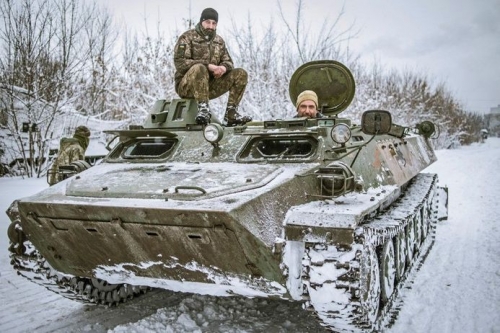
Le retour de la guerre en Europe et l'art de gouverner
par Irnerio Seminatore
Source: https://www.ieri.be/fr/publications/wp/2022/mars/le-retour-de-la-guerre-en-europe-et-lart-de-gouverner
« Pour revenir à la paix, il faut établir un équilibre entre puissance et légitimité qui constitue l'essence même de l'art de gouverner ».
Irnerio Seminatore, Président fondateur de l’Institut Européen des Relations Internationales de Bruxelles (IERI), nous explique les ambitions russes et l’évocation de l’arme nucléaire. Docteur en droit et en sociologie, il est l’auteur de « La multipolarité au XXIe siècle » (VA Éditions) qui précise la multipolarité de notre monde et les risques d’affrontement entre les pôles (Camille Chevolot, Collaboratrice VA Editions).
Le retour de la guerre en Europe et l'art de gouverner (sensemaking.fr)
LE RETOUR DE LA GUERRE EN EUROPE ET L'ART DE GOUVERNER
Irnerio Seminatore
Dans un pamphlet-fiction au titre anticipateur 2017. Guerre avec la Russie. Un cri d'alarme de la haute hiérarchie militaire, le Général Richard Shirref, ancien Commandant Suprême des forces alliées en Europe (DSACEUR) à l'Otan (2011-214), a soutenu la thèse que la Russie est devenue l'adversaire stratégique de l'Occident et qu'elle prépare un affrontement frontal avec l'Otan et un plan d'invasion des pays baltes. Le but de cette invasion serait de rétablir une zone d'influence entre la "défense collective" de l'Alliance et les frontières de la fédération russe. Les raisons de tensions ne manquent pas avec ces Etats-charnières entre l'Est et l'Ouest (jusqu'à 40% de la population russophone a un statut discriminatoire de "non citoyens"). C’était en 2017.
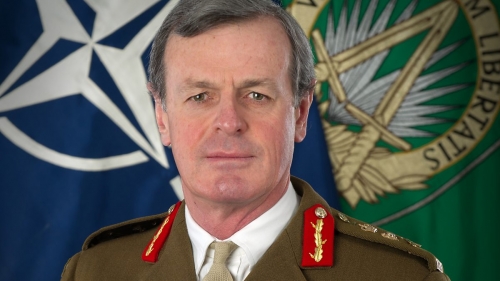
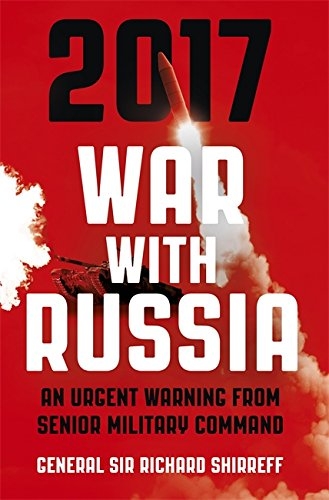
Depuis 2014, une rupture est intervenue entre la Russie et l'Ukraine, ainsi qu’entre la Russie et l'Union européenne, à propos de la révolution de couleur de Maïdan, tenue par Moscou comme un coup d'Etat et le retour de la Crimée à la Russie, considérée par les Occidentaux comme une annexion. Cette rupture est également à l'origine de la naissance des deux républiques auto-proclamées du Donbass (Donetzk et Lougansk), aujourd'hui, reconnues unilatéralement par la Russie comme républiques indépendantes.
On peut affirmer que le retour de la guerre en Europe a pour origine la rupture de l'unité territoriale de l’Ukraine, rendant impossible l'exercice de la pleine souveraineté de Kiev, le revirement pro-occidental du gouvernement du pays, dont la demande d'adhésion à l'Otan menace les intérêts de sécurité de Moscou et le non respects des accords de Minsk, dont les garants sont, avec la Russie, Paris et Berlin, le fameux format Normandie.
Le livre-fiction du Général britannique R. Shirref est-il une pure vision de l'esprit? La "surprise stratégique" d'une invasion armée venant de l'Est n'a-t-elle pas été prévue par anticipation par l’Ouest ? Les signaux contradictoires venant de Washington et de Bruxelles sur la non-intervention occidentale directe en Ukraine, n'ont pas arrêté une planification longue, méticuleuse et calculée, au cours des négociations diplomatiques, nécessairement ambiguës, de Biden, Scholz et Macron avec Poutine, à soumettre à Xi-Jing-Ping, lors des jeux olympiques. Le but de l'ambiguïté et du double jeu entre Poutine et le Président Macron ou le Chancelier Scholz ont été conformes aux règles classiques du réalisme politique, oubliées par les Européens. Il s'agissait de décrédibiliser la détermination des États-Unis d'intervenir en Ukraine ou de défendre, de manière plus large l'Europe, en minant au même temps l'unité de façade de l'Otan. Ainsi, suite au refus des garanties de sécurité occidentales à Moscou, l'invasion militaire de l'Ukraine a été tranchée.
Le but de guerre
Le but de guerre ou, selon la terminologie russe "d'opération spéciale de maintien de la paix", s'est précisée en plusieurs objectifs :
- le premier et principal est de décapiter politiquement l'Ukraine, lui ôtant son statut d'Etat souverain
- parallèlement de provoquer le découplage de la sécurité européenne et atlantique
- de s'assurer de l'effondrement de l'Otan, impuissante à garantir la sécurité collective
- enfin de détruire les infrastructures militaires offensives, préjudiciables pour la sécurité et la défense russes.
L'arme nucléaire et l'escalade
En termes de possible recours tactique à l'arme nucléaire, dont l'emploi en premier fait partie intégrante de la pensée stratégique russe, son évocation par Poutine, rappelle un scénario du pire et préfigure l'hypothèse d'une escalade, allant du conventionnel au nucléaire et du tactique au stratégique. Dans une hypothèse concrète, les gains territoriaux obtenus au plan conventionnel, seraient protégée par le chantage et l'escalade nucléaires, ceux d'un tir anti-cité, auquel ne pourraient répondre ni les européens ni les américains.
Par ailleurs l'isolationnisme bi-partisan des Etats-Unis, à propos du déni d'envoi de soldats américains en défense de l'Ukraine, valide la conviction d'une "surprise stratégique" planifiée depuis longtemps et provoque le réveil tardif des Européens pour une indépendance politique et une autonomie stratégique propres.
En termes de diplomatie et de consensus prévisible, la non intervention directe occidentale en Ukraine a été le fondement, pour Moscou, d'une longue négociation entre Américains et Russes, puis Russes et Européens, afin d'établir assurances et réassurances réciproques et d'aboutir parallèlement à une conception de l'invasion de l'Ukraine sous la forme initiale d'un Blitzkrieg.
L'enjeu du conflit imminent était existentiel pour les deux parties, la Russie ne pouvant pas reculer devant sa sécurité et les Européens devant leurs conceptions de la démocratie. Le prix à payer pour le défi sécuritaire des Occidentaux, s'appelle finlandisation de l'Ukraine, autrement dit arrêt de l'élargissement de l'Otan. En effet "si l'Ukraine rejoignait l'Otan, cela signifierait avoir des missiles à 180 Km de Moscou" (Général Inzerilli, ancien chef des services secrets italiens/photo, ci-dessous). A ce propos l'Agence de presse Reuters a titré le 7 mars dernier, “La Russie s’arrêtera à l'instant, si l'Ukraine respecte ses conditions : « que l’Ukraine cesse toute action militaire, modifie sa constitution pour consacrer la neutralité, reconnaisse la Crimée comme territoire russe et reconnaisse les républiques séparatistes de Donetsk et Lougansk comme États indépendants. »
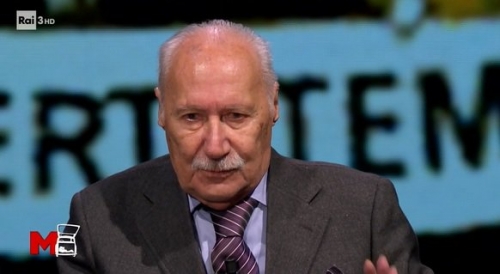
"Pour le reste, l'Ukraine est un Etat indépendant et il vivra comme il veut, mais dans des conditions de neutralité (comme la Suisse, l'Autriche, la Suède..)".
D'autre part la politique des sanctions, décidée par les États-Unis et par l'Union Européenne, comporte une pénalité évidente, non seulement pour l'économie et le peuple russes, mais pour l'économie et les peuples occidentaux. Politiquement elle pousserait le président russe à chercher une alternative en Asie, accroissant sa dépendance vis-à-vis de la Chine. Ainsi, une guerre suscitée par l'unilatéralisme atlantiste des États-Unis aboutirait à un multipolarisme asymétrique Chine-Russie.
Un message spécial russe sur la "Sécurité égale et indivisible"
Dans le but de justifier ses arguments et, au courant d'une guerre de l'information qui bat son plein, la diplomatie russe a adressé un message spécial aux pays occidentaux sur le thème de la "sécurité indivisible", car ce qui est visé par ce principe est la modification sournoise des rapports de force et de la balance mondiale du pouvoir, susceptibles de devenir menaçants pour la Russie, de l'extérieur et de l'intérieur.
Sur le plan régional et dans un contexte mouvant et aléatoire l'aide en armements accordés par l'Union Européenne à l'Ukraine apparaît, à une analyse critique, comme une solidarité équivoque, car elle sert à jeter de l'huile sur le feu et à alimenter une résistance prolongée qui ne résout pas le problème de la sécurité égale sur l'ensemble du continent, mais reporte les causalités du conflit dans une perspective sans autre issue que le cumul et l’aggravation de la crise. La situation définissant la conception de la "sécurité égale", aux yeux de Moscou, a été le rappel de Lavrov, dans sa conférence de presse du 5 mars, selon laquelle "l'augmentation de la sécurité d'un pays, ne peut se faire au détriment d'un autre". Puis, à l'adresse des Occidentaux, par une personnalisation désenchantée du rappel : "Ils nous écoutent, mais ils ne nous entendent pas !".
Plus dur et moins diplomatique Poutine, qui, au cours d'une conversation téléphonique avec Macron, du dimanche 6 mars, dispensa froidement: "Par la voie des négociations ou par celle de la guerre", les objectifs russes seront atteints.
La nature explicite de cette revendication est celle d'une politique de puissance, assurée d'elle-même. Le caractère implicite, un rappel des hiérarchies, des limites de la souveraineté et d'une complémentarité inclusive du "verbe" diplomatique et de l'action militaire (R. Aron). Ou encore, de la caractéristique capitale de tout système international, la mixité de coopération et de conflit.
Il faut en déduire le caractère limité de la souveraineté nationale de Kiev, asservie, pour pouvoir s'exercer, à la souveraineté dominante de Washington et au même temps niée, pour vouloir exister, par la souveraineté prépondérante de Moscou.
Personne, sur la scène internationale et surtout pas l'Union Européenne définit un projet d'ordre européen et mondial pour demain et donc les principes de la stabilité et de la sécurité du Heartland et de ses jonctions occidentales, car personne ne semble en mesure de définir les intentions et buts réels de la Russie poutinienne, qui se sent entourée de pays hostiles, arborant les drapeaux de l'Otan.
De manière générale, pour revenir à la paix, il faut établir un équilibre entre les deux composantes de l'ordre international, puissance et légitimité qui constitue l'essence même de l'art de gouverner. Les calculs de pouvoir, sans dimension morale, transformeraient tout désaccord en épreuve de force" (H. Kissinger). La recherche de cet équilibre par une médiation (Israël, Turquie et Chine), ressemble parfaitement à la situation actuelle, car les Occidentaux remettent en cause la légitimité du pouvoir autocratique de Poutine et ce dernier rejette toute intrusion ou atteinte, portée à la Russie par une forme d'unilatéralisme offensif (Irak, Lybie, Syrie, Soudan... allocution du 8 mars 2022).
Or, arrêter un conflit ou reconstruire un système international, après une épreuve de force majeure, est le défi ultime de l'art de gouverner.
Ainsi, évaluer la signification des tendances en cours, signifie, pour l'Europe réévaluer la notion d'équilibre des forces et réduire significativement la rhétorique des valeurs, que les Occidentaux ont cherché à promouvoir, avec ambiguïté, depuis la fin du colonialisme. Défaillants sur le premier point (logique de puissance), les Européens semblent l'être aussi sur le deuxième, car la rhétorique des valeurs se situe aux deux niveaux de l'ordre international, celui de la défense des principes universels, valables pour tous, et celui de la pluralité des histoires et des cultures régionales, ainsi que des diverses formes des régimes politiques. Une attitude différente ou opposée, marquerait une volonté d'assimilation forcée ou un dictat de légitimité, porteurs de conflits.
17:21 Publié dans Actualité, Affaires européennes, Géopolitique | Lien permanent | Commentaires (0) | Tags : europe, ukraine, russie, affaires européennes, actualité, politique internationale, vladimir poutine |  |
|  del.icio.us |
del.icio.us |  |
|  Digg |
Digg | ![]() Facebook
Facebook
L'ethnosociologie de l'Ukraine dans le contexte de l'opération militaire
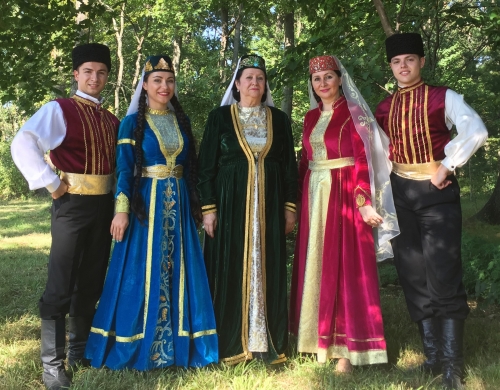
L'ethnosociologie de l'Ukraine dans le contexte de l'opération militaire
Alexandre Douguine
Source: https://katehon.com/en/article/ethnosociology-ukraine-context-military-operation
Une compréhension approfondie de l'opération militaire spéciale en Ukraine nécessite une explication préalable : à quoi avons-nous affaire, au sens large du terme ? Les notions de "nation", de "nationalité", de "peuple", d'"ethnos" sont totalement confondues, d'où celles de "Russes", "Ukrainiens", "Petits Russes", etc. Nous devrions d'abord dresser une carte ethno-sociologique et répartir les concepts avec lesquels nous opérons dans l'analyse de ce conflit.
Principales catégories ethno-sociologiques
Rappelons les points principaux de l'ethnosociologie. L'ethnosociologie opère avec les concepts suivants :
- ethnos,
- peuple,
- nation,
- société civile.
Ils correspondent à différents types de sociétés. L'ethnos est le mode de vie le plus archaïque, caractéristique des petites communautés agraires ou pastorales, où il n'existe pas de division sociale et de classe verticale. Les relations au sein d'un groupe ethnique sont strictement horizontales, et sa mentalité est construite sur des mythes. Il s'agit d'une société archaïque à l'identité collective.
Un peuple est un groupe ethnique qui s'est engagé sur le chemin de l'histoire, a construit un État, fondé une religion ou une culture distincte. Presque toujours, un peuple se compose de deux ou plusieurs groupes ethniques, qui sont unis dans une structure abstraite. Le peuple a une division en classes et une hiérarchie, une verticale du pouvoir. Il s'agit d'une société traditionnelle. L'identité y est collective et se distingue par des domaines. La plus haute réalisation historique d'un peuple est la création d'un Empire.
La nation n'apparaît qu'à l'époque moderne dans la société bourgeoise. Une nation est une communauté artificielle fondée sur l'identité individuelle. Les nations sont apparues en Europe à l'époque moderne. Ici, la hiérarchie sociale est basée sur le principe de la richesse matérielle. C'est le type de société caractéristique du début de la Modernité.
La société civile apparaît lorsque s'effectue la transition de la nation vers le Monde Unique et le Gouvernement Mondial. La société civile se manifeste pleinement dans le mondialisme. Elle possède la même identité individuelle qu'une nation, mais sans frontières nationales. La société civile prend forme au sein des nations et des États bourgeois, mais sort progressivement de leur cadre et acquiert un caractère mondial. Ici, l'identité nationale artificielle est abolie et l'individualisme devient global. Historiquement, la société civile est caractéristique de la fin de la période moderne et de la période postmoderne.
Les Slaves de l'Est deviennent un peuple
Appliquons maintenant cet appareil conceptuel au conflit ukrainien.
Qui sont les Russes ? Cette question n'est pas aussi simple qu'il n'y paraît à première vue. Elle nécessite également une clarification du point de vue ethnosociologique.
Les Slaves de l'Est étaient divisés en tribus qui se trouvaient à l'état d'ethnos, lequel s'est avéré être intégré à la Russie ancienne sous la direction d'une élite princière militante. En fait, cette élite elle-même, d'origines varègue et sarmate, était appelée "Rus", bien que la présence en son sein de familles princières et aristocratiques des Slaves polabiens (Bodrichi et Lutichi) ne soit pas à exclure. Les Slaves orientaux devinrent la principale population de l'ancienne Rus : d'où le nom de "Russes" et aussi de "Rusyns". De même, les Gaulois romanisés, conquis par la tribu germanique des Francs, commencent à être appelés "Français".

Un peuple se forme dans l'ancien État de la Rus dont le centre est à Kiev,. L'élite y conserve son identité, mais adopte la langue de la majorité de la population, composée de Slaves orientaux. Le substrat ethnique (tribus slaves orientales) devient un peuple.
Il est caractéristique qu'en même temps que le peuple, la Rus de Kiev acquiert d'autres attributs:
- l'État,
- la religion (au début - pendant une courte période - le paganisme réformé, puis - de manière constante - l'orthodoxie),
- culture (écriture, chronique, éducation, etc.).
Les Slaves de l'Est entrent dans l'histoire.
Les Slaves de l'Est se divisent
S'ensuit toute une série de processus historiques au cours desquels la Rus de Kiev elle-même perd son unité. Les Slaves orientaux sont divisés - mais pas par tribus, mais par territoires, ayant souvent des destins différents. Il ne s'agit pas d'une désintégration en formations ethniques pré-étatiques, mais de la division d'un peuple déjà uni - la Rus de Kiev. Le sort de ces diverses branches est déterminé par les aléas des querelles princières et des processus politiques autour de la Rus'.
Ainsi, progressivement, les Grands Russes se forment à partir de la branche orientale des Slaves de l'Est. Ils s'avèrent être les Russes des principautés orientales - Vladimir, Riazan, etc. Dans le même temps, ils comprennent également divers groupes finno-ougriens et turcs. Les princes de Vladimir se livrent à une concurrence féroce avec ceux de l'Ouest pour le trône de grand-duc à Kiev (!), et à un moment donné, ils parviennent à l'obtenir. Ensuite, ils transfèrent le trône à Vladimir, puis à Moscou. Peu à peu, dans la partie orientale de la Russie (également à l'origine l'ancienne périphérie nord-est !) et dans le Nord russe, se forme l'une des branches des Slaves orientaux, à savoir le peuple de la Rus de Kiev. On les appelle parfois "Russes" de manière généralisée, bien qu'il serait plus exact d'utiliser le terme "Grands Russes", puisque la partie occidentale des Slaves orientaux est également russe au sens plein du terme.
Cette partie occidentale des Slaves orientaux, c'est-à-dire le seul peuple russe orthodoxe du Grand-Duché de Kiev, se divise à son tour en deux branches - nord-ouest et sud-ouest. Les Russes du nord-ouest deviennent des Biélorusses, puisque cette partie de la Russie était appelée Belaya (blanche). Les Russes du sud-ouest seront plus tard appelés Petits Russes, bien que ce terme soit compris à la fois de manière large (incluant les terres de Galicie-Volhynie) et étroite (par rapport à l'Ukraine centrale). Il est important de souligner qu'il ne s'agit pas de tribus, mais de parties d'un même peuple, divisées selon des critères politiques et historiques.
Progressivement, les trois branches des Slaves orientaux (les futurs Grands Russes, Petits Russes et Biélorusses) perdent leur souveraineté (un pouvoir princier indépendant, reconnaissant toujours entre-temps l'ancienneté des Grands Ducs) et se retrouvent au sein d'autres entités politiques plus fortes.
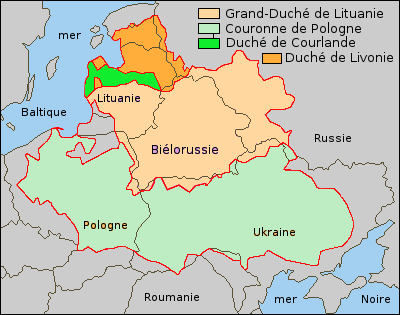
Les futurs Biélorusses, puis les Petits Russes, se retrouvent dans la structure du Grand-Duché de Lituanie, et après l'union avec la Pologne - dans le cadre du royaume polono-lituanien.
Ceux que l'on appellera les Grands Russes conservent le statut de pouvoir grand-ducal à Vladimir, puis à Moscou, et sont directement subordonnés à la Horde d'Or.
Ici commence une grave division dans le destin des Slaves de l'Est. Trois branches d'un même peuple (et non d'une ethnie !) se retrouvent dans des systèmes politiques différents.
Différence de destin et perte du statut d'État
Les Grands Russes conservent le pouvoir des Grands Ducs et l'identité orthodoxe, que les khans de la Horde d'Or, fidèles au principe de tolérance religieuse de Gengis Khan, n'avaient pas empiété.
Les Biélorusses et les Petits Russes se retrouvent dans un État européen catholique, ce qui place les orthodoxes dans des conditions d'infériorité. Ainsi, l'élite princière et militaire est progressivement intégrée à la gentry polonaise, et la population rurale reste dans la position dites des "schismatiques orientaux". La partie occidentale des Slaves orientaux perd son statut d'État, mais préserve farouchement la foi, la langue et la culture orthodoxes.
Et bien que les petits Russes et les Biélorusses fassent partie d'un seul et même peuple - Kiev (!) - ils sont privés du signe le plus important du peuple - le statut d'État. Cela rend leur position dans l'État polono-lituanien proche d'un groupe ethnique opprimé.
Plus tard, une partie des Slaves du sud-est passe sous la domination de l'Empire ottoman, et de l'État des Habsbourg (Empire autrichien). Cela brouille encore plus l'identité du peuple et le divise, le réduisant à nouveau au statut de groupe ethnique.
La politique de ces États, qui comprenaient la partie occidentale des Slaves orientaux, était différente selon les pays et les époques. Le Grand-Duché de Lituanie, avant l'union avec la Pologne catholique, était païen, et un certain nombre de princes étaient très favorables à l'orthodoxie. Par conséquent, les princes et boyards de Russie occidentale et la population rurale qui s'y trouvait n'étaient soumis à aucune pression et se sentaient comme dans leur propre État, où les Slaves orthodoxes constituaient la grande majorité de la population et une partie importante de l'élite. À un moment donné, la balance aurait pu pencher vers l'adoption de l'orthodoxie par la noblesse lituanienne. Ainsi, les Russes occidentaux auraient pu devenir le peuple axial de l'État balto-slave.
Après l'union avec la Pologne et un virage brutal vers le catholicisme, la situation a commencé à se détériorer progressivement. Les Russes ont perdu leur position dans l'élite, leur supériorité numérique et la liberté de religion. Ils sont devenus partie intégrante d'un peuple différent - polono-lituanien, avec une orientation différente - catholique et européenne. Au cours de cette période, l'uniatisme est apparu, c'est-à-dire des tentatives d'unir les orthodoxes aux catholiques, tout en maintenant le rite byzantin mais en reconnaissant la primauté du pape de Rome. Cela permettait aux Slaves orientaux du royaume polono-lituanien de s'intégrer plus complètement à l'État. La conversion directe au catholicisme était toutefois préférable à cette fin. Mais la grande majorité des ancêtres des petits Russes et des Biélorusses sont restés fidèles à l'orthodoxie, liant fermement leur identité religieuse et culturelle à celle-ci. En cela, ils sont restés fidèles au choix unique de tous les Slaves orientaux au moment du baptême de la Russie par le saint grand-duc Vladimir.
Cependant, l'orthodoxie dans l'ouest de la Russie, contrairement à la Russie moscovite, se trouvait dans des conditions différentes. La proximité des catholiques et leur politique agressive de prosélytisme ne pouvaient qu'influencer la religion orthodoxe, qui a progressivement absorbé les influences occidentales. En outre, à partir d'un certain moment, l'orthodoxie est devenue une partie de la culture paysanne, ayant absorbé de nombreux éléments folkloriques locaux. En général, l'identité religieuse des Grands Russes, d'une part, et des Petits Russes et des Biélorusses, d'autre part, étant restée dans son noyau, a commencé à différer quelque peu.
Dans tous les cas, les Petits Russes et les Biélorusses se sont retrouvés en dehors de leur État et, sous la domination d'autres souverains, sont devenus une minorité ethnique et religieuse, à moins, bien sûr, qu'ils ne choisissent de changer leur identité en faveur du catholicisme.
Les Grands Russes créent un empire et reconquièrent la Rus de Kiev à l'Ouest
Le destin des Grands Russes prend une forme différente. Alors que la Horde d'Or s'affaiblit, ils renforcent à nouveau leur indépendance et commencent à construire un État souverain - à partir du maintien du statut grand-ducal de Moscou, où la présidence des métropolitains de Kiev (c'est-à-dire le centre même de la religion) est transférée de Vladimir, qui l'avait acquise de Kiev. Ainsi, les Grands Russes ont commencé à construire la Rus moscovite, incluant, au fur et à mesure de son renforcement, de nouveaux groupes ethniques et des fragments du peuple de la Horde d'or.
Au final, les Grands Russes devinrent un Empire mondial à part entière.
À mesure qu'il se renforce, le royaume de Moscou commence à conquérir les territoires de la Rus de Kiev au détriment du royaume polono-lituanien. Ainsi, des groupes distincts de la partie occidentale des Slaves orientaux sont revenus dans un État russe à part entière. Ils ont conservé leurs langues et leurs anciens modèles culturels, ainsi que certaines caractéristiques acquises à l'époque de la vie "sous les catholiques", bien qu'ils aient généralement conservé l'orthodoxie et ont donc commencé à être perçus comme quelque peu différents des Grands Russes. Mais dans l'État moscovite, ils ont reçu un nouveau statut de groupes ethniques, qui pouvaient librement se joindre au peuple, ou conserver leurs propres caractéristiques. Les Grands Russes eux-mêmes étaient des communautés agraires, tandis que l'élite était qualitativement différente d'eux. Par conséquent, les Biélorusses et les Petits Russes ordinaires sont devenus la même population rurale que l'était la paysannerie des Grands Russes. Et la gentry (aristocratie militaire) est allée servir le tsar russe.
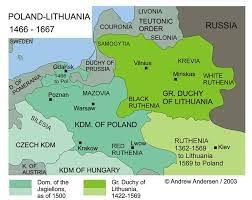
Un cas particulier était celui des communautés cosaques du sud de la Russie, qui préservaient le mode de vie des peuples nomades militaires de la steppe.
Lors des campagnes militaires vers les régions occidentales, la Rus moscovite commença à rassembler en un seul État tous les Slaves orientaux, restaurant ainsi, tant sur le plan territorial qu'ethnique, la Rus de Kiev, seulement complétée de manière significative par les terres orientales conquises par Moscou.
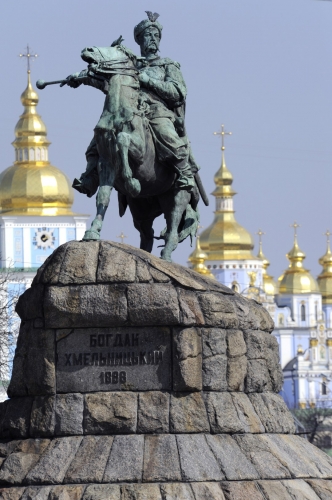
Libération de l'Ukraine : étapes
Au XVIIe siècle, le Cosaquie de Zaporozhie, sous la direction de l'hetman Bogdan Khmelnitsky, se révolte contre les Polonais et, lors de la Rada de Pereyaslavl (1654), décide de rejoindre le royaume moscovite.
En 1667, le tsar Alexei Mikhailovich conclut la trêve d'Andrusovo avec le Commonwealth polono-lituanien. La Russie reçoit l'Ukraine de la rive gauche. La "Paix éternelle" de 1686 attribue ces territoires à la Russie, ainsi que la russification de l'armée zaporizhienne. En outre, Moscou rachète Kiev, que les troupes russes tiennent depuis 1654.
Plus tard, pendant les guerres russo-turques, la Russie, qui a déjà le statut d'Empire, conquiert les vastes territoires de l'actuelle Ukraine du Sud et de la Crimée. Ces terres nouvellement acquises sont appelées Novorossiya. Chaque nouvelle guerre avec la Turquie renforce le contrôle territorial de la mer Noire par la Russie. Une partie importante de ces terres est colonisée par des paysans grand-russes provenant des régions centrales de la Russie.
En 1775, l'armée zaporizhienne située dans la région du Bas-Dniepr est liquidée. Une partie des cosaques part en Turquie, et l'autre est déplacée dans le Caucase du Nord, devenant la base de l'armée des cosaques du Kouban. Les anciennes terres militaires continuent d'être peuplées de paysans de la Petite Russie et de la Grande Russie. Les villes fondées par les tsars russes dans les nouveaux territoires : Mariupol, Yekaterinoslav (Dnepropetrovsk), Odessa, etc. sont peuplées par des représentants de différents groupes ethniques de l'Empire.
En 1793, lors du deuxième partage du Commonwealth polono-lituanien (État polonais), la Russie intègre à ses territoires l'Ukraine de la rive droite et la Podolie. Lors du troisième partage - en 1795 - la Volhynie. Seules la Galicie et la Rus (Ruthénie) subcarpatique restent en dehors de la Russie. Ainsi, la majorité de la branche sud-ouest des Slaves orientaux se retrouve dans un seul État, avec les Grands Russes et les Biélorusses, également inclus dans la Russie lors de la prise de la Lituanie, puis de la Pologne.
Dans le même temps, ni la Biélorussie ni l'Ukraine n'étaient des États au cours de ces périodes. Les principautés médiévales de la Russie occidentale n'ont pas pu maintenir leur indépendance et ont été subjuguées et démantelées par les Lituaniens, les Polonais et les Hongrois. Elles ont été préservées avec le statut d'un ethnos dans le contexte d'autres peuples. La Russie les a rendus à un État souverain slave oriental (russe au sens large du terme) avec une religion orthodoxe et de vastes territoires. Ils pouvaient rester des ethnies, ou se fondre dans le peuple uni de l'Empire.
Cela plaçait les Biélorusses et les Petits Russes devant un choix qui est resté et reste ouvert jusqu'à aujourd'hui. Certains pouvaient accepter l'identité panrusse (étatique, impériale) et fusionner avec elle, tandis que d'autres pouvaient choisir de préserver leur identité ethnique - y compris les dialectes linguistiques courants en Russie occidentale. C'est ce que faisaient généralement les communautés paysannes, même si elles avaient également un accès total aux vastes territoires de la Russie (dans la mesure où les paysans étaient libres dans l'État russe dans son ensemble, et où leur statut changeait à différentes époques). Quoi qu'il en soit, il y avait beaucoup de colons petits russes à la fois en Russie centrale et en Sibérie méridionale, qui à l'époque tsariste était appelée "Ukraine grise", où une partie importante de la population avait des racines petits russes.
Les territoires de Galicie, de Bucovine du Nord et de la Rus des Carpates sont restés le plus longtemps en dehors du contexte panrusse. Les deux premiers étaient jusqu'en 1918 inclus dans la partie autrichienne de l'Autriche-Hongrie (Cisleithanie). La Transcarpathie était la terre de la couronne hongroise (Transleithanie). Après la Première Guerre mondiale, la Galicie et la Volhynie, qui étaient russes depuis la fin du 18e siècle, ont fait partie de la Pologne redevenue un Etat indépendant.
La Bukovine du Nord a ensuite fait partie de la Roumanie, et la Transcarpathie est entrée dans le giron de l'Etat de Tchécoslovaquie.
Ces terres (à l'exception de la Transcarpathie) n'ont été réunies au reste de la Russie qu'avant la Grande Guerre patriotique, et la Transcarpathie - en 1945. Ensuite, en Russie même, il y avait un régime bolchévique. Par conséquent, les Ukrainiens occidentaux modernes ne connaissaient qu'une seule Russie - soviétique, dont l'attitude à l'égard de laquelle - en raison des caractéristiques totalitaires du régime bolchevique - était ambiguë, et parfois même directement négative.
Le nationalisme ukrainien, une construction artificielle
Passons maintenant à des époques plus modernes, lorsque la formation de nations politiques commence en Europe. Ce processus en Europe de l'Est, et encore plus en Russie, s'est déroulé avec un retard important, tout comme les réformes bourgeoises en général. La création de collectifs politiques dotés d'une identité fictive fondée sur la citoyenneté individuelle s'est déroulée beaucoup plus lentement qu'en Europe. En Russie, il y avait un Empire et un peuple, ainsi que de nombreux groupes ethniques qui préféraient ne pas s'intégrer pleinement au peuple et conserver leurs structures plus archaïques. Il en était ainsi non seulement avec les peuples de Sibérie ou du Nord, mais aussi avec ceux du Caucase, de l'Asie centrale, et même des régions occidentales habitées par des Slaves orientaux. Cependant, le mode de vie ethnique a été largement préservé par les communautés paysannes de la Grande Russie, qui constituaient la principale population de l'Empire.
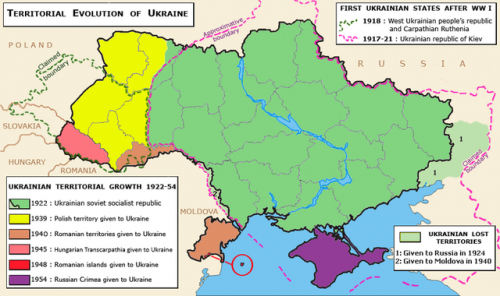
Compte tenu des contradictions politiques entre l'Empire russe et l'Europe occidentale, le processus de formation de nations artificielles est devenu un outil politique. Selon ce principe, les puissances occidentales, devenues elles-mêmes des nations, ont détruit leurs adversaires - la Turquie ottomane, l'Autriche-Hongrie et l'Empire russe. C'est ainsi que le nationalisme est né dans le contexte de la Russie. Mais ses diverses formes dans des contextes ethniques et territoriaux différents étaient qualitativement différentes. Ainsi, la Pologne a cherché à devenir indépendante en s'appuyant sur son histoire : après tout, autrefois, elle était non seulement indépendante de la Russie, mais elle était à son niveau, et l'a même surpassée, jusqu'à la prise de Moscou par les Polonais au temps des troubles. Le nationalisme polonais était basé sur une étape historique où les Polonais étaient un peuple à part entière - slave occidental et catholique - (strictement au sens ethno-sociologique). Le nationalisme des groupes ethniques turcs, beaucoup moins bien formé que le polonais, faisait appel à la Horde d'or et aux héros fabuleux des puissances des steppes.
Mais le nationalisme ukrainien qui a émergé à la fin du XIXe siècle était encore plus artificiel et sans fondement que les autres versions au sein de l'Empire russe. Il a été promu principalement par les Polonais, dans l'espoir d'opposer les Ukrainiens aux Grands Russes, d'obtenir un allié dans la lutte contre la Russie et, à long terme, de rétablir leur domination sur la Russie occidentale. Les Polonais ont pris une part active à la création d'une "langue ukrainienne" tout aussi artificielle, sursaturée de polonismes. Dans le même temps, en l'absence d'au moins un analogue de l'État politique des Slaves de l'Ouest et de l'Est dans l'histoire, la nation a été inventée de toutes pièces sur la base non pas de la culture réelle de la Petite Russie, mais d'inventions totalement ridicules.
Les autorités d'Autriche-Hongrie ont également contribué à la création du nationalisme ukrainien, en essayant de l'utiliser, d'une part, contre les Polonais en Galicie, et d'autre part, contre la Russie.
Le nationalisme ukrainien a commencé à prendre rapidement forme au moment de l'effondrement de l'Empire russe, mais il s'agissait des premiers pas, incomparables avec le nationalisme polonais. En un sens, "l'identité ukrainienne" n'était qu'un outil du nationalisme polonais dans sa lutte contre la Russie. Dans la confrontation géopolitique entre la Russie et l'Occident, ce nationalisme et, par conséquent, le projet de création d'une "nation ukrainienne" ont été instrumentalisés, entre autres, par l'Empire britannique pendant la guerre civile, lorsque Halford Mackinder, le fondateur de la géopolitique, était le haut-commissaire de l'Entente pour l'Ukraine.
La place de la "nation" dans le dogme bolchevique
La prise du pouvoir en Russie par les bolcheviks et l'expansion de leur pouvoir sur la quasi-totalité de ses territoires, y compris l'Ukraine, ont placé la question de la "nation" dans un nouveau contexte théorique.
Dans la théorie marxiste, l'ère des nations bourgeoises devait être remplacée par un système capitaliste unifié et une société civile mondiale correspondant à ses phases avancées. Cela créait les conditions de l'internationalisme. Mais contrairement aux libéraux, les marxistes croyaient qu'après le triomphe du mondialisme capitaliste, l'ère des révolutions prolétariennes devait venir, lorsque la classe ouvrière internationale renverserait le pouvoir également international du capital. Marx concevait le communisme comme la phase suivante après l'ère où la société civile deviendrait mondiale et où aucun groupe ethnique, peuple ou nation ne devrait subsister. C'est ce qui s'est passé en théorie.
En pratique, les bolcheviks ont pris le pouvoir dans un Empire précapitaliste, presque médiéval, où l'essentiel était le peuple russe (au sens ethno-sociologique), avec de nombreuses ethnies ayant une vision archaïque du monde et une religion profondément enracinée. Personne n'avait de nation. Et la modernisation et l'européanisation de l'élite impériale étaient superficielles et peu profondes. Les transformations capitalistes étaient également fragmentaires, et la grande majorité de la population était composée de paysans. Par conséquent, Marx a exclu la possibilité d'une révolution prolétarienne en Russie : elle n'est pas devenue suffisamment capitaliste, et en outre, le capitalisme n'a pas pleinement révélé son potentiel mondial. Mais les bolcheviks, malgré tout, ont pris le pouvoir et ont tenté de le conserver à tout prix. Cela les a obligés à opter pour des constructions théoriques extravagantes.
Les bolcheviks et la question ukrainienne
Dans un premier temps, les bolcheviks ont soutenu le nationalisme ukrainien, le considérant comme un allié naturel dans la lutte contre l'Empire, contre le "tsarisme". Cela était conforme à la partie du marxisme qui soutenait que toutes les sociétés doivent passer par la phase capitaliste et se former en nations pour ensuite les surmonter. Les Ukrainiens n'étaient ni une nation, ni une société capitaliste, ni un État, mais faisaient partie du peuple de l'Empire russe, conservant dans certains secteurs des caractéristiques culturelles ethniques. Par conséquent, les bolcheviks ont dû inventer l'Ukraine afin de l'insérer avec beaucoup d'exagération dans leur théorie du progrès socio-économique.
Après avoir pris le pouvoir, les bolcheviks ont radicalement changé leur attitude envers l'Ukraine. Désormais, la présence d'un État ukrainien allait à l'encontre des intérêts des bolcheviks. Ils ont donc annoncé que le capitalisme avait déjà été construit en Ukraine, que la nation ukrainienne avait été créée, qu'elle avait vécu assez longtemps et qu'elle était maintenant prête à entrer consciemment dans l'ère post-nationale de l'internationalisme prolétarien. Cependant, pendant un certain temps dans les années 1920 et 1930, le discours internationaliste s'est combiné à l'"ukrainisation" - l'imposition forcée de la langue et de la culture ukrainiennes à toute la population qui se trouvait dans le cadre de l'Ukraine soviétique. C'est ainsi qu'est né le territoire de l'Ukraine moderne, dans lequel l'histoire de l'Empire russe se mêle à l'arbitraire dogmatique des bolcheviks.
La RSS d'Ukraine et ses composantes
Lénine a réuni dans la République socialiste soviétique d'Ukraine
- le territoire de la Hétairie cosaque, qui a prêté serment d'allégeance au royaume russe en 1654 ;
- les régions de Kiev et de Tchernihiv, conquises aux Polonais par Alexei Mikhailovich en 1667, qui font partie de l'Hetmanat autonome (Petite Russie) au sein de la Russie ;
- la Nouvelle Russie (de Zaporozhye à Odessa), conquise sur l'Empire ottoman par Catherine la Grande ;
- L'Ukraine de la rive droite, intégrée à l'Empire russe par la même Catherine après les partages de la Pologne ;
- les terres primitivement russes (peuplées à la fois de Grands Russes et de Petits Russes) - Slobozhanshchina (Kharkov) et Donbass.
À la veille de la Grande Guerre patriotique, l'URSS a intégré la Volhynie et la Galicie, la Bucovine du Nord, la Bessarabie du Nord et la Bessarabie du Sud à l'Ukraine (ces dernières ont fait partie de l'Empire russe de 1812 jusqu'à son effondrement). En 1945, le territoire de la Rus subcarpathique y a également été ajouté, habité par une autre branche des Slaves orientaux - les Rusyns (Ruthènes).
Khrouchtchev y a ensuite ajouté la Crimée en 1954.
Puisque personne n'allait construire une nation à part entière dans l'Ukraine socialiste (selon l'idéologie des bolcheviks, elle appartenait au passé capitaliste - mais pas pour longtemps), toute la population était considérée comme un secteur standard d'un seul peuple soviétique. Les bolcheviks ont combattu sans merci le "nationalisme bourgeois".
16:03 Publié dans Actualité, Affaires européennes | Lien permanent | Commentaires (0) | Tags : alexandre douguine, russie, ukraine, histoire |  |
|  del.icio.us |
del.icio.us |  |
|  Digg |
Digg | ![]() Facebook
Facebook
dimanche, 13 mars 2022
Analyse du conflit en Ukraine
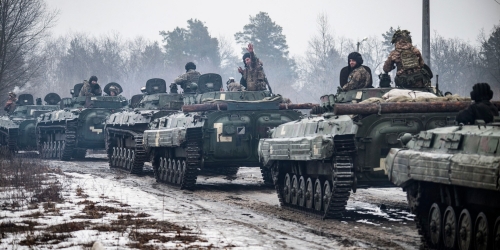
Analyse du conflit en Ukraine
Par Daniele Perra
Source: https://www.eurasia-rivista.com/analisi-del-conflitto-in-ucraina/
L'analyse suivante est divisée en trois sections distinctes et tente d'évaluer le conflit à travers les aspects du droit international, de la doctrine militaire et des données économiques. Plus précisément, tout en reconnaissant que, comme l'affirmait Karl Haushofer, la géopolitique n'est pas une science exacte, on tentera de démontrer que l'action russe, loin d'être "ratée" ou mal planifiée (comme elle est présentée dans un Occident toujours plus éloigné de la réalité), est le produit d'un calcul froid et rationnel , tenant compte des coûts et des avantages.
Sur le point de droit
Il est très difficile d'évaluer selon les critères d'un droit international essentiellement américano-centré ce qui apparaît comme l'agression militaire d'une puissance non occidentale. Toutefois, il convient de rappeler que la Russie, dans le passé (intervention en Syrie et annexion de la Crimée sous le concept de "Responsabilité de protéger"), a souvent essayé de se présenter comme un État agissant précisément en accord avec ce droit.
Tout d'abord, le droit international actuel peut être considéré comme une sorte de jus contra bellum à opposer au concept de justa causa belli. Cette approche théorique antimilitariste est, bien entendu, foulée aux pieds sans que cela ne choque particulièrement l'opinion publique lorsque la guerre est menée par la puissance hégémonique au niveau mondial (les États-Unis) ou l'avant-poste occidental au Levant (Israël). À cet égard, il faut se rappeler qu'il existe quelques exceptions à la violation de l'intégrité territoriale d'un État (théoriquement) souverain. Ceci est permis soit en cas d'autorisation du Conseil de sécurité des Nations Unies, soit en cas de légitime défense collective nécessaire. Cette autodéfense (cas de la Russie) doit répondre à deux critères: a) la nécessité ; b) la proportionnalité.
Il est clair que l'intervention russe est le produit inévitable du mépris par l'Occident à l'égard du droit plus que légitime à la sécurité de la deuxième puissance militaire du monde. Moscou ne peut tolérer une nouvelle expansion de l'OTAN vers l'Est, avec l'installation conséquente de systèmes de missiles en Ukraine capables de frapper le territoire russe en quelques minutes (la nucléarisation de l'espace géographique russe est le rêve des dirigeants militaires américains depuis la fin de la Seconde Guerre mondiale) ; Moscou ne peut tolérer l'installation de laboratoires biologiques militaires américains à ses frontières [1]. Il est tout aussi évident qu'une intervention militaire russe (pas plus de 70.000 soldats) peut (du moins en théorie) répondre au critère de proportionnalité.
Jusqu'à présent, nous restons dans le domaine très complexe de "l'attaque préventive" utilisée à plusieurs reprises par des homologues occidentaux (Israël en 1967, les Etats-Unis en 2003 en Irak sur la base de fausses preuves). Des sources au sein des services de Moscou font également référence à une éventuelle opération ukrainienne de grande envergure dans le Donbass (grâce à l'utilisation de miliciens formés en Pologne par l'OTAN) qui aurait été empêchée par une action russe. Au-delà, il existe deux autres cas d'intervention "légitime" : (a) la violation du principe de diligence raisonnable ; (b) l'usurpation.
La première s'applique en réponse aux attaques de groupes terroristes et de bandes armées (c'est-à-dire d'acteurs non étatiques) lorsque l'État ayant juridiction sur ces acteurs ne prend pas les mesures qui s'imposent (l'Ukraine face à des groupes paramilitaires, selon l'interprétation russe). La seconde s'applique lorsqu'un État (l'Ukraine) exerce des fonctions gouvernementales sur le territoire d'un autre État (les républiques populaires de Donetsk et de Lougansk reconnues comme indépendantes par Moscou à une époque précédant le conflit). A cela s'ajoute, et cela semble sans doute être l'argument le plus fort en faveur de Moscou, le non-respect des accords de Minsk et les actions militaires ukrainiennes répétées (aussi brutales soient-elles) pour rétablir l'ordre dans les régions orientales du pays, qui ne sont pas par hasard également les plus industrialisées et riches en ressources.
À la lumière de ce qui a été écrit jusqu'à présent, il est clair que toute justification de l'intervention militaire russe au niveau du droit international est pour le moins assez faible. En fait, il s'agit plutôt d'une tentative de surmonter le positivisme normatif (et l'hypocrisie substantielle) du droit international américano-centrique au nom d'une idée de nomos de la terre liée à un concept historico-spirituel de possession et d'appartenance à l'espace géographique.
Enfin, outre le fait que le droit international lui-même est souvent interprété (surtout par les grandes puissances) à leur guise, on ne peut oublier la suggestion que Iosif Staline a faite à Chiang Ching-kuo, délégué de la République de Chine auprès de l'URSS à la fin de la Seconde Guerre mondiale: "tous les traités sont du papier brouillon, ce qui compte, c'est la force" [2].
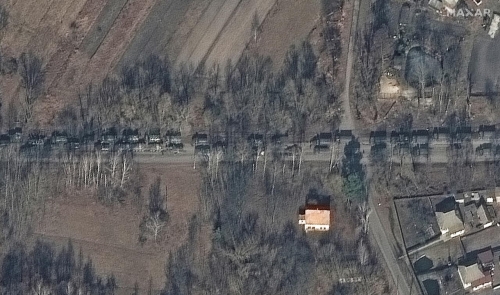
Aspects militaires
L'ancien militaire et analyste de la Fondation pour la défense des démocraties, Bill Roggio, a affirmé que la propagande occidentale a conduit à une incompréhension totale de la stratégie militaire russe en Ukraine (3). En particulier, Roggio souligne que l'Occident s'est concentré à tort sur la thèse selon laquelle l'échec de la prise de Kiev dans les premiers jours du conflit signifierait inévitablement l'échec de l'action russe.
Certes, Moscou pensait que l'entrée de ses troupes en territoire ukrainien aurait pu générer un effondrement immédiat du gouvernement de Kiev. Toutefois, cela ne signifie pas qu'une stratégie n'avait pas été prévue qui aurait pu ignorer cet événement. L'analyse des forces sur le terrain, dans ce cas, parle très clairement.
Depuis plusieurs jours, on parle d'une colonne de chars russes de plus de 60 km de long stationnée immobile à la périphérie de Kiev. Pourquoi n'est-elle pas attaquée par l'armée ukrainienne ? Pourquoi n'entre-t-elle pas dans Kiev ?
A la première question, l'ancien général Fabio Mini a répondu que ladite colonne n'est pas attaquée simplement parce que Moscou contrôle l'espace terrestre et aérien [4]. C'est pourquoi Kiev continue de réclamer une No Fly Zone qui n'arrivera jamais (à condition que le fanatisme des franges les plus extrémistes de l'atlantisme choisisse d'opter pour une guerre mondiale). L'entrée dans Kiev, avec le risque de finir écrasée dans une guérilla urbaine entre des factions ukrainiennes qui se combattent déjà (le meurtre d'un négociateur plus enclin au compromis en est la démonstration la plus évidente), n'est pas nécessaire, étant donné que la réunification entre les forces russes arrivant du nord et celles arrivant du sud couperait l'Ukraine en deux, rendant impossible le ravitaillement des troupes et milices opérant sur le front le plus chaud, celui de l'est. Empêcher l'entrée dans les centres urbains et contrôler les infrastructures énergétiques reste l'objectif principal de l'opération militaire russe. L'attaque de la centrale électrique de Zaporizhzhia a été mentionnée à plusieurs reprises. Eh bien, aucun analyste ne semble avoir remarqué que juste au-dessus de la centrale se trouve le canal qui, en 2014 (après l'annexion de la Crimée), a été fermé dans le but précis d'étrangler la péninsule de la mer Noire en lui refusant tout approvisionnement en eau. Le contrôle de cette infrastructure est crucial pour rétablir l'approvisionnement en eau de la région.
À ce stade, à la lumière du succès de propagande de l'ancien acteur Volodymyr Zelenskyi, dont les profils sur les plateformes sociales sont une apothéose de fake news et de déclarations de soutien de l'élite de l'atlantisme (von der Leyen, Biden, Draghi), du sionisme et des multinationales qui leur sont liées, on peut se poser une autre question : pourquoi Moscou s'attaque-t-il aux répétiteurs de télévision mais ne ferme-t-il pas Internet ?
C'est là que la question se complique. Comme l'a souligné l'ancien général de l'armée de l'air chinoise Qiao Liang, la guerre du XXIe siècle est avant tout une cyber-guerre indissociable de son appareil technologique. Les armées (celle de la Russie n'est pas différente) sont dépendantes des technologies de l'information. Ce facteur, selon Qiao, peut être à la fois un avantage et un inconvénient. La technologie de l'information, en effet, est basée sur les puces et la possibilité d'éviter la dépendance à ces instruments est désormais inexistante. Cela rend la protection des données de plus en plus problématique, et l'incapacité à surmonter les faiblesses potentielles découlant du haut niveau d'informatisation représente un risque permanent pour la durabilité des capacités et des actions militaires. C'est pourquoi le choc des puissances au XXIe siècle (et le conflit en Ukraine, avec son mélange de guerre traditionnelle et de cyberattaques, en est le principal indicateur et anticipateur) se déroulera principalement dans ce qu'on appelle le cyberespace.
En conclusion, l'action de Moscou (conçue pour ne pas être trop longue mais pas trop courte non plus) vise toujours à imposer ses propres conditions sur la table des négociations : neutralisation de l'Ukraine et reconnaissance de l'annexion de la Crimée et de l'indépendance des républiques dans l'est de l'Ukraine actuelle. Il ne faut pas oublier qu'il a fallu à la Wehrmacht plus d'un million d'hommes et cinq semaines pour vaincre la Pologne en 1939. À cette occasion, tant les Allemands que les Polonais se sont peu souciés de la population civile. Aujourd'hui, la Russie a choisi de limiter au maximum les attaques contre les centres de population et d'établir (en accord avec son homologue de Kiev) des corridors humanitaires qui, pour l'instant, ne semblent pas fonctionner au mieux en raison de l'obstructionnisme des groupes paramilitaires ukrainiens (le tristement célèbre Bataillon Azov surtout).
Si Moscou a une stratégie précise à long terme, il est tout aussi vrai que l'Occident en a une aussi. En fait, il n'est pas exclu que l'Occident se soit déjà préparé à l'éventualité d'un gouvernement ukrainien en exil. L'envoi d'armes et la facilitation du voyage vers ce pays d'Europe de l'Est de mercenaires et de terroristes internationaux peuvent être interprétés par la volonté précise de poursuivre la déstabilisation de la région si Moscou parvient à ses fins.

Le fait économique
Le fait que le Premier ministre israélien Naftali Bennett se soit rendu à Moscou le jour du Shabbat pour rechercher une médiation dans la crise a provoqué des remous. Outre le facteur géopolitique (montrer son amitié envers la Russie pourrait s'avérer utile en Syrie contre la présence iranienne), il ne faut pas négliger les profonds intérêts économiques et de stabilité interne que l'entité sioniste a dans le conflit. En fait, une grande partie de la population d'Israël, qui est entre autres l'un des principaux importateurs de blé ukrainien, est originaire des républiques qui faisaient autrefois partie de l'Union soviétique. C'est pourquoi une éventuelle prolongation de l'affrontement n'aiderait en rien l'équilibre entre les différentes communautés ex-soviétiques au sein de l'entité sioniste et une économie qui, malgré les mythes de la propagande mensongère, vit déjà largement de l'aide étrangère.
Lorsque l'on parle des données économiques, on ne peut bien sûr pas ignorer le sujet des sanctions. Puisqu'il a été question d'"actions sans précédent" de la part de l'Union européenne, il sera bon d'analyser les effets réels que ces actions peuvent avoir. À cet égard, on peut partir du fait que la Russie dispose d'un trésor de 630 milliards de dollars qui peut être dépensé pour supporter le fardeau des "actions sans précédent" que je viens de mentionner. Il convient également de rappeler que ces dernières années, peut-être en préparation de la guerre et de la réponse occidentale, la Russie a réduit son ratio dette/PIB (la dette publique russe représente 12,5 % du PIB, alors que la dette américaine est de 132,8 %) ; elle a réduit sa dette extérieure ; elle a accumulé de grandes quantités d'or (2300 tonnes), l'actif refuge qui prend de la valeur en même temps que les crises géopolitiques ; et elle a sciemment cédé des titres de la dette américaine. À cela s'ajoutent l'énorme disponibilité de matières premières et la relation étroite avec les deux plus grands pays fabricants du monde (la Chine et l'Inde, qui n'ont guère l'intention de suivre la vulgate des sanctions).
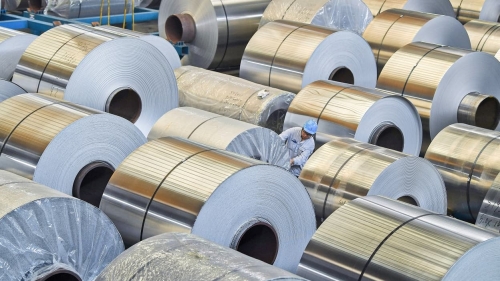
A l'abondance de matières premières s'ajoute la production avancée d'aluminium, de titane (le groupe russe Vsmpo-Avisma couvre largement les besoins en titane de Boeing et Airbus) et de palladium (50% de la production à l'échelle mondiale). Sans parler de la production de céréales, dont le blocus à l'exportation met déjà en crise le secteur italien des pâtes (un sujet pour une éventuelle étude approfondie sur la géopolitique de l'alimentation). Cela signifie que toute contre-sanction russe aurait des effets potentiellement dévastateurs sur l'économie européenne, déjà à genoux après deux années de gestion désastreuse de la crise de la pandémie. Tout cela pour le plus grand plaisir de Washington qui, en jetant les bases de ce conflit, avait vu une belle opportunité de se débarrasser du principal concurrent à l'hégémonie du dollar : l'euro. C'est pourquoi elle invite encore ses vassaux européens à approvisionner Kiev en avions de combat. L'objectif, en fait, est d'élargir le conflit à l'ensemble du continent.
NOTES
[1] Voir Le pentagone bio-armes, www.dylana.bg.
[2] Liu Xiaofeng, La nouvelle Chine et la fin du droit international américain, www.americanaffairsjournal.org.
[3] Poutine n'est pas fou et l'invasion russe n'est pas un échec. L'illusion de l'Occident sur cette guerre, www.fdd.org.
[4] Ukraine, l'ancien général Fabio Mini : "Regardez le ciel, pas la longue colonne de chars. Si c'est une attaque contre Kiev, elle viendra de là", www.ilfattoquotidiano.it.
14:10 Publié dans Actualité, Affaires européennes, Géopolitique | Lien permanent | Commentaires (0) | Tags : ukraine, politique internationale, géopolitique, europe, affaires européennes, russie |  |
|  del.icio.us |
del.icio.us |  |
|  Digg |
Digg | ![]() Facebook
Facebook
samedi, 12 mars 2022
Idéologie, propagande et conflit
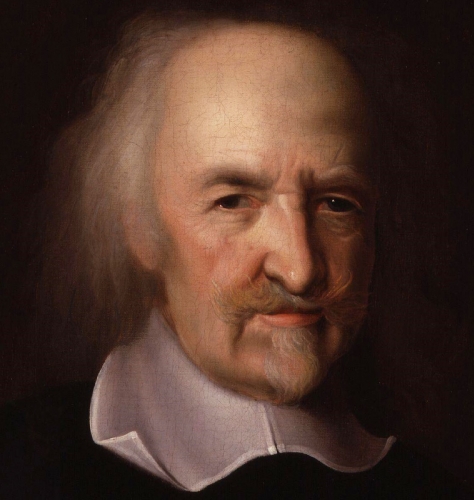
Idéologie, propagande et conflit
Par Daniele Perra
Source: https://www.eurasia-rivista.com/ideologia-propaganda-e-conflitto/
"Par conséquent, c'est un précepte ou une règle générale de la raison que tout homme doit s'efforcer d'obtenir la paix, dans la mesure où il a l'espoir de l'obtenir, et lorsqu'il ne peut l'obtenir, rechercher et utiliser toutes les aides et tous les avantages de la guerre. La première partie de cette règle contient la première loi fondamentale de la nature, qui est de rechercher la paix et de l'obtenir. La seconde, la somme de la loi de la nature, qui consiste à se défendre par tous les moyens possibles."
(Thomas Hobbes, Léviathan)
Dans son interprétation personnelle de l'œuvre la plus célèbre de Thomas Hobbes, Carl Schmitt souligne combien la figure du Léviathan évoque avant tout "un symbole mythique plein de significations cachées" [1]. Ce mythe, selon le grand juriste allemand, doit être compris avant tout comme une lutte séculaire d'images. En effet, dans le livre de Job, à côté de la figure du Léviathan (l'animal marin le plus fort et le plus indomptable), un autre animal est dépeint avec autant d'importance et de richesse de détails : le Béhémoth terrestre.
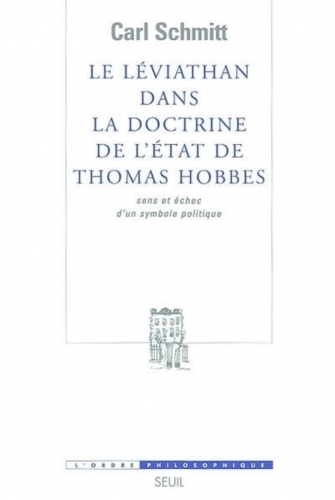
Après un rapide examen des interprétations chrétiennes de ce "mythe" (par exemple, selon l'Apocalypse de Jean, dans le célèbre Liber Floridus du 12e siècle, l'Antéchrist est représenté trônant sur Léviathan tandis qu'un démon chevauche Béhémoth), Schmitt se concentre sur l'exégèse juive, où les deux bêtes deviennent des symboles des puissances mondaines et païennes hostiles aux Juifs. "Le Léviathan", affirme Schmitt, "représente les bêtes sur mille montagnes (Psaumes 50:10), c'est-à-dire les peuples païens" [2]. Dans ce sens, l'histoire du monde est présentée comme une lutte des peuples païens les uns contre les autres. En particulier, la lutte se déroule entre le Léviathan - les puissances maritimes - et le Béhémoth - les puissances terrestres.
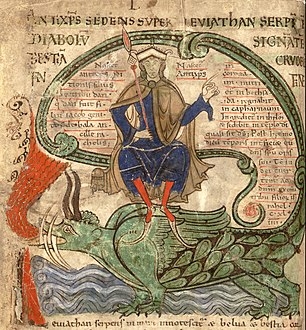
Béhémoth essaie de déchirer le Léviathan avec ses cornes, tandis que le Léviathan bouche la gueule et les narines de Béhémoth avec ses nageoires, le tuant. Ceci, poursuit Schmitt, est "une belle image de l'étranglement d'une puissance terrestre par un blocus naval" [3] (la référence, bien sûr, est au blocus naval avec lequel les Britanniques ont étranglé l'économie allemande pendant la Première Guerre mondiale). Dans tout cela, les Juifs regardent les peuples de la terre s'entretuer: "pour eux, ces massacres et égorgements mutuels sont légaux et casher. C'est pourquoi ils mangent la chair des peuples tués et en tirent la vie" [4].
Si l'interprétation schmittienne de ce thème biblique est appliquée aux événements actuels, il n'est pas particulièrement difficile d'identifier la Russie et l'Europe respectivement comme le Béhémoth et le Léviathan, et les États-Unis comme ceux qui "se nourrissent de la chair des tués et en vivent".
Dans deux articles publiés sur le site Eurasia, intitulés "L'ennemi de l'Europe" et "Comparaison des modèles géopolitiques", on a tenté d'expliquer comment les Etats-Unis, à travers deux guerres mondiales en l'espace de trente ans (ce n'est pas une coïncidence si l'historien Eric Hobsbawm a parlé d'une "deuxième guerre de trente ans" et Ernst Nolte d'une "guerre civile européenne"), ont réussi à évincer la Grande-Bretagne de son rôle de puissance mondiale, l'épuisant dans une lutte sans merci avec l'Allemagne. La "Grande Guerre" se prête particulièrement bien à ce schéma d'interprétation, puisque les États-Unis ne sont intervenus qu'après s'être transformés de pays débiteur en pays créditeur et après s'être assurés que les concurrents européens sortiraient du conflit, quelle que soit l'issue, dans des conditions économiques désastreuses. Et il ne semble pas déplacé d'utiliser le même schéma d'interprétation pour la crise actuelle en Europe de l'Est, étant donné que, aujourd'hui comme en 1914, les États-Unis sont le plus grand pays débiteur du monde.
Toutefois, une telle approche nécessite une réflexion approfondie. Nous avons choisi de commencer cette analyse par une citation de Thomas Hobbes pour la simple raison que le philosophe anglais reconnaît que l'État est avant tout un système de sécurité destiné à garantir la sécurité de son peuple et à éviter un retour à l'état de nature : la lutte de tous contre tous.
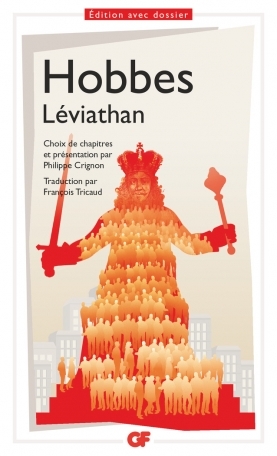 Hobbes déclare expressément qu'il est du devoir de tout homme de rechercher la paix. Mais lorsque cela ne peut être réalisé, il a le droit d'utiliser les avantages de la guerre. Le penseur de Malmesbury, à son crédit, dit aussi autre chose. Plus précisément, il affirme la nécessité du respect des pactes, car : "sans une telle garantie les pactes sont vains et ne sont que des paroles vides, et le droit de tous les hommes à toutes choses demeurant, on est toujours dans la condition de la guerre [...] Mais quand un pacte est fait, alors le rompre est injuste et la définition de l'injustice n'est rien d'autre que le non-respect du pacte" [5].
Hobbes déclare expressément qu'il est du devoir de tout homme de rechercher la paix. Mais lorsque cela ne peut être réalisé, il a le droit d'utiliser les avantages de la guerre. Le penseur de Malmesbury, à son crédit, dit aussi autre chose. Plus précisément, il affirme la nécessité du respect des pactes, car : "sans une telle garantie les pactes sont vains et ne sont que des paroles vides, et le droit de tous les hommes à toutes choses demeurant, on est toujours dans la condition de la guerre [...] Mais quand un pacte est fait, alors le rompre est injuste et la définition de l'injustice n'est rien d'autre que le non-respect du pacte" [5].
Et encore : "C'est pourquoi celui qui rompt l'alliance qu'il a contractée, et qui déclare par conséquent qu'il pense pouvoir le faire avec raison, ne peut être reçu dans une société qui se réunit pour la paix et la défense, si ce n'est par l'erreur de ceux qui le reçoivent, ni, une fois reçu, rester sans que ceux qui voient le danger de leur erreur" [6].
Quelle est l'utilité de ces citations face au conflit actuel en Ukraine ? Il est bon de procéder par ordre. En 1987, les États-Unis et l'Union soviétique ont signé le traité INF - Intermediate-range Nuclear Force Treaty, qui réglementait le placement de missiles balistiques à courte et moyenne portée sur le sol européen. À peu près au même moment, Washington a donné à Moscou des garanties que l'OTAN ne s'étendrait pas vers l'est.
En 2014, l'Ukraine était dirigée par Viktor Ianoukovitch, dont le principal défaut (plus que la corruption généralisée) était d'avoir opté pour une éventuelle entrée du pays dans l'Union économique eurasienne. En effet, dans sa vision, l'ex-république soviétique était censée être un pont entre l'est et l'ouest et non une rupture géographique entre la Russie et le reste de l'Europe. Dans une interview accordée à CNN quelques semaines après le coup d'État à Kiev, le spéculateur ("philanthrope") George Soros a ouvertement déclaré qu'il avait contribué à renverser le "régime pro-russe" afin de créer les conditions nécessaires au développement d'une démocratie de type occidental. Non seulement cela, mais le gouvernement ukrainien post-golpiste a été sélectionné selon une méthodologie d'entreprise. Plus précisément, la sélection a été effectuée par deux cabinets de "chasseurs de têtes", Pedersen & Partners et Korn Ferry, qui ont choisi 24 personnes sur une liste de 185 candidats parmi les étrangers vivant en Ukraine (sans surprise, le gouvernement post-golpiste comprenait un Américain, un Lituanien et un Géorgien) et les Ukrainiens vivant au Canada et aux États-Unis. L'ensemble du processus - et cela ne devrait pas être une surprise - a été financé par Soros lui-même par le biais de la fondation Renaissance et du réseau de conseil politique [7].
Non moins troublant a été le processus de sélection de l'actuel président ukrainien, que la propagande atlantiste, dans un élan d'humour et de blasphème, a comparé à Salvador Allende. Volodymir Zelens'kyi, acteur et comédien d'origine juive aux talents incontestables (étant donné sa capacité à hypnotiser un public occidental déjà enivré par deux années de rhétorique pandémique militariste), avant de se consacrer à la politique était sous contrat avec la télévision privée du puissant oligarque Igor Kolomoisky. Également d'origine juive, ancien président de la Communauté juive unie d'Ukraine et du Conseil européen des communautés juives, Kolomoisky est également connu pour avoir financé les groupes paramilitaires qui massacrent les civils dans le Donbass depuis huit ans et pour avoir placé des primes de 10.000 dollars sur les têtes des miliciens séparatistes (Il va sans dire que ce sont les mêmes groupes qui ont assassiné le journaliste italien Andy Rocchelli (photo, ci-dessous) dans le silence absolu de nos médias, bien plus intéressés à défendre les droits bafoués d'un étudiant égyptien en études de genre).
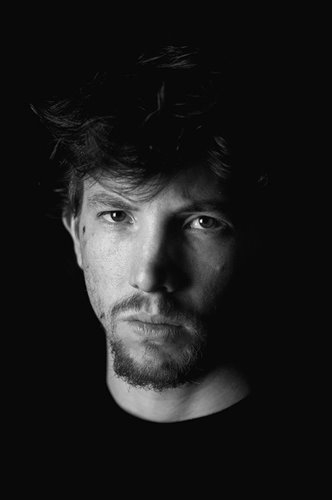
Biographie: https://www.worldpressphoto.org/andy-rocchelli
Or, pour en revenir à l'affirmation hobbesienne selon laquelle "la définition de l'injustice n'est rien d'autre que le non-respect de l'alliance", on ne peut manquer de rappeler qu'en plus d'avoir accepté une large expansion de l'OTAN vers l'Est, les États-Unis ont opté en 2018 (sous l'administration Trump) pour un retrait unilatéral du FNI, sanctionnant de fait la possibilité d'amener leurs missiles aux frontières de la Russie. Comment la deuxième puissance militaire du monde aurait-elle dû réagir à un tel acte ? Il est bon de commencer par les aspects diplomatiques.
Le 17 décembre 2021, le ministère des Affaires étrangères de la Fédération de Russie a publié le projet d'accord sur les garanties de sécurité soumis à l'OTAN et aux États-Unis. Il s'agissait notamment : a) d'exclure toute nouvelle expansion de l'OTAN vers l'est (y compris l'Ukraine) ; b) de ne pas déployer de troupes supplémentaires ; c) d'abandonner les activités militaires de l'OTAN en Ukraine, en Europe de l'Est, dans le Caucase et en Asie centrale ; d) de ne pas déployer de missiles à moyenne et courte portée dans des zones à partir desquelles d'autres territoires peuvent être touchés ; e) de s'engager à ne pas créer de conditions pouvant être perçues comme des menaces ; f) de créer une ligne directe pour les contacts d'urgence [8].
En outre, Moscou a expressément exigé le retrait de la déclaration de Bucarest dans laquelle l'OTAN a établi le principe de la "porte ouverte" en ce qui concerne l'adhésion de l'Ukraine et de la Géorgie à l'alliance. Naturellement, Washington et l'OTAN ont rejeté en bloc les demandes russes.
Il est essentiel de souligner ce fait, car la liberté invoquée aujourd'hui par le président ukrainien dans ses appels "sincères" n'est rien d'autre que la "liberté" de ses protecteurs de placer sur le sol ukrainien des missiles qui peuvent atteindre Moscou en quelques minutes, la détruisant avant même qu'elle ait une chance de réagir. Et la rhétorique belliqueuse utilisée par les gouvernements collaborationnistes européens (l'Italie en premier lieu) défend cette idée plutôt bizarre de liberté, sur la base de laquelle (nous le répétons) la deuxième puissance militaire du monde (ainsi que le principal fournisseur d'énergie de l'Europe) ne se voit pas garantir le droit à la sécurité.
Pour cette idée malsaine de la liberté (l'Italie est une fois de plus au premier rang, malgré la présence de plus de 70 têtes nucléaires américaines qui en font une cible directe en cas d'éventuelles représailles), il a été décidé d'envoyer des armes à Kiev (qui finiront dans les mains de groupes paramilitaires plus intéressés par la chasse à leurs concitoyens pro-russes que par la guerre contre les Russes) et de ne soumettre qu'un quart du système bancaire russe à des sanctions.
Au nom de cette idée de liberté, produit de la manipulation idéologico-géographique qui porte le nom d'Occident, le suicide économique et financier de l'Europe a été décidé (à la grande joie de Washington). Et toujours sur la base de cette idée dérangeante de la liberté, une "chasse aux sorcières" a été déclenchée, dans laquelle des artistes de renommée internationale sont priés d'abjurer leur patrie ; dans laquelle des cours sur Dostoïevski sont annulés, pour être ensuite rétablis lorsqu'un auteur ukrainien donne un avis "contradictoire" (comme si le par condicio pouvait s'appliquer à la littérature) ; dans laquelle toute voix en désaccord avec la vulgate officielle est réduite au silence et accusée de pro-poutinisme ; et dans laquelle les trente dernières années d'agression de l'OTAN (dont soixante-dix-huit jours de bombardement de la Serbie) et les huit années précédentes de guerre en Ukraine sont oubliées.
Il existe un terme pour tout cela : la guerre idéologique. La guerre idéologique est une guerre dans laquelle, pour reprendre la définition de Schmitt, l'ennemi est diabolisé et criminalisé. Par conséquent, elle devient digne d'être anéantie. La guerre idéologique ne connaît aucune limite et se fonde sur la subversion de la réalité. C'est la guerre imaginaire des pseudo-intellectuels, des journalistes et des analystes géopolitiques en proie à une surexcitation guerrière. C'est la guerre dans laquelle de faux mythes sont créés : la résistance héroïque des soldats ukrainiens sur l'île aux Serpents (qui se sont rendus sans tirer un coup de feu), le fantôme de Kiev abattant six avions de chasse russes (qui n'ont jamais existé), la résistance ukrainienne retournant les panneaux de signalisation pour confondre l'avancée russe (à l'ère de la guerre technologique). Cette guerre imaginaire est celle dans laquelle la Russie est décrite comme un pays isolé alors qu'en réalité elle renforce sa coopération avec la Chine et le Pakistan (deux puissances nucléaires) et dans laquelle l'UE et l'Anglosphère sont présentées comme le "monde entier".
NOTES
[1] C. Schmitt, Sul Leviatano, Il Mulino, Bologna 2011, p. 39.
[2] Ibid, p. 45.
[3] Ibid.
[4] Ibid.
[5] T. Hobbes, Leviatano, BUR, Milan 2011, p. 149.
[6] Ibidem, p. 155.
[7] Se Soros e la finanza scelgono il governo dell’Ucraina, www.ilsole24ore.com.
[8] Russie : les garanties de sécurité demandées à l'OTAN sont révélées, www.sicurezzainternazionale.luiss.it.
16:00 Publié dans Actualité, Philosophie, Théorie politique | Lien permanent | Commentaires (0) | Tags : idéologie, propagande, conflit, thomas hobbes, carl schmitt, actualité, théorie politique, ukraine, europe, affaires européennes, politologie, sciences politiques, philosophie, philosophie politique |  |
|  del.icio.us |
del.icio.us |  |
|  Digg |
Digg | ![]() Facebook
Facebook
Opération militaire en Ukraine : Analyse géopolitique
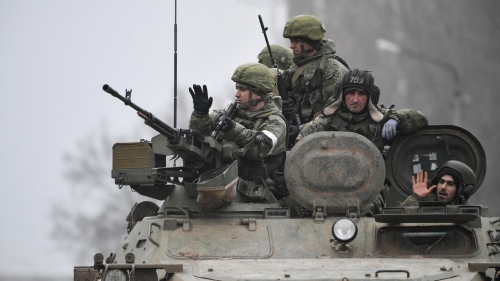
Opération militaire en Ukraine : Analyse géopolitique
En toute exclusivité: la perspective russe selon Alexandre Douguine
Alexandre Douguine
Source: https://katehon.com/en/article/military-operation-ukraine-geopolitical-analysis?fbclid=IwAR3Y3lIY5eabLUPz3tvclSDLIcGNl6PFCv0d4vj71c0Avnjof-Ojj7AzSBM
La question ukrainienne à l'origine de la géopolitique
La place de l'Ukraine dans la confrontation géopolitique entre la Terre et la Mer a déjà fait l'objet de nombreux écrits et de descriptions détaillées. Il est d'ailleurs symbolique que le fondateur de la géopolitique, Halford J. Mackinder, ait été le haut commissaire de l'Entente pour l'Ukraine pendant la guerre civile en Russie. Et à cette époque-là, dans le gouvernement blanc de Wrangel, le fondateur de l'eurasisme, le géographe Piotr Savitsky, qui fut le premier, dans le journalisme de langue russe, à mentionner lui-même le terme "géopolitique" et à exposer les points principaux de cette méthodologie, travaillait comme assistant du ministre des Affaires étrangères Peter Struve.
La géopolitique : la guerre continuelle entre la terre et la mer
Mackinder a formulé la théorie de la grande guerre des continents, l'opposition entre la civilisation de la Mer (l'Occident en général, l'Empire britannique plus spécifiquement) et la civilisation de la Terre (Heartland, Russie-Eurasie) quelques années plus tôt, en 1904, dans son célèbre ouvrage The Geographic Pivot of History. Terre (Rome, Sparte) et Mer (Carthage, Athènes) représentent deux civilisations antagonistes, opposées en tout - traditionalisme et modernité, spiritualité et matérialisme, esprit militaire et esprit commercial. Le conflit qui les oppose est une constante de l'histoire du monde.
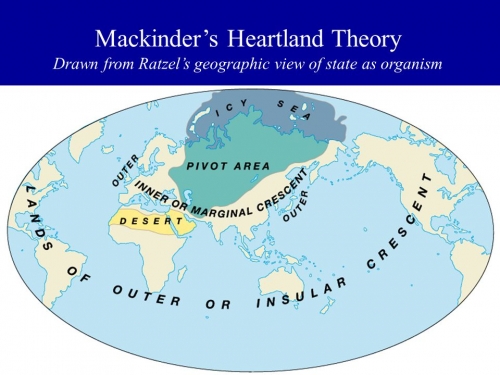
L'Eurasie, théâtre d'affrontements géopolitiques
Au cours des derniers siècles, lorsque le Grand Jeu, la confrontation entre les empires britannique et russe, battait son plein, la grande guerre continentale s'inscrivait dans l'espace de l'Eurasie. Dans cet espace, le "Heartland", c'était la Russie. Et la "civilisation de la mer" était portée par l'Angleterre. L'Angleterre tentait d'enserrer l'Eurasie de l'extérieur, depuis les océans. La Russie se défendait de l'intérieur, en essayant de briser le blocus.
La principale bande territoriale où se multipliaient les tensions se nommait alors, dans le langage spécial de la géopolitique mackindérienne, le Rimland, la "zone côtière". Elle s'étendait de l'Europe occidentale à l'Asie du Sud-Est, comprenait l'Inde et la Chine, en passant par le Moyen-Orient et l'Asie centrale.
L'objectif de la Mer était de subjuguer le Rimland. L'objectif de la Terre était de briser cette influence et de déserrer l'anneau de l'anaconda thalassocratique qu'il fallait rétrécir. C'est la raison de l'avancée de la Russie en Asie centrale et en Extrême-Orient.
D'où la formule principale de la géopolitique: "Qui contrôle l'Europe de l'Est contrôle le Heartland. Qui contrôle le Heartland, contrôle le monde". Telle est la théorie.
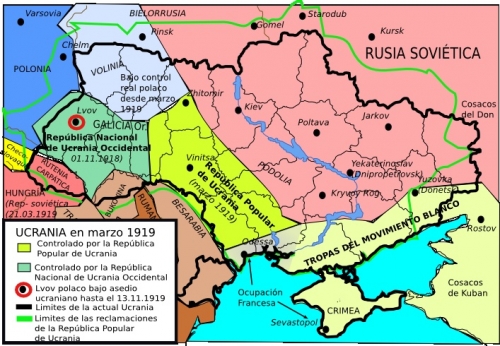
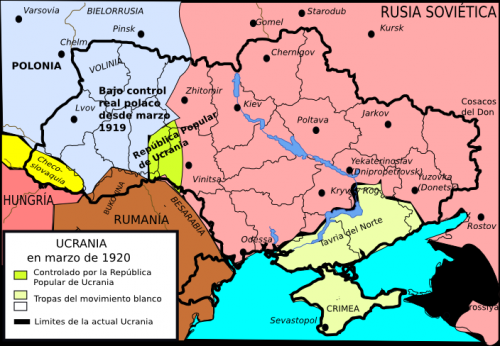
Le démembrement de la Grande Russie
De par sa position de Haut Commissaire de l'Entente, Mackinder tenta de mettre la théorie en pratique. La guerre civile russe a donné à la civilisation de la mer une nouvelle chance de repousser les frontières du Rimland vers l'est, aux dépens des territoires qui quittaient alors la sphère de la puissance russe - la Finlande, la Pologne et, surtout, l'Ukraine.
Mackinder (comme Savitsky) avait compris que la victoire des bolcheviks conduirait inévitablement à une confrontation avec l'Occident et à une tentative de recréer l'Empire russe sous une nouvelle forme (et c'est exactement ce qui s'est passé). Et face à cette perspective, Mackinder a exigé que le gouvernement britannique soit plus actif dans l'aide aux Blancs [1], il a tenté de convaincre les dirigeants anglais de la nécessité de soutenir l'indépendance de l'Ukraine. Il a également élaboré un plan visant à séparer de la Russie la grande région du Caucase méridional, la Biélorussie, l'Asie centrale, ainsi que la Sibérie orientale et même un certain nombre de territoires du sud de la Russie. Plus tard, en 1991, l'effondrement de l'URSS permet, dans une large mesure, de réactiver le plan de Mackinder.
L'Ukraine et le cordon sanitaire
L'Ukraine jouait un rôle majeur dans le plan géopolitique de Mackinder. Ce territoire, avec la Pologne et les pays d'Europe de l'Est, faisait partie du "cordon sanitaire", une zone stratégique qui devait être sous le contrôle direct de l'Angleterre et de la France (les alliés de l'Entente à l'époque) et empêcher tout rapprochement entre la Russie et l'Allemagne. Retenue par un "cordon sanitaire", la Russie-Eurasie ne pouvait pas devenir un Empire à part entière. Sans l'Ukraine, la Russie n'est pas un Empire. Et de plus, l'Ukraine, rendue hostile à la Russie et placée sous le contrôle direct des Anglo-Saxons, couperait la Russie de l'Europe continentale, où l'Allemagne, à son tour, était un Heartland, mais pas un Heartland mondial (comme la Russie), mais local, européen. Le conflit de l'Angleterre avec l'Allemagne (aussi avec l'Autriche) était une constante de la géopolitique européenne.
En conséquence, le projet d'une Ukraine indépendante était initialement dirigé contre la Russie et était supervisé par les Anglo-Saxons.
Les bolcheviks créent et démantèlent simultanément l'Ukraine
Nous savons que pendant la guerre civile, les Blancs ont adhéré à une politique de restauration d'un Empire uni et indivisible. En même temps, ils dépendaient du soutien de l'Entente, qui leur imposait certaines conditions. Quoi qu'il en soit, le gouvernement britannique, n'étant pas d'accord avec Mackinder sur la nécessité d'un soutien fort aux Blancs en échange de leur accord à la sécession de l'Ukraine, les Blancs ont perdu la guerre. Dans cette configuration, le sujet a donc été écarté de l'ordre du jour.
Les bolcheviks, quant à eux, ont d'abord soutenu l'Ukraine et encouragé activement les cercles nationalistes en pensant qu'ils s'étaient orientés contre le "tsarisme", mais ils ont ensuite opté pour une politique centraliste, voyant que l'Ukraine n'allait pas accepter le pouvoir bolchevique sans se plaindre et cherchait à céder aux Anglo-Saxons (ce qui signifiait alors le "capitalisme mondial"). Par conséquent, comme Mackinder l'avait prévu, Lénine a commencé la saisie directe de l'Ukraine, qui n'avait pas eu, dans son passé, une histoire d'État indépendant et était une proie relativement facile pour les Rouges. Les Rouges n'ont pas réussi à conquérir la Pologne par le même stratagème. Mais le territoire de la Biélorussie, qui était revendiqué par la Pologne de Piłsudski, est resté aux mains des Rouges.
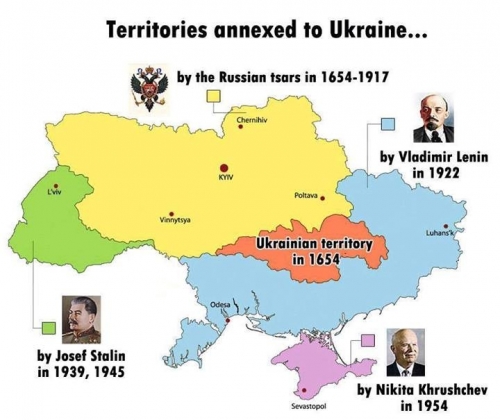
Ensuite, déjà sous l'autorité des bolcheviks en 1922, Lénine a donné à la République socialiste soviétique d'Ukraine les vastes territoires qui avaient toujours fait partie de l'Empire russe - Slobozhanshchina, Donbass, Novorossiya, ainsi que de vastes zones au nord (oblast de Tchernigov) et à l'ouest (Petite Russie proprement dite). La Galicie est restée sous la tutelle de la Pologne, la Bucovine faisait partie de la Roumanie. La Crimée appartenait à la RSFSR.
Mais cet arrangement territorial de l'Ukraine n'impliquait pas véritablement la création d'un État. Le pouvoir bolchevique s'étendait à tous les territoires de l'URSS et, dans l'esprit de l'idéologie internationaliste, il ne pouvait être question d'un statut d'État pour les différentes républiques. Il s'agissait presque d'une division purement administrative dans le cadre d'un pouvoir solidement unifié. C'est exactement ce que Mackinder avait craint.
Les bolcheviks ont à la fois créé l'Ukraine et l'ont abolie (en tant qu'État indépendant).
L'Ukraine dans l'URSS après la Grande Guerre patriotique
La Galicie, la Volhynie et la Bukovine ont été annexées à l'Ukraine juste avant la Grande Guerre patriotique et la Transcarpathie - juste après la guerre. Mais à ce moment-là, la Russie-Eurasie sous la forme de l'URSS s'est déplacée de manière significative vers l'ouest, déplaçant la frontière du pays au détriment du Rimland, et établissant son contrôle sur l'Europe de l'Est, qui était toute entière sous le pouvoir de Moscou. L'URSS a ainsi réduit à néant et totalement aboli le "cordon sanitaire" de Mackinder et de Lord Curzon, s'installant directement en Europe continentale et s'emparant, en fait, des territoires de l'ancienne Prusse/Brandebourg (RDA).
Dans une telle position - profondément à l'arrière de ce rimland européen de l'Eurasie et donc dans le Heartland eurasien - l'Ukraine a existé jusqu'en 1991. Dans le même temps, pour des raisons de convenance purement administrative dans les limites d'un État absolument unitaire, Khrouchtchev a transféré en 1954 la Crimée à Kiev. Du point de vue géopolitique, cependant, cela ne signifiait rien, car toutes les frontières entre les sujets de l'URSS, les républiques fédératives, étaient conditionnelles et ne signifiaient rien du tout dans la pratique.
L'atlantisme et le monde bipolaire
Pendant la guerre froide, l'Occident est revenu à sa pratique particulière de la géopolitique. C'est ainsi qu'en 1949, suivant les modèles mise au point par Mackinder, l'OTAN (l'Organisation du Traité de l'Atlantique Nord) a été créée. Le terme "Atlantique" ayant été introduit dans le sigle de l'organisation militaire, le vocable "atlantisme" devient synonyme de "civilisation de la mer", de thalassocratie, dans le sens exact où Mackinder l'entendait. L'"atlantisme", c'est l'Occident et ses alliés, le monde capitaliste avec un noyau dur anglo-saxon, dont le centre, au XXe siècle, s'est progressivement déplacé de Londres à Washington, de l'Angleterre aux États-Unis.
La carte dessinée par Mackinder correspondait parfaitement à l'équilibre des forces dans la guerre froide, et les deux camps - le communiste et le capitaliste - étaient strictement alignés sur les critères attribués à la Terre et à la Mer. Le bloc de l'Est était la Terre, avec l'URSS en son centre, le Heartland. Le bloc occidental était la Mer, centrée sur l'Atlantique (les Anglo-Saxons), mais comprenait les colonies stratégiques d'après-guerre des États-Unis - les pays d'Europe, le Japon et d'autres États du tiers-monde qui proclamaient leur allégeance au capitalisme. Ils étaient disposés en ordre dispersé en Asie, en Afrique et en Amérique latine, qui constituaient la carte géopolitique de la confrontation mondiale. Terre et Mer s'affrontaient rarement directement (comme lors de la crise des missiles de Cuba), et agissaient généralement par le biais de leurs mandataires, les régimes pro-soviétiques ou pro-américains. Et si la Terre était directement impliquée dans un conflit - comme en Tchécoslovaquie, en Afghanistan, etc., alors la Mer s'y opposait par le biais de mandataires, de "proxies", de groupes et de mouvements antisoviétiques sans intervenir directement. Et quand la Mer intervenait ouvertement - comme en Corée et au Vietnam - la Terre aidait indirectement, avec des conseillers, la diplomatie, l'économie, etc.
Le problème du Rimland
Pendant la guerre froide, le problème du Rimland est redevenu extrêmement pertinent. Ainsi, le géopolitologue américain Nicholas Spykman, révisant les théories de Mackinder, arrive à la conclusion que c'est le Rimland qui est la principale zone de confrontation. Il formule la loi de la géopolitique comme suit : "Celui qui contrôle le Rimland contrôle le monde". Mais il ne s'agit pas d'une nouvelle géopolitique, mais d'une réinterprétation - mineure - du poids des zones principales dans la théorie de Mackinder. D'autant plus que Mackinder lui-même a commencé par énoncer une théorie sur "l'Europe de l'Est", c'est-à-dire sur ce qui deviendra le "cordon sanitaire", et que celui-ci appartient au Rimland.
Quoi qu'il en soit, la guerre froide, d'un point de vue géopolitique, était une bataille pour le Rimland. Moscou a tenté d'étendre son influence - par le biais de partis et de mouvements de gauche - en Europe, au Moyen-Orient, en Asie, en Afrique et en Amérique latine. À une certaine époque, la Chine maoïste faisait également partie d'un camp socialiste unique, c'est-à-dire du Heartland eurasien.
L'attaque de l'Atlantisme
Lorsque l'URSS a commencé à s'affaiblir, les géopoliticiens atlantistes (Z. Brzezinski, R. Gilpin, etc.) ont commencé à penser et à agir de manière plus avant-gardiste. Outre le modèle bipolaire et le déplacement partiel de l'équilibre à la périphérie du monde et le long des contours de l'Eurasie, ils ont commencé à élaborer des concepts plus audacieux, évoquant un monde unipolaire. Ainsi, les idées de Mackinder ont retrouvé leur fraîcheur et leur pertinence. Pour obtenir la victoire décisive et finale de la civilisation de la mer, il fallait briser le bloc de Varsovie, puis de préférence l'URSS, et enfin ce qu'il en restait. En d'autres termes, faire progresser de manière significative le Rimland dans les profondeurs de la terre, en le bridant et en bloquant l'accès aux "mers chaudes", vers lesquelles la Russie tentait constamment de se porter.
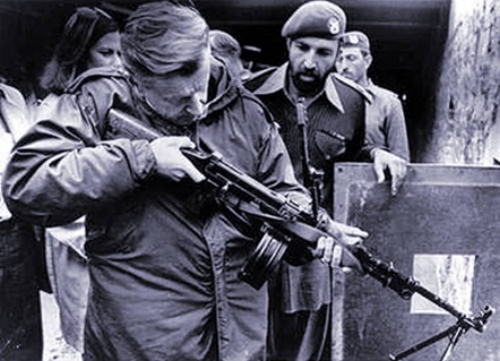
L'un des géopoliticiens atlantistes les plus constants était Zbigniew Brzezinski. À l'époque bipolaire, il soutenait farouchement les forces antisoviétiques en Afghanistan, jusqu'à et y compris Al-Qaïda. Au début des années 80, Brzezinski et Kissinger se sont efforcés de rompre définitivement les derniers liens que la Chine entretenait encore avec l'URSS, en cherchant à l'inclure dans l'économie mondiale et à l'intégrer progressivement dans la civilisation de la mer.
Lorsque les processus destructeurs de l'URSS ont commencé à agir, les atlantistes ont augmenté la pression sur l'Europe de l'Est, provoquant, fomentant et soutenant par tous les moyens possibles des sentiments artificiellement antisoviétiques/russophobes. D'un point de vue géopolitique, le soviétique et le russe coïncidaient à l'époque.
Avec Gorbatchev, l'effondrement rapide du camp socialiste a commencé. La Terre reculait, la Mer avançait. Nous ne devons donc pas être surpris que l'expansion de l'OTAN vers l'Est ait commencé et se soit parachevé. Cette expansion était à l'origine inscrite dans la théorie géopolitique de l'atlantisme. On ne pouvait rien attendre d'autre de la politique atlantiste.
La création de l'anti-Russie
Lorsque l'on a assisté à l'effondrement de l'URSS, les projets de Mackinder visant à démembrer la Russie-Eurasie, redevenaient toujours plus pertinents. Les frontières conditionnelles des républiques au sein d'un État unitaire, entièrement et étroitement contrôlé par le parti communiste, se sont soudainement transformées en frontières d'États-nations souverains. Tous les États post-soviétiques ont été créés selon les moules atlantistes. Ces entités n'ont d'autre sens que d'être anti-russes. L'une de ces "Anti-Russie" était la Fédération de Russie elle-même. Mais parce que la Fédération de Russie occupait le territoire du Heartland, même si elle s'est considérablement réduite, elle représente toujours la Terre ennemie aux yeux des géopoliticiens atlantistes, c'est-à-dire de l'ennemi thalassocratique. Et pour achever l'ennemi, il a fallu pousser l'OTAN plus loin vers l'Eurasie, et aussi tenter de démembrer la Russie elle-même (la première campagne de Tchétchénie, la vague des séparatismes internes à la Fédération de Russie, etc.)
La Russie ne pourra jamais se relancer sans l'Ukraine.
Tous ces processus, Brzezinski les a compris et a contribué à les mettre en pratique (comme Mackinder l'avait fait auparavant). Dans son célèbre livre Le grand échiquier, Brzezinski parle ouvertement de la nécessité de démembrer davantage la Russie, de renforcer le "cordon sanitaire", etc. Plus important encore, Brzezinski comprend le rôle de l'Ukraine dans cette question. Brzezinski dit à son propos que la chose la plus importante est :
- d'arracher irrévocablement l'Ukraine, alors hésitante, à la Russie,
- d'en faire un avant-poste de l'Atlantisme et
- d'imposer à son peuple le nationalisme russophobe comme idéologie principale.
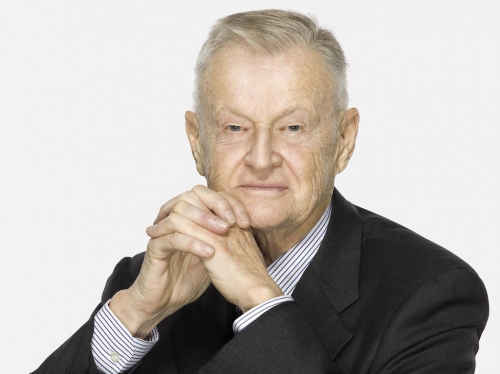
Sans l'Ukraine, la Russie ne sera jamais en mesure de devenir une puissance souveraine à part entière, un Empire, un pôle indépendant du monde multipolaire. Ainsi, le sort de l'unipolarité et du globalisme (pour Brzezinski, c'est presque la même chose), dépend de la capacité de l'Occident à mettre en œuvre la séparation de l'Ukraine d'avec la Fédération de Russie. Après tout, si la Russie et l'Ukraine s'unissent - d'une manière ou d'une autre, l'unipolarité s'effondrera et la carte géopolitique changera à nouveau de manière irréversible.
La bataille pour l'Ukraine et contre la Russie est une constante historique dans la stratégie géopolitique de l'Occident. Cela explique tout, de la déclaration d'indépendance à la révolution orange Iouchtchenko-Timochenko, en passant par le Maïdan et huit années de préparation intensifiée par Kiev, sous la houlette des instructeurs atlantistes, aux opérations militaires visant à s'emparer du Donbass et de la Crimée.
La naissance de la géopolitique en Russie : L'Eurasie comme sujet
Depuis le début des années 1990 en Russie, juste au moment de l'effondrement de l'URSS et de l'arrivée au pouvoir des agents atlantistes (l'ancien ministre des Affaires étrangères Andrey Kozyrev a directement admis qu'il était un atlantiste), contrairement à l'attitude politique et idéologique de base envers le libéralisme et l'occidentalisme, la Russie - principalement dans les cercles militaires (en particulier, à l'Académie d'état-major militaire) - a commencé à développer sa propre école géopolitique. Elle était basée sur l'eurasisme, car ce sont les premiers Eurasiens russes qui, dans les années 1920, ont décrit la carte géopolitique de la confrontation entre la Russie et l'Occident, en dehors de l'idéologie communiste (les Eurasiens étaient des Blancs). Leurs idées sont les plus adaptées à la situation actuelle, face à l'offensive de l'OTAN à l'Est et aux propres politiques incompréhensibles (par endroits perfides) de Moscou. Les militaires ne pouvaient pas prendre pour amis ceux dont ils enregistraient toutes les heures les intentions et les actions agressives contre la Russie. Mais le gouvernement libéral est resté sourd à la géopolitique. Néanmoins, l'école géopolitique ne pouvait être détruite. Tout le monde était occupé par les processus fascinants de la corruption totale.
La géopolitique expliquait parfaitement ce qui se passait en Europe de l'Est et dans l'espace post-soviétique dans les années 1990 (l'écrasement par la mer de la terre, l'expansion des "cordons sanitaires" et du territoire du Rimland), mais cette compréhension restait à l'intérieur des cercles militaires, qui n'appréciaient guère la politique officielle, mais qui n'avaient à l'époque aucun poids ni aucune influence politique. Les atlantistes, en revanche, ont méthodiquement poursuivi leur cause, nourrissant et renforçant l'anti-Russie, à la fois à l'extérieur et, en partie, au sein même de la Fédération de Russie.
Poutine change le vecteur géopolitique
Tout a changé lorsque Poutine est arrivé au pouvoir. Il a commencé par restaurer la souveraineté de la Russie, à se débarrasser des agents atlantistes qui étaient à la tête du pays, à concentrer et à développer son potentiel militaire, et à renforcer l'unité de la Russie. La deuxième campagne de Tchétchénie, l'introduction des districts fédéraux et les changements dans la législation ont renforcé l'intégrité territoriale et la verticalité du pouvoir. Poutine a progressivement commencé à s'opposer de plus en plus à l'Occident et à mener une politique d'intégration eurasienne dans l'espace post-soviétique. En bref, Poutine a rendu à la Russie le statut de sujet de la géopolitique, et a anénati son état de déréliction, qui faisait d'elle un objet de la géopolitique globale, atlantiste. Il a rejoint de manière consciente et responsable la grande guerre continentale au nom de la Terre.
Cela n'a pas échappé à l'Occident et a entraîné une pression accrue sur les pays post-soviétiques pour qu'ils adoptent une position de plus en plus anti-russe, pour qu'ils s'intègrent plus rapidement aux structures occidentales. Cela a touché tous les pays post-soviétiques, mais surtout l'Ukraine. Il dépendait de l'Ukraine de déterminer si la Russie serait capable ou non de restaurer pleinement sa souveraineté géopolitique. Selon les lois de la géopolitique, sans l'Ukraine, la Russie n'est pas un Empire, pas un pôle, pas une civilisation, mais avec l'Ukraine, elle est un Empire, un pôle et une civilisation. Et cette formule peut être lue depuis deux positions - celle des yeux de la Mer et celle des yeux de la Terre. De toute évidence, Poutine l'a lue avec les yeux de la Terre, car il était et reste le dirigeant du Heartland, conscient et puissant.
Le nationalisme ukrainien comme outil géopolitique de l'Atlantisme
Dans le même temps, l'initiateur des cataclysmes en Ukraine était l'Occident atlantiste. Même les politiques neutres, modérément pro-occidentales - multi-vectorielles - de Kuchma ou de Yanukovich ne convenaient pas aux atlantistes. Ceux-ci ont fait pression sur Kiev pour que l'Ukraine se transforme le plus rapidement possible en une anti-Russie agressive et radicale, attaquante. Dans cette logique, Kiev devait attaquer.
Cela explique la Révolution orange, le Maïdan et les raisons de l'opération militaire russe actuelle.

L'Occident se battait pour l'Ukraine. Il faut tenir compte du fait que l'Ukraine n'a pas du tout d'histoire en tant qu'Etat inscrit dans la durée, et que les territoires dans lesquels elle se trouve sont historiquement accidentels et sont le résultat de la créativité administrative des bolcheviks. Lorsque Poutine a justifié l'opération militaire en Ukraine en disant que "Lénine a créé l'Ukraine", il avait parfaitement raison. Cependant, Lénine n'a pas créé l'Ukraine en tant que telle, mais une des zones de contrôle bolchevique parmi d'autres. La nationalité, selon la théorie bolchevique, devait être complètement dépassée dans une société internationale socialiste. Lénine a créé l'Ukraine et l'a en fait immédiatement abolie.
Par conséquent, après 1991, il y avait sur le territoire de l'Ukraine des peuples et des territoires ayant chacun une histoire, une identité, une langue et une culture complètement différentes. La moitié d'entre eux n'étaient pas du tout différents des Russes. La seconde moitié était constituée d'Ukrainiens plus ou moins russifiés. Et seule une écrasante minorité professait une idéologie nationaliste autoproclamée. Mais seule cette minorité était capable, selon les géopoliticiens occidentaux, de transformer les Ukrainiens en une "nation" et ce, à un rythme accéléré. Il s'agissait d'un projet géopolitique atlantiste. Dans d'autres pays, l'Occident a soigneusement éradiqué le nationalisme, surtout dans ses formes radicales. En Ukraine, cependant, l'Occident a agi exactement à l'inverse, soutenant activement toutes les formes de nationalisme jusqu'aux plus extrêmes. Selon les stratèges atlantistes, c'était le seul moyen d'accélérer la formation d'une construction artificielle, rigidement russophobe, un simulacre virtuel de nation. C'est pourquoi la sphère de l'information était si importante, car elle inculquait de manière obsessionnelle aux Ukrainiens une haine infondée des Russes et de tout ce qui unissait nos peuples. Toutes les inepties étaient utilisées, jusqu'à "l'ancienne civilisation des anciens Ukrainiens", ce qui n'aurait provoqué qu'une totale perplexité en Occident. Cependant, toute l'opération était supervisée par les services secrets atlantistes, et c'est pourquoi l'Occident a créé une image artificielle de l'Ukraine comme une jeune démocratie ouvertement vulnérable, souffrant de la menace russe. En fait, un état d'esprit nazi s'est affirmé de manière obsessionnelle dans la société, inextricablement lié à l'atlantisme et même au mondialisme libéral (peu importe combien ces systèmes se contredisent, car le mondialisme nie l'État, et le libéralisme toute identité collective, et surtout l'identité nationale).
L'affrontement final
Le virage russophobe prononcé de Kiev et de l'ensemble de la société ukrainienne est le résultat des événements de Maidan de 2013-2014, qui ont culminé avec l'expulsion et la fuite du président Ianoukovitch. Ianoukovitch n'était ni un politicien pro-russe ni un eurasiste. C'était plutôt un pragmatique à courte vue, mais même cela, du point de vue de l'Occident, était tout aussi inacceptable. L'Occident voulait "tout et pas tout". En regardant la Russie de Poutine se renforcer et en tenant compte des événements de 2008 en Géorgie, où l'Occident a également opposé Saakashvili à la Russie, mais où le résultat n'était clairement pas en faveur de la civilisation de la Mer, les Atlantistes ont décidé d'agir par les méthodes les plus radicales.

L'actuel président américain Joe Biden, alors vice-président, et d'autres membres de son équipe, comme Victoria Nuland, etc., ont participé très activement au renversement de Ianoukovitch et à la préparation du Maïdan. L'objectif était le même que celui de Mackinder et Brzezinski : arracher enfin l'Ukraine à la Russie et préparer le terrain pour un conflit violent entre Kiev et Moscou.
Poutine a répondu en ramenant la Crimée dans le giron russe et en soutenant le Donbass, mais cela n'a pas résolu le problème sur le plan géopolitique. Poutine a déjoué le plan visant à accélérer l'adhésion de l'Ukraine à l'OTAN, notamment celui qui visait à expulser la marine russe de Sébastopol, il a ensuite empêché les génocides en Crimée et dans le Donbass, mais l'ampleur de l'Ukraine était trop importante pour qu'il puisse poursuivre son offensive eurasienne en 2014 et mener la défense du monde russe à sa conclusion logique. À ce moment-là, la Terre a cessé de réagir. Le processus des accords de Minsk avait commencé, mais d'un point de vue géopolitique, il était évident qu'aucune solution pacifique ne pourrait être trouvée et qu'une confrontation directe se produirait inévitablement tôt ou tard. En outre, les services de renseignement russes ont reçu des informations selon lesquelles la partie ukrainienne ne faisait que profiter de ce report pour préparer une opération militaire dans le Donbass, puis en Crimée.
Les forces nationalistes qui avaient remporté le coup d'État de 2014 à Kiev haïssaient encore plus la Russie, déployaient une propagande massive pour laver le cerveau de la population, lançaient une opération punitive brutale contre les habitants du Donbass, victimes d'un génocide systématique, et préparaient une attaque contre le Donbass et la Crimée d'ici le printemps 2022. Dans le même temps, Kiev, en collaboration avec l'Occident, élaborait des plans pour construire ses propres armes nucléaires. En outre, il y avait des laboratoires biologiques dispersés dans toute l'Ukraine, engagés dans des expériences illégales pour produire des armes biologiques.
Tout cela faisait partie d'une même géostratégie atlantiste.
[1] L'armée blanche (également connue sous le nom de Gardes blancs ou simplement Blancs) était des forces militaires qui ont combattu le régime bolchevique pendant la guerre civile russe.
15:22 Publié dans Actualité, Affaires européennes, Géopolitique, Histoire | Lien permanent | Commentaires (1) | Tags : alexandre douguine, histoire, ukraine, russie, urss, europe, affaires européennes, eurasie, eurasisme, géopolitique, politique internationale |  |
|  del.icio.us |
del.icio.us |  |
|  Digg |
Digg | ![]() Facebook
Facebook
La grande instrumentalisation du sermon du patriarche orthodoxe
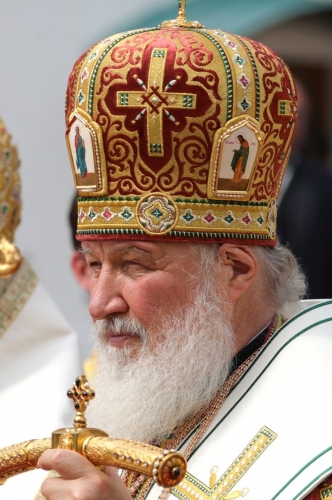
La grande instrumentalisation du sermon du patriarche orthodoxe
par Antonio Catalano
Source : Antonio Catalano & https://www.ariannaeditrice.it/articoli/la-grande-strumentalizzazione-del-sermone-del-patriarca-ortodosso
- La7 : "Sermon choquant. Kirill : "C'est une guerre juste contre le lobby gay".
- Famiglia Cristiana : "Le triste sermon du patriarche de Moscou : ces mots que nous n'aurions pas préféré entendre".
- Il Mattino : "Sermon choquant : La guerre en Ukraine est contre ceux qui soutiennent les gays".
- Il Giorno : "Kirill : la guerre est juste, elle est contre le lobby gay".
- La Stampa : "Sermon choquant : Droit de combattre, résister au lobby gay'".
- Ansa : "Kirill, droit de se battre, c'est contre le lobby gay".
- Il Giornale : "Délire mystique du patriarche orthodoxe : "La guerre est juste, écrasons le lobby gay"".
- Sky Tg24 : "Droit de se battre, c'est contre le lobby gay"".
- Il Corriere : "Kirill : la guerre est juste, combattons le lobby gay".
- Il Fatto : "Choqué par les propos du patriarche Kirill sur les homosexuels".
Je vais m'arrêter d'énoncer les titres de nos journaux en Italie, mais je pourrais continuer, tant la liste est longue. Ne voit-on pas clairement comment se forme la soi-disant "opinion publique"? Par ailleurs, quand on fait la guerre... à la guerre comme à la guerre... la guerre est menée avec tous les moyens disponibles, sans jamais être subtile, même en couvrant le David de Michel-Ange d'un tissu noir. Je ne suis pas choqué que la presse à l'esprit unique fasse son travail, mais ceux qui veulent aller plus loin ne peuvent se contenter de boire l'eau empoisonnée qui nous est offerte dans un cycle continu par l'information dite "libre". Par souci d'honnêteté, je me dois de signaler dans la presse nationale une réflexion calme et argumentée de Francesco Borgonovo dans la Vérità d'aujourd'hui.
J'ai cherché le texte sur le web, ce n'était pas facile, on ne trouve que des phrases citées dans les journaux, alors je suis allé directement sur le site du Patriarche et, grâce au traducteur (la traduction n'est donc pas très bonne), j'ai lu le texte complet du sermon (deux pages, c'est court, je le rapporte dans les commentaires). Comme quiconque veut le vérifier, le sermon de Kirill ne contient pas la phrase "cette guerre est contre ceux qui soutiennent les gays", ni, comme le dit le Corriere, que le patriarche de Moscou "a prié pour la souffrance des soldats. Les soldats russes, on suppose".
Dans le sermon du patriarche de Moscou, il est surtout question d'une "lutte métaphysique". À un moment donné, en effet, il déclare que "tout ce qui précède indique que nous sommes entrés dans une lutte qui n'a pas une signification physique, mais métaphysique".
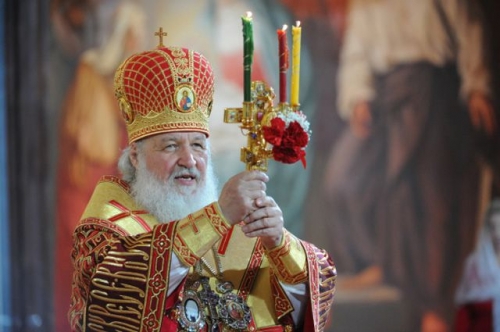
Cela n'enlève rien au fait qu'après avoir parlé du Carême comme d'un printemps spirituel, il déclare : "Mais nous savons que ce printemps a été éclipsé par de graves événements liés à la détérioration de la situation politique dans le Donbass, que constitua pratiquement le déclenchement des hostilités". Kirill attribue donc le déclenchement des hostilités à la "détérioration de la situation dans le Donbass". En d'autres termes, de la guerre de "basse intensité" menée depuis huit longues années et qui a fait 8000 morts, et dont notre presse "libre" a toujours fait semblant de ne pas voir. Kirill dit que depuis huit ans, on tente de détruire ce qui existe dans le Donbass. "Et dans le Donbass, il y a un rejet, un rejet fondamental des soi-disant valeurs qui sont proposées aujourd'hui par ceux qui prétendent au pouvoir mondial". Passage ignoré par la plupart de nos journaux.
Le patriarche aborde ensuite la question que les gens de presse, et ceux qui les lisent, feignent de ne pas en comprendre la haute valeur symbolique. "Aujourd'hui, il y a un tel test pour la loyauté de ce gouvernement [= le pouvoir mondial], une sorte de transition vers ce monde 'heureux', le monde de la surconsommation, le monde de la 'liberté' visible." Mais quel est ce test, demande le patriarche. "Le test est très simple et en même temps terrible : il s'agit d'une parade gay. Les demandes faites à de nombreuses personnes d'organiser une parade gay sont un test de loyauté envers ce monde très puissant ; et nous savons que si les gens refusent ces demandes, alors ils n'entrent pas dans ce monde, ils en deviennent des étrangers".
Eh bien, je ne pense pas qu'il ait dit quoi que ce soit de scandaleux. Ce n'est pas un mystère que la "gay pride" est utilisée comme un cheval de Troie pour pénétrer en territoire "ennemi". Un peu comme les incursions des Pussy Riot ou des ONG, sans surprise, généreusement soutenues par des magnats occidentaux. La religion libérale progressiste a ses rites de passage, et malheur à ceux qui les rejettent. L'East Journal l'a candidement écrit en 2020, en consacrant un article aux droits des LGBT et en déclarant qu'"en Ukraine, en Moldavie et en Géorgie, l'adoption de lois anti-discrimination a été un critère essentiel pour la signature d'accords d'association et de libéralisation des visas entre ces pays et l'UE". Le même article soulignait que ces "avancées législatives" avaient toutefois eu lieu "principalement sur le papier", et ajoutait de lourdes critiques à l'égard du gouvernement de Kiev, qui était manifestement réfractaire aux applications.
Mais revenons à Kirill. "Les parades gay sont conçues pour montrer que le péché est l'une des variantes du comportement humain. C'est pourquoi, pour rejoindre le club de ces pays, vous devez organiser une gay pride. Pas pour avoir fait une déclaration politique, pas pour avoir signé des accords, mais pour avoir organisé une parade gay. Et nous savons comment les gens résistent à ces demandes et comment cette résistance est réprimée par la force. Cela signifie qu'il s'agit d'imposer par la force un péché condamné par la loi de Dieu, et donc d'imposer par la force aux gens la négation de Dieu et de sa Vérité".
Le patriarche de Moscou et de toute la Russie, en tant que prêtre chrétien, avait auparavant rappelé, toujours dans le sermon, qu'en entrant dans le champ du Grand Carême, "essayons de pardonner à tout le monde". "Par notre pardon, nous confions nos délinquants entre les mains de Dieu, afin que le jugement et la miséricorde de Dieu puissent s'exercer sur eux. Pour que notre attitude chrétienne envers les péchés, les déceptions et les insultes des hommes ne soit pas la cause de leur mort, mais que le juste jugement de Dieu s'exerce sur tous".
Il n'est pas nécessaire d'être d'accord avec les paroles de Kirill, chacun peut faire ce qui lui convient, mais il est évident que nous sommes confrontés à une manipulation des paroles du patriarche. Avec son sermon, Kirill n'ajoute rien de nouveau à ce qui a déjà été dit en d'autres occasions. Le patriarche veut creuser une tranchée pour défendre cette "âme" russe que le progressisme libéral "occidental" entend anéantir pour pouvoir vagabonder dans cet immense espace libre comme au temps d'Eltsine. Un Occident qui se renie en reniant son histoire, sa civilisation, sa culture profondément imbriquée dans le monde russe, qui est prêt à tout perdre sauf son "âme".
04:18 Publié dans Actualité, Affaires européennes | Lien permanent | Commentaires (0) | Tags : religion, orthodoxie, patriarcat de moscou, russie, ukraine, europe, affaires européennes, politique internationale |  |
|  del.icio.us |
del.icio.us |  |
|  Digg |
Digg | ![]() Facebook
Facebook
Les limites de la patience russe
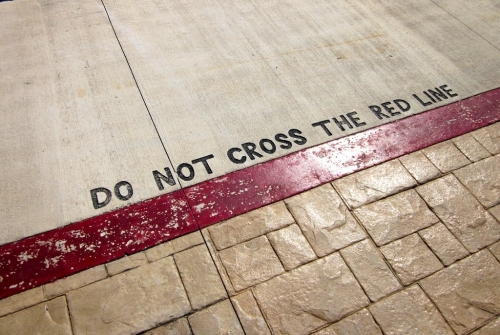
La limite de la patience russe
Par Claudio Mutti
Source: https://www.eurasia-rivista.com/il-limite-della-pazienza-russa/
"Patrie de la patience, terre des Russes !"
Fyodor Ivanovič Tjutčev
Il y a environ trente ans, en 1993, le politologue américain John Mearsheimer posait l'éclatement d'un conflit entre la Russie et l'Ukraine comme inévitable. "La situation, écrit-il dans Foreign Affairs, est mûre pour qu'une vive rivalité sécuritaire éclate entre les deux pays. Les grandes puissances divisées par une ligne frontalière très large et non protégée, comme celle qui sépare la Russie et l'Ukraine, entrent souvent en conflit poussées par la crainte pour leur propre sécurité. La Russie et l'Ukraine pourraient surmonter cette dynamique et apprendre à vivre ensemble en harmonie, mais une telle solution serait très inhabituelle (1).
A cette approche, basée sur un modèle "étatiste" de l'école réaliste, Samuel Huntington reproche d'ignorer le fait historique des "liens historiques, culturels et personnels étroits qui unissent la Russie et l'Ukraine et le fort degré d'assimilation mutuelle qui existe entre les populations des deux pays" [2] ; soulignant plutôt la "profonde césure culturelle qui divise l'Ukraine orthodoxe orientale et l'Ukraine uniate occidentale" [3], le théoricien du "choc des civilisations" a appelé à envisager la possibilité d'une scission du pays en deux parties, mais a jugé improbable une guerre russo-ukrainienne.
Presque simultanément, l'ancien conseiller à la sécurité nationale Zbigniew Brzezinski, se référant ouvertement à la célèbre formule de Sir Harold Mackinder ("Celui qui gouverne l'Europe de l'Est gouverne le cœur du monde ; celui qui gouverne le cœur du monde gouverne le monde insulaire [4] ; celui qui gouverne le monde insulaire gouverne le monde" [5]), a illustré la fonction stratégique fondamentale qu'une Ukraine séparée de la Russie pourrait jouer pour faciliter le renforcement du contrôle américain sur l'Eurasie.
"L'Ukraine, nouvel espace important sur l'échiquier eurasien", a soutenu Brzezinski dans Le Grand Échiquier, "est un pivot géopolitique parce que son existence même en tant que pays indépendant contribue à transformer la Russie. Sans l'Ukraine, la Russie cesse d'être un empire eurasien. (...) Si Moscou reprend le contrôle de l'Ukraine, avec ses cinquante-deux millions d'habitants et ses grandes ressources, ainsi que l'accès à la mer Noire, la Russie trouve automatiquement un moyen de devenir un puissant État impérial, s'étendant sur l'Europe et l'Asie" [6].
La "géostratégie pour l'Eurasie" [7], proposée par Brzezinski aux États-Unis, impliquait donc qu'il fallait à tout prix empêcher Moscou d'exercer son hégémonie sur sa sphère d'influence historique. L'Ukraine, à laquelle Brzezinski a assigné la fonction de bloquer la Russie à l'ouest et au sud, est ainsi devenue le "bouclier défensif" de l'Europe centrale (un concept réitéré dans les mêmes termes, vingt-cinq ans plus tard, par le président ukrainien Volodymyr Zelensky à la Conférence de Munich sur la sécurité [8]) ; une autre tâche de l'Ukraine serait de maintenir le Belarus sous un contrôle constant. Enfin, bien que Brzezinski se soit rendu compte que la Russie aurait "incomparablement plus de mal" [9] à accepter l'entrée de l'Ukraine dans l'alliance militaire hégémonisée par les États-Unis, Kiev fournirait à l'OTAN des bases militaires et lui garantirait l'accès à la mer Noire. Ainsi, avec l'affaiblissement de la Russie, l'Ukraine aurait été le canal permettant de relier le bloc occidental à la région de la Transcaucasie et lui aurait donc permis de menacer la République islamique d'Iran à bout portant.
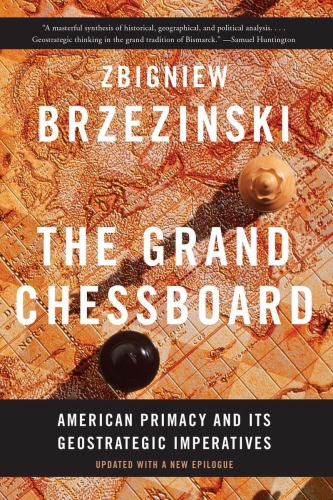
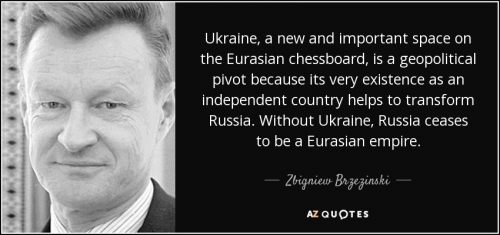
Le projet élaboré par Brzezinski constitue le contexte stratégique du document que l'OTAN et l'Ukraine ont elles-mêmes signé en 1997 pour formaliser leur partenariat. Dans ce document, on peut lire que "le rôle positif de l'OTAN consiste à maintenir la paix et la stabilité en Europe, à promouvoir une plus grande confiance et une plus grande transparence dans la zone euro-atlantique, et à ouvrir la coopération avec les nouvelles démocraties d'Europe centrale et orientale, dont l'Ukraine est une partie inséparable". Plus tard, en novembre 2002, les relations entre l'OTAN et l'Ukraine seront approfondies et élargies avec l'adoption du plan d'action OTAN-Ukraine, "qui renforce les activités de réforme de l'Ukraine en vue de sa pleine intégration dans les structures de sécurité euro-atlantiques" [10].
Dans le projet géostratégique de Brzezinski, le rôle attribué à l'Ukraine s'inscrivait dans un panorama européen caractérisé par l'élargissement de l'OTAN à l'Est et l'élargissement complémentaire de l'Union européenne, "tête de pont géopolitique essentielle de l'Amérique en Eurasie"[11]. L'élargissement de l'Union européenne n'aurait donc pas dû inquiéter outre mesure la Maison Blanche, bien au contraire. "Une Europe plus grande - a assuré Brzezinski - élargira le champ de l'influence américaine (...) sans créer en même temps une Europe, si intégrée politiquement qu'elle pourrait bientôt défier les États-Unis dans des affaires géopolitiques de grande importance pour l'Amérique ailleurs dans le monde, notamment au Moyen-Orient" [12].
En offrant à l'Ukraine la perspective d'adhérer à l'Union européenne, en s'ingérant sans vergogne dans les affaires ukrainiennes pour aider les subversifs de Maïdan à transformer l'Ukraine en un pays hostile à la Russie, en apportant un soutien politique et militaire au régime issu du coup d'État, et en soutenant les initiatives anti-russes des administrations américaines, l'Union européenne et les gouvernements de certains pays européens ont activement collaboré à la consolidation de la "tête de pont démocratique" requise par le projet américain de pénétration du continent eurasien.
Enfin, après plus de 20 ans de patience, la Russie a été contrainte de réagir. Même un ancien soldat de l'OTAN, le général Marco Bertolini [13], a admis: "Les États-Unis ne se sont pas contentés de gagner la guerre froide, ils ont également voulu humilier la Russie en prenant tout ce qui se trouvait d'une certaine manière dans leur zone d'influence. La Russie a vu les États baltes, la Pologne, la Roumanie et la Bulgarie entrer dans l'OTAN : face à l'Ukraine, qui lui aurait ôté toute possibilité d'accès à la mer Noire, elle a réagi" [14].
Bien avant de franchir le Rubicon, Vladimir Poutine avait averti l'Occident. Déjà en 2007, lors de la conférence annuelle sur la sécurité de Munich, il avait dénoncé le caractère agressif et provocateur de l'expansion de l'OTAN. En Bulgarie et en Roumanie, dit-il, il y a des bases américaines dites avancées avec environ cinq mille hommes chacune. Il s'avère que l'OTAN a déployé ses forces avancées en direction de nos frontières, tandis que nous, tout en continuant à remplir nos engagements en vertu du traité [15], nous ne réagissons en aucune façon. Je pense qu'il est évident que l'expansion de l'OTAN n'a rien à voir avec la modernisation de l'Alliance elle-même ou la sécurisation de l'Europe. Au contraire, elle représente un sérieux facteur de provocation qui réduit le niveau de confiance mutuelle. Et nous avons le droit de demander : contre qui cette expansion a-t-elle lieu ? Et qu'est-il advenu des déclarations faites par nos interlocuteurs occidentaux après la dissolution du Pacte de Varsovie ? Où sont ces déclarations aujourd'hui ?" [16].
NOTES
[1] John J. Mearsheimer, "The Case for a Nuclear Deterrent", dans Foreign Affairs, n° 72, été 1993, p. 54.
[2] Samuel P. Huntington, Le choc des civilisations et le nouvel ordre mondial, Garzanti, Milan 2001, pp. 38.
[3] Samuel P. Huntington, op. cit. p. 39.
[4] L'île-monde est, pour Mackinder, la masse continentale qui comprend l'Europe, l'Asie et l'Afrique.
[5] "Qui gouverne l'Europe de l'Est commande le Heartland ; qui gouverne le Heartland commande l'île-monde ; qui gouverne l'île-monde commande le monde" (H. J. Mackinder, Democratic Ideals and Reality. A Study in the Politics of Reconstruction, [1919, 1942], National Defense University, Washington 1996, p. 106.
[6] Zbigniew Brzezinski, The Grand Chessboard. American Primacy and Its Geostrategic Imperatives, Basic Books, New York 1997, p. 46.
[7] Zbigniew Brzezinski, op. cit. p. 197.
[8] "L'Ukraine est le 'bouclier de l'Europe' contre l'armée russe. C'est ce qu'a déclaré le président ukrainien Volodymyr Zelensky lors de la conférence sur la sécurité de Munich" (ANSA, Berlin, 19 février 2022).
[9] Zbigniew Brzezinski, op. cit. p. 121.
[10] https://www.nato.int/docu/sec-partnership/sec-partner-it.pdf
[11] Zbigniew Brzezinski, "A Geostrategy for Eurasia", Foreign Affairs, septembre-octobre 1997, p. 53.
[12] Zbigniew Brzezinski, op. cit, p. 199.
[13] Le général Marco Bertolini était, entre autres, le chef d'état-major de la "force d'extraction" de l'OTAN en République de Macédoine (ARYM) pour la récupération éventuelle des vérificateurs de l'OSCE au Kosovo.
[14] www.liberoquotidiano.it, 24 février 2022.
[15] Le Traité adapté sur les forces armées conventionnelles en Europe, signé en 1999.
[16] Discours de Vladimir Poutine à la 43e Conférence de Munich sur la sécurité, Eurasia. Journal of Geopolitical Studies, 2/2007, p. 251.
02:58 Publié dans Actualité, Affaires européennes, Géopolitique | Lien permanent | Commentaires (0) | Tags : zbignew brzezinski, géopolitique, russie, ukraine, europe, affaires européennes, politique internationale |  |
|  del.icio.us |
del.icio.us |  |
|  Digg |
Digg | ![]() Facebook
Facebook



